Hummingbirds of Ecuador's Andean Cloud Forest
Of the over 1,600 species of birds found in Ecuador, at least 130 are hummingbirds. Given the variety of sizes, shapes and colors, it is easy to see why hummingbirds are known as “flying jewels” and “living rainbows.” For many wildlife photographers, they are among the most challenging and most fascinating photography subjects. And capturing their crisp image—in flight as they sip nectar from a colorful blossom—is a peak experience for any wildlife shooter.

This trip could easily be titled “Hummingbird Insanity!” From the moment you step out onto the deck of our Ecuadorian cloud forest lodge, scores of hummingbirds buzz around your head! Simultaneously, at each of four strategically placed hummingbird feeding stations, 25 or more birds of 15 to 20 different species vie for position at a feeding port on a feeder. Jewel-tone feathers flash in the light and the air vibrates with sound as the birds fly in all directions. It is, perhaps, the most incredible hummingbird spectacle in the world!
Requiring over 100 pounds of sugar per week (75 to 100 US gallons of mixed sugar water) these high-volume hummingbird feeders afford an amazing opportunity for exceptional bird photography. It is no wonder that this region is sometimes referred to as “Hummingbird Heaven.”
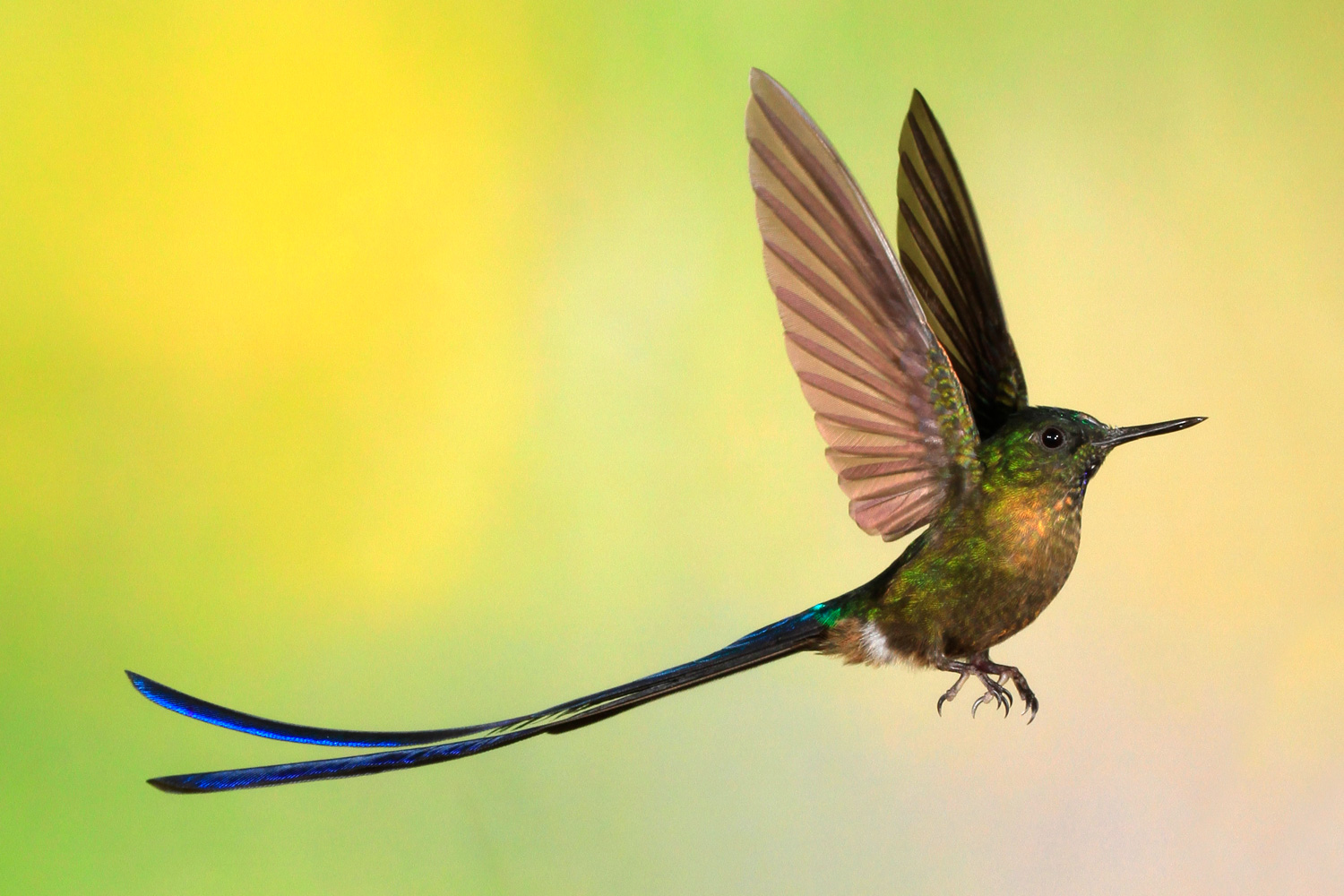
Photographing hummingbirds presents several unique challenges. Most noticeably, they are small and very, very fast. Focusing on them seems difficult, and shooting them “frozen” in flight requires advanced flash equipment. To make our hummingbird photography sessions the best possible experience, we have invested in several high quality multiple flash systems that allow high speed shooting with a deep depth of field to get the entire bird in focus, plus a light-balanced background.
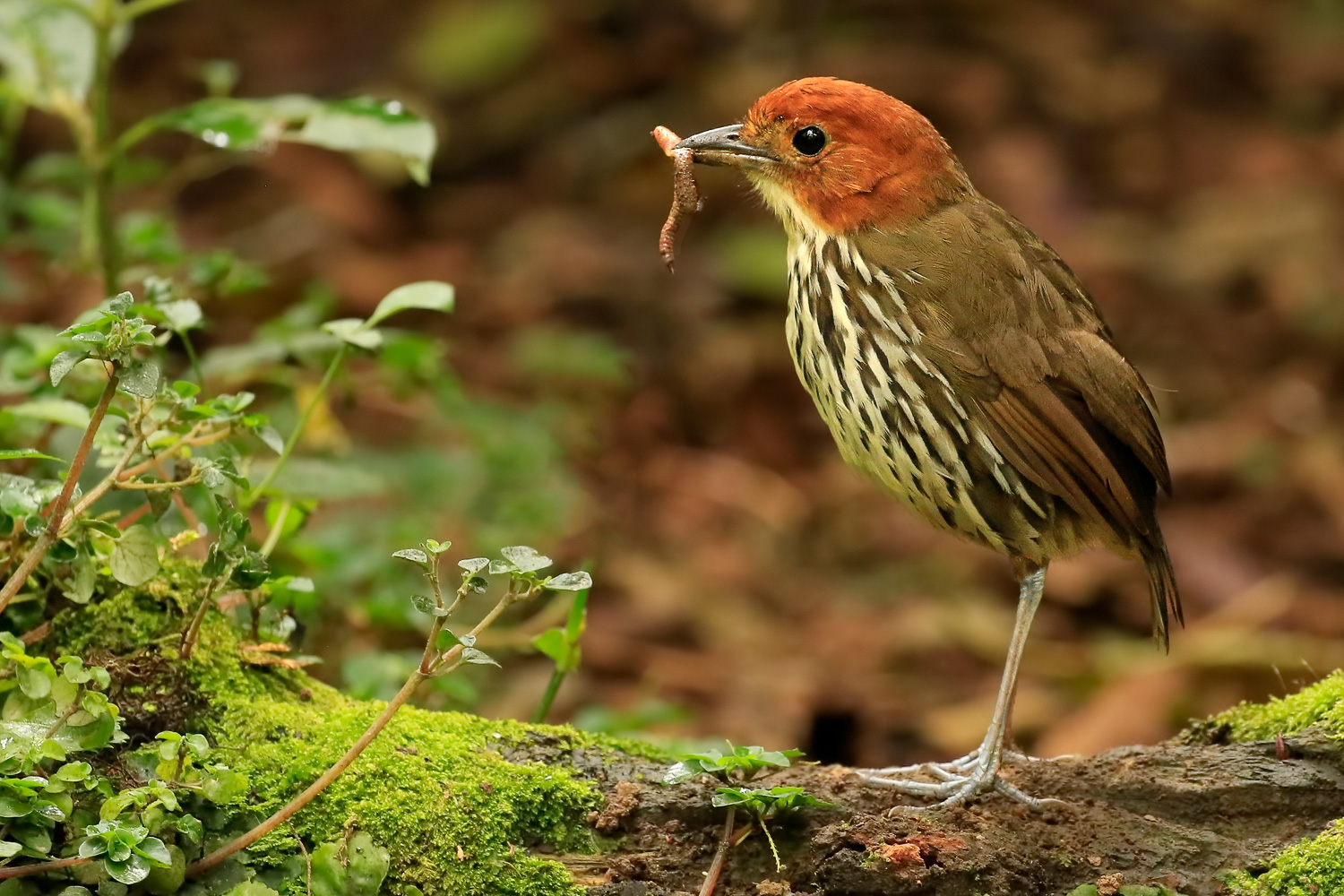
There is no need to worry about gear compatibility. It is easy to sync your 35mm DSLR or mirrorless camera to our equipment—each photographer will trigger the flash units via radio transmitter in the hot shoe of their camera—and virtually any brand of camera will work. You must supply a camera, lens (a 100-400mm is best or a 70-200mm is within optimal focal length for our hummingbird flash set-ups), an electronic cable release and a tripod. Longer lenses, like a 500mm and a dedicated flash unit compatible with your camera body (and a spare if possible), are useful to photograph perched hummingbirds away from our flash set-ups, as well as birds like tanagers, euphonias, trogons, toucanets, barbets and other species that come to fruit-filled feeders and insect-attracting lights placed around the lodge.
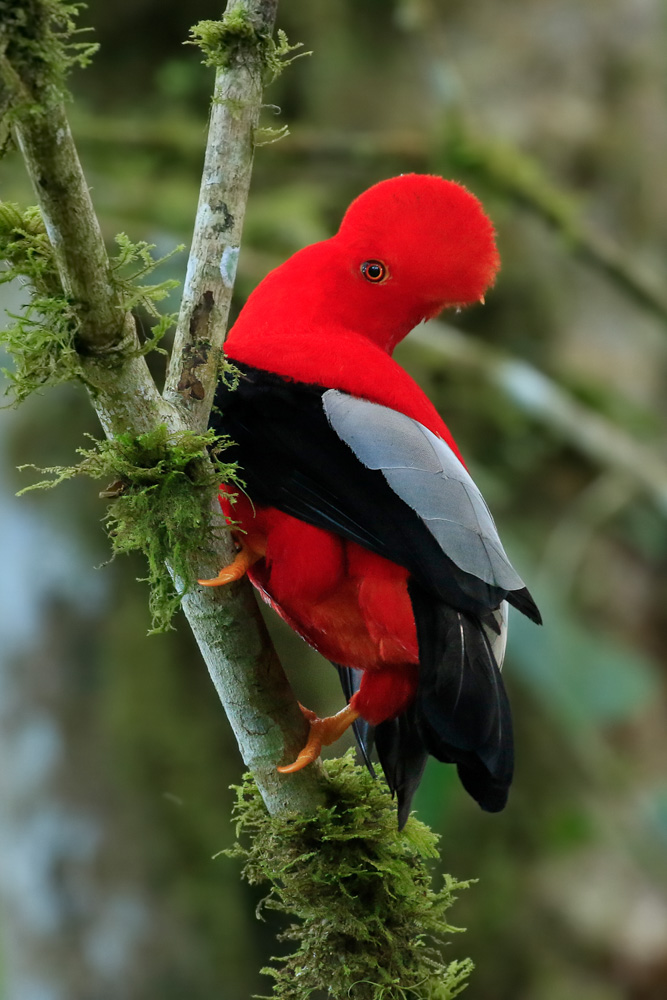
To give us a break from the intensity of the frenzied hummingbird shoots, we have scheduled one morning to photograph spectacular polygamous Andean cock-of-the-rock, as the deeply red males ritualistically display to females at a communal lek. This is followed by an afternoon visit to a local wildlife reserve—also well-stocked with bird feeders.
Along with photos of over two dozen hummingbird species possible at our two lodge locations— birds flying, perched and feeding on nectar from colorful flowers—you learn the techniques to set up your own multi-flash system at home. You learn the proper camera and flash settings, how to set up flowers and natural looking perches—and have fun and be wowed while sitting amidst an unbelievable squadron of more than 100 hummingbirds!

Tour Itinerary
Day 1 (Oct 23) Depart home for Quito, Ecuador. Transfer to our hotel with the majority of the arriving participants or arrange private transportation through our office.
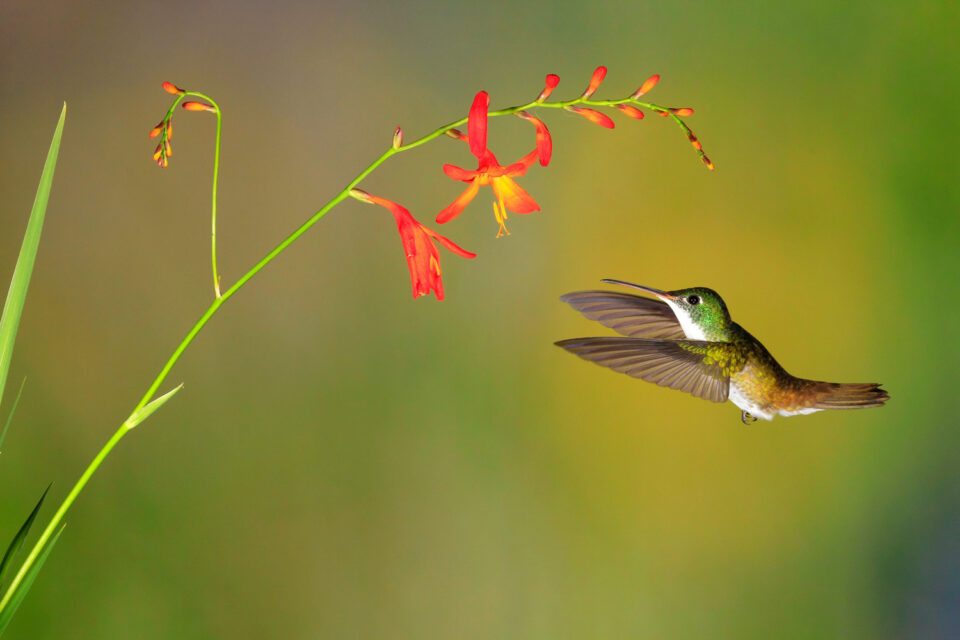
Days 3 - 4 Each morning, we may have the opportunity to photograph the first of 5 possible species of antpitta that we should encounter over the coming days. Though our east-slope lodge may not have the sheer numbers of hummingbirds that we will see later at our west-slope lodge, it does offer several higher altitude species like mountain velvetbreast, tourmaline sunangel, chestnut-breasted coronet, golden-breasted and glowing puffleg, white-bellied woodstar, plus the beautiful long-tailed sylph and a host of other birds that are easily found nearby.
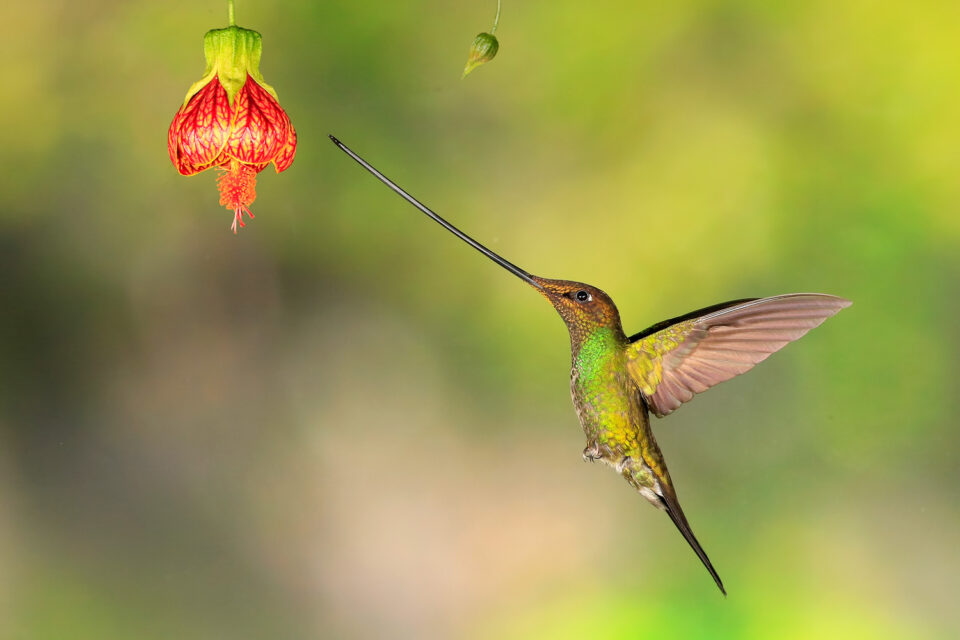
Days 5 - 6 Following breakfast we head to the western foothill slopes of the Andes. Our destination is the Tandayapa Valley, home to one of the most amazing diversity of hummingbirds in the world. Following lunch we set up our multi-flash systems as some photographers shoot perched hummingbirds with their flash mounted atop their camera. At 5,740 feet (1,750 meters), our lodge is located in the heart of the western slope of the Andean cloud forest. Here, amidst more than 100 hummingbirds vying for a position at the feeders, it is possible to see more types of hummers in a 5-minute period than all of the hummingbird species in the United States and Canada! Following breakfast we move to the hummingbird flash set-ups. Except when we take a break for lunch, the flash set-ups (each accommodates two photographers) are available throughout the day on a rotational basis in case one set-up is favored by one species or another. We also shoot a variety of beautifully colored tanagers, barbets, toucanets and other cloud forest species that come to feed at fruit feeders located just outside the front door of our lodge. (BLD)
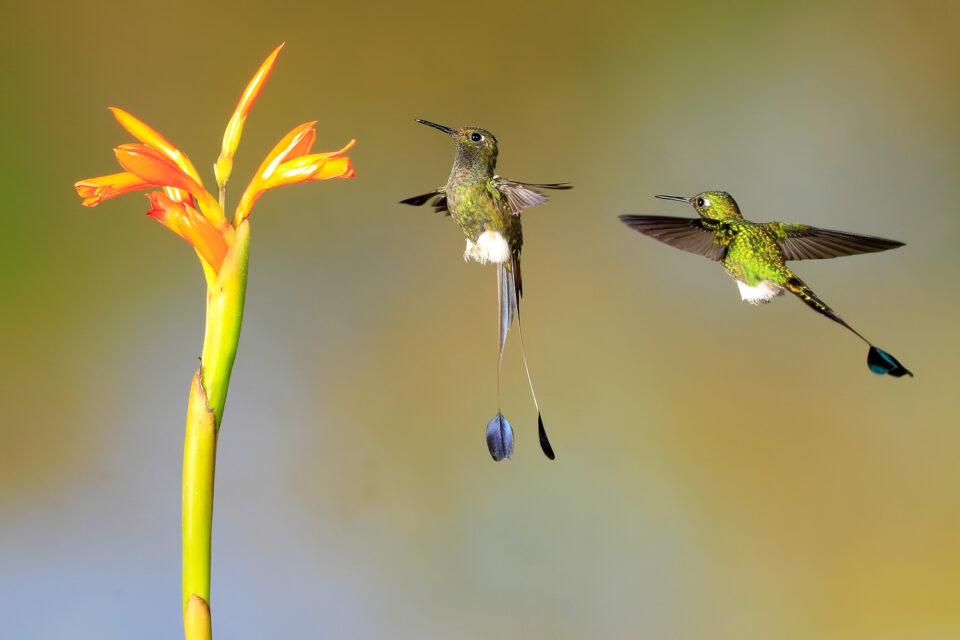
Depending on weather, and when space is available to us in the bird blind, we have two half-day side trips planned. The first will be to a “bird sanctuary” that maintains both hummingbird feeders as well as fruit feeders. Both can be quite productive. We are at a lower elevation at this sanctuary so we will see several new hummingbirds that we will not see at the lodge, including white-necked Jacobin, white-whiskered hermit and green thorntail. The fruit feeders are regularly visited by crimson-rumped toucanets, rufous motmots and a variety of tanagers and euphonias. We have lunch at a local restaurant overlooking a deep river valley. This restaurant also has fruit and hummingbird feeders that are always busy with birds. After lunch, we return to our lodge and shoot the rest of the day at our hummingbird setups.
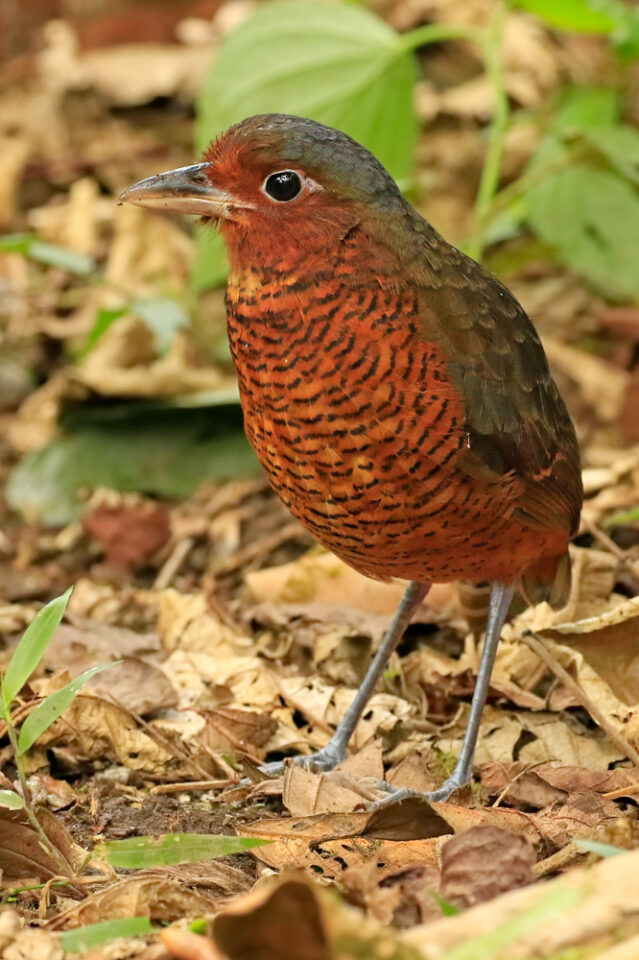
If the weather and the creatures of the night cooperate, we will spend one night photographing bats as they come to our feeders and flowers to feed. This is a unique opportunity and requires no special equipment on the part of the photographers. Our leader brings the flashes and triggering system. You just supply the camera, tripod, lens (zooms work the best), and locking, wired shutter release. This is the exact same equipment used for photographing hummingbirds at our stations. (BLD)
Day 10 We spend the morning shooting around the lodge. After lunch, we head to our downtown Quito hotel. We meet for our farewell dinner at the hotel restaurant before retiring to our rooms to download images and pack. (BLD)
Day 11 (Nov 2) We depart for home. (B)
Tour Details
2024 Hummingbirds of Ecuador’s Andean Cloud Forest: Easy Activity Level: Small bus transportation. Photograph hummingbirds on lodge patio flash set-ups 30 feet from the dining room door. Occasional easy walks to fruit feeding stations attracting other showy neotropical bird species. Requires climb of two flights of stairs to initially reach the hillside lodge from its parking lot.
Special Terms and Conditions Apply
Tour Highlights
- Learn to use high-speed flash techniques to capture crisp images of hummingbirds frozen in flight as they sip nectar from colorful tropical flowers
- Discover how to arrange and position flowers and attractive natural perches with pleasing soft backgrounds
- Photograph more than 25 species of hummingbirds that dwell around our two lodges situated at different elevations in cloud forest habitat
- Sync your camera to our brand-new state-of-the-art equipment set-ups
- Includes all meals, lodging, ground transportation, entrance fees, photo guide, use of flash units and instruction
Tour Leaders
Mark thomas.

YouTube Video
Testimonials
The Ecuador hummingbird tour was a fun and productive trip. Mark Thomas is a great group leader offering solid instruction, good humor, and tireless enthusiasm! — K. Canning
Great birds, great guide, great photos! —P. Gallagher
Excellent trip!! Mark really works hard to help everyone maximize their experience. —C. Clark
Days 3 – 4 Each morning, we may have the opportunity to photograph the first of 5 possible species of antpitta that we should encounter over the coming days. Though our east-slope lodge may not have the sheer numbers of hummingbirds that we will see later at our west-slope lodge, it does offer several higher altitude species like mountain velvetbreast, tourmaline sunangel, chestnut-breasted coronet, golden-breasted and glowing puffleg, white-bellied woodstar, plus the beautiful long-tailed sylph and a host of other birds that are easily found nearby.
Days 5 – 6 Following breakfast we head to the western foothill slopes of the Andes. Our destination is the Tandayapa Valley, home to one of the most amazing diversity of hummingbirds in the world. Following lunch we set up our multi-flash systems as some photographers shoot perched hummingbirds with their flash mounted atop their camera. At 5,740 feet (1,750 meters), our lodge is located in the heart of the western slope of the Andean cloud forest. Here, amidst more than 100 hummingbirds vying for a position at the feeders, it is possible to see more types of hummers in a 5-minute period than all of the hummingbird species in the United States and Canada! Following breakfast we move to the hummingbird flash set-ups. Except when we take a break for lunch, the flash set-ups (each accommodates two photographers) are available throughout the day on a rotational basis in case one set-up is favored by one species or another. We also shoot a variety of beautifully colored tanagers, barbets, toucanets and other cloud forest species that come to feed at fruit feeders located just outside the front door of our lodge. (BLD)
Joseph Van Os Photo Safaris Enrollment Information
2024 hummingbirds of ecuador’s andean cloud forest.
Oct 23 – Nov 02 2024
ENROLLMENT CONDITIONS 1. REGISTRATION A deposit and completed and signed Registration Form are required to reserve a place on a Van Os Photo Safari.
2. PAYMENTS, CANCELLATIONS AND REFUNDS All prices are quoted in US dollars and all payments must be paid in US dollars. For deposits only we accept Visa, MasterCard and American Express. Final payment of the trip fee is due 120 days prior to departure and may be paid by check or bank transfer. If you wish to make your final payment with a credit card a 3% convenience fee will be charged.
We must receive written notice of your cancellation. Based on the cancellation date the following applies:
Trip deposits are non-refundable . 150-91 days before the trip start date: We will refund any payments made exceeding 50% of the total trip cost. 90-61 days before the trip start date: We will refund any payments made exceeding 75% of the total trip cost. Within 60 days of the start of the trip: No refund.
If, on the trip start date , your space has been resold and the tour is full—as designated by “Limit” number of travelers on the tour website page—we will refund your payment, minus the non-refundable trip deposit and any discounts given to resell your space.
No partial refunds are made for unused portions or services of a trip for any reason. Trips are sold as a package only. This policy also applies to tour extensions and independent travel arrangements. Cancellation fees are not transferable.
Emergency evacuation insurance is REQUIRED for this tour. Upon request, we can provide travel insurance options that includes the required medical evacuation insurance. Participants purchasing trip insurance on their own should confirm that emergency evacuation is included in their policy.
3. TRIP INSURANCE We strongly encourage you to protect your travel investment and purchase a comprehensive travel insurance policy that includes emergency evacuation coverage. We can provide travel insurance options, or it can be purchased online. A CANCEL FOR ANY REASON policy is available. Trip participants without travel protection insurance are considered “self-insured.” Without insurance you assume all risks and losses for any conditions requiring your cancellation.
4. HEALTH CONSIDERATIONS Van Os Photo Safaris are within the capabilities of average people in good health. Some of these trips require the capability of walking for several miles over uneven trails, stepping from a small boat to a wave-washed rocky beach, flying in small planes and helicopters, and occasionally hiking at high elevations—all while carrying an assortment of camera equipment. If you have concerns about your own capabilities and/or fitness as it relates to a trip, please inquire with our office before reserving a space. By forwarding a signed Registration Form and trip deposit, you certify that you do not knowingly have any physical or other conditions of disability that would create a risk for you, or other trip participants and you agree to inform our office in writing if changes in your health, including viral illnesses, occur any time prior to the tour. We reserve the right to request a doctor's statement of good health. The company's or trip leader's judgment shall provide the ultimate determination of an individual's ability to embark upon or to continue a trip. Once a trip has been confirmed, medical circumstances will not be considered as exceptions to our cancellation policy. We assume no responsibility for medical care or for special dietary requirements. Tour members are asked to refrain from smoking with or near the group.
5. CONTACT SCHEDULE Participants will receive three emails before the trip departs: 1. Initial Tour Information sheet confirms the deposit and provides pre-departure information. 2. Invoice/Practical Information provides clothing and photo gear recommendations, climate data, and applicable health advisories. Visa information will also be included (if applicable). 3. Final Tour Information includes arrival instructions, itinerary revisions (if any), hotel addresses, trip telephone contact information and participant list. We provide the trip leader's telephone number(s) and/or email address with final documents so you can inquire about special photographic questions you may have regarding your trip. We welcome your calls or email messages to [email protected].
6. PHOTO SAFARI TRIP FEE INCLUSIONS Information supplied upon enrollment describes the specific details that are included in your trip fee. Generally, these include lodging in double room occupancy, all meals (specified in the itinerary as BLD denoting breakfast, lunch, or dinner), ground transportation during the trip in vans or small busses, internal tour air transportation as specified, meal and baggage tipping, and guide services provided by the trip leaders. Not included are airfare or other transportation from your home to the trip staging location, airport departure taxes, insurance, alcoholic beverages, and bar expenses (plus bottled water and soft drink expenses on international tours outside of North America), tips and gratuities to local guides, phone calls, passport or visa expenses, laundry, or items of a personal nature. Gratuities to Van Os Photo Safaris trip leaders are optional and always appreciated. Rates are based on group tariffs; if the trip does not have sufficient registration, a small party supplement may be charged.
Most of our trips are priced in double occupancy (shared) accommodations. Single accommodation is available for a supplemental cost in many locations; see the pre-departure trip information or call our office for details. You will be charged the single supplement fee if you desire single accommodation or if you wish to have a roommate, but one is not available. In some remote locations, clients with single rooms are infrequently compelled to share a room due to circumstances beyond our control. In such cases, appropriate per diem refunds will be made reflecting the direct cost of the single room at the facility where clients are required to share. There is no additional single supplement fee on ship-based cruises if you request a roommate and one is not available.
Cost increases may occur unexpectedly due to rising costs of airfares, ground transport, fuel surcharges, accommodations, and currency fluctuations, among others. Van Os Photo Safaris, Inc. may be compelled to amend prices, and we reserve the right to do so without prior notice. An increase in trip prices shall not be sufficient grounds for any refund of funds paid for the trip other than as determined by the terms of our cancellation policy.
7. LOGISTICS Whenever possible, our trip participants are lodged in comfortable, modern hotels. We select among the best available accommodations but refrain from extravagance. Some interesting photographic destinations are far removed from modern amenities, however, and where necessary we will be accommodated in rustic country inns, cabins, or tented camps.
Meals are always a special part of our trips for the camaraderie they engender and the opportunity they provide to try new foods from different areas. Depending on the trip and specific locale, participants order restaurant meals from the full menu or, less frequently, table d'hôte. Some trips include picnic lunches in the field. Fruit juice for breakfast and coffee or tea is included with the meals. Soft drinks are included with meals on tours within North America. Participants are responsible for their own bar tab (including bottled water, soft drinks, as well as alcoholic beverages on tours outside of North America) at restaurant lunches and dinners.
Our itineraries are intended as examples only. Participants should allow for flexibility due to changes in weather, natural history or cultural events, or other logistical arrangements deemed necessary by Van Os Photo Safaris, Inc., or our leaders.
The second tour leader (and any subsequent additional leaders) listed for each trip on the website will be added as the group size warrants. If only one space remains on a trip, and logistics permit, we accept two people traveling together, even if it exceeds the trip maximum.
8. RESPONSIBILITY Van Os Photo Safaris, Inc. and/or their Agents act only as agents for the passenger (trip participant) in regard to travel including, but not limited to, sightseeing, meals, lodging, transportation, and all other services whether by railroad, motor coach, automobile, van, boat, ship or aircraft or any other conveyance, and they assume no liability for injury, damage, loss, accident, delay or irregularity which may be occasioned for any reason whatsoever, or through the acts, bankruptcy or default of any company or person engaged in conveying the passenger or in carrying out the arrangements of the trip.
They can accept no responsibility for losses or additional expenses due to delay, cancellations or changes in flights or other tour services, and by force majeure including sickness, weather, strike, war, volcanic eruption, terrorist acts, political unrest, quarantine, epidemics, pandemics and outbreaks, or other causes. All such losses or expenses will have to be borne by the passenger, as trip fees provide for arrangements only for the times and locations stated. Baggage is at the owner's risk entirely.
The right is reserved to 1) substitute hotels of similar category for those indicated and to make any changes in the itinerary or transport where deemed necessary, or caused by changes in flight schedules or equipment substitution; 2) cancel any trip prior to departure due to low enrollment, in which case full refund of the paid trip funds will be given, but Van Os Photo Safaris, Inc. is not responsible for any other trip preparation expenses such as penalized or non-refundable air tickets, visa fees, travel insurance premiums and medical related expenses; 3) At the company’s sole discretion, suspend or postpone any trip due to force majeure or disease outbreak in which case the trip may be rescheduled, or a refund issued less any non-refundable deposits paid to tour component providers on behalf of the passenger, or a travel credit given, but Van Os Photo Safaris, Inc. is not responsible for any other trip preparation expenses such as penalized or non-refundable air tickets, visa fees and medical related expenses; 4) substitute trip leader(s) for the leader(s) originally specified, in which case the substitution is not a basis for participant cancellation or refund other than provided by our normal cancellation policy; or 5) accept or retain any person as a member of any trip.
Trip prices are based on tariffs and exchange rates in effect at the time of publication and are subject to adjustment in the event of any change therein.
A signed Registration Form with the Enrollment Conditions and Release and Assumption of Risk sections must be returned by each participant prior to the commencement of the trip. Participation by any trip member will be declined in the absence of the signed Registration Form including the Release and Assumption of Risk section, with no trip fee refund. No modification to the Registration Form including the Release and Assumption of Risk section will be accepted.
Should Van Os Photo Safaris, Inc., or anyone acting on their behalf be required to incur attorney's fees and any costs to enforce this agreement, the enrolling trip participant(s) agree(s) to indemnify and hold them harmless for all such fees and costs. In the event a lawsuit is filed, the enrolling participant(s) agree(s) to do so solely in the County of Lewis in the State of Washington.
ENROLLMENT CONDITIONS AGREEMENT & RELEASE & ASSUMPTION OF RISK
I have read, understand, and agree to the terms, conditions, and provisions of the enrollment information, as stated on the Van Os Photo Safaris Inc. website and the Enrollment Conditions section of this form, especially noting the policy on cancellations, refunds, and limitations on responsibility.
I am aware that during any trip or tour that I am voluntarily participating in under the arrangements of Van Os Photo Safaris, Inc., a Washington corporation, and its employees, agents and associates, certain risks and dangers exist while traveling in the United States, foreign countries, and wilderness areas in any country or territory that include the possibility of property damage, bodily injury, and death. There is a possibility of accident or illness occurring without access to immediate or timely medical treatment or facilities. There is a risk of tropical or communicable diseases that may require quarantine and removal from the tour at my expense, food-related illnesses, the risk of personal injury and property damage or delay or inconvenience by forces of nature, wildlife or wildlife models, quarantine, political instability, acts of terrorism, strikes, government restrictions or regulations change, thefts, and the risk of accidents during travel while on foot or by aircraft, train, automobile, van, bus, boat, ship, or other conveyance. I understand that such risks cannot be eliminated without jeopardizing the essential qualities of this trip or tour.
In consideration of, and as part payment for the right to participate in such trips, tours and/or other activities and services arranged for me by Van Os Photo Safaris, Inc., its employees, agents and associates, I have and do hereby assume all risks, and hereby release Van Os Photo Safaris, Inc., its employees, shareholders, agents and associates, and will hold them harmless from any and all liability, actions, causes of actions, debts, claims, and demands of every kind and nature, howsoever caused, which I now have or which may arise of or in connection with any of my trips or tours and participation in any activities arranged for me by Van Os Photo Safaris, Inc., its employees, agents and associates.
Should Van Os Photo Safaris, Inc., or anyone acting on their behalf, be required to incur attorney's fees and costs to enforce this Agreement, I agree to indemnify them and hold them harmless for all such fees and costs. In the event any lawsuit is filed, I agree to do so solely in the County of Lewis in the State of Washington and further agree that the substantive law of that state shall apply in that action without regard to the conflict-of-law rules of that state. The terms hereof shall serve as a release and assumption of all risk for myself, my heirs, executors, and administrators, and for all members of my family.
Van Os Photo Safaris, Inc. may take photos and video during your photo tour and use them for promotional purposes. By making a trip reservation with us, you agree to let us use your name and likeness in any images and video in which you may appear, for our promotional materials, website, or advertising. We may also use any written reviews or photos and video you may provide us with for use on our website and in any advertising and all other forms of publicity. If you prefer to be excluded from this proviso, please let your tour leader know at the beginning of your trip.
If any part, article, paragraph, sentence, or clause of this Agreement is not enforceable, the affected provision shall be curtailed and limited only to the extent necessary to bring it within the requirements of the law, and the remainder of the Agreement shall continue in full force and effect. I acknowledge that if anyone is hurt or property is damaged during my participation in this activity, I may be found by a court of law to have waived my right to maintain a lawsuit against Van Os Photo Safaris, Inc., its employees, shareholders, agents, and associates, based on any and all claims from which I have released them.

Hummingbird Photo Tour: Ecuador Cloud Forest Photography Tours
In Hummingbirds of Ecuador , Upcoming Workshops by Matt Shetzer May 26, 2022
April 27 - May 3, 2024 (SOLD OUT) Get on the waitlist.
May 10 - May 16, 2025 (SPACE AVAILABLE)
Important Details
- $4,995 USD per person
- Single supplement (private room) $500
Deposit: $1,000
Group Size: Max. 4 photographers—2 photographers per light setup.
Duration: 7 days, 6 nights
Skill Level: Beginner to pro
- Non-photographers get $250 off!
- Save $500.00 when you book this trip and a Galapagos Workshop: Galapagos Photo Workshop: West Galapagos Photo Tour: East .
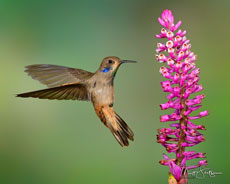
Over the course of the hummingbird photography workshop you will learn specialized techniques to create stunning images of hummingbirds as they feast on native flowers. In pursuit of this goal, we will journey over mountain passes and across the equator into Ecuador’s famous cloud forests.
Trip Discount: Save $500.00 when you book the Hummingbirds Photography Workshop with one of our Galápagos Photo Workshop: Galápagos West Galápagos East
Why Ecuador for our Hummingbird Photography Workshop?
Ecuador is home to over 120 species of hummingbirds and has the best hummingbird photography opportunities than any country in the world. The lodges across Ecuador have dedicated viewing areas for various species of hummingbirds and we visit several of the most impressive hummingbird lodges, where we will photograph a rainbow of hummingbird species.
See all the hummingbird species that can be seen in Ecuador.
You’ll experience incredibly comfortable weather in Ecuador, ranging from 50 to 80 degrees Fahrenheit during our trip, perfect for wildlife observation.
Small Groups Only! The best hummingbird photography is in small groups to maximize your time in the setups. Only 2 photographers per setup on this trip.
These lodges cater specifically to photographers, and have time-tested systems for attracting rare and diverse groups of hummingbirds, allowing our guests to capture many different species of hummingbirds without having to travel more than is necessary.
Although Ecuador is a beautiful country, our main purpose here is to photograph the birds!
How Do You Photograph Hummingbirds?
On this photography trip, we use advanced multi-flash setups to help us freeze these notoriously fast birds in their tracks.
We’ll be guide you in the cutting-edge, state-of-the-art techniques used to photograph hummingbirds.
These tiny birds can flap their wings up to 80 times a second, which can present quite the challenge for a photographer.
Images Taken on Our Photo Tours
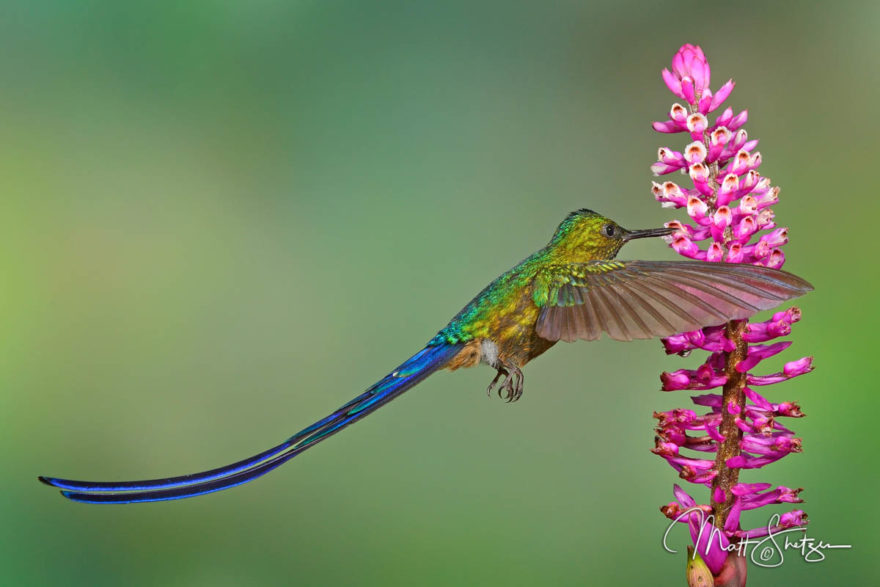
A violet-tailed sylph hummingbird drinks from a local flower in the Cloud forest.
We have perfected our hummingbird photography setup by using a series of seven to eight flashes synchronized by wireless radio transmitters. The multi-flash technique creates a strobe effect and freezes hummingbird wings in their tracks.
The effect is very impressive; you will notice details in your photos which would be impossible to observe in real life.
Topics we will cover:
- Master the Multi-Flash hummingbird light setup
- Balancing flash and natural light
- Natural light techniques for creating sharp and blurred wing images
- Priority exposures vs manual exposure – Benefits of each mode
- Different metering modes
- Techniques for sharp and high quality images
- Learn attractive compositions with local flowers
- Create natural looking images with flash
- Manual flash configuration to gain control
- Remote flash techniques and flash placement
- Focusing techniques for hummingbirds in flight
- Image post processing with Lightroom and Photoshop
- Best Photoshop Plug-ins to speed up post processing
Hummingbirds found at the lodges we visit
- Velvet-purple Coronet (Boissonneaua jardini)
- Sword-billed Hummingbird (Ensifera ensifera)
- Booted Racket-tail (Ocreatus underwoodii)
- Violet-tailed Sylph (Aglaiocercus coelestis)
- Long-tailed Sylph (Aglaiocercus kingii)
- Tourmaline Sunangel (Heliangelus exortis)
- Andean Emerald (Amazilia franciae)
- Brown Inca (Coeligena wilsoni)
- Brown Violetear (Colibri delphinae)
- Buff-tailed Coronet (Boissonneaua flavescens)
- Buff-winged Starfrontlet (Coeligena lutetiae)
- Chestnut-breasted Coronet (Boissonneaua matthewsii)
- Collared Inca (Coeligena torquata)
- Fawn-breasted Brilliant) (Heliodoxa rubinoides)
- Glowing Puffleg (Eriocnemis vestita)
- Gorgeted Woodstar (Chaetocercus heliodor)
- White-whiskered hermit (Phaethornis yaruqui)
- Lesser Violetear (Colibri cyanotus)
- Green-crowned Brilliant (Heliodoxa jacula)
- Mountain Velvetbreast (Lafresnaya lafresnayi)
- Purple-bibbed Whitetip (Urosticte benjamini)
- Purple-throated Woodstar (Callipholox mitchellii)
- Rufous-tailed Hummingbird (Amazilia tzacatl)
- Shining Sunbeam (Aglaeactis cupripennis)
- Sparkling Violetear (Colibri coruscans)
- Speckled Hummingbird (Adelomyia melanogenys)
- Tawny-bellied hermit (Phaethornis syrmatophorus)
- Tyrian Metaltail (Metallura tyrianthina)
- Wedge-billed Hummingbird (Schistes geoffroyi)
- Western Emerald (Chorostilbon melanorhynchus)
- White-bellied Woodstar (Chaetocercus mulsant)
- White-necked Jacobin (Florisuga mellivora)
- Empress brilliant (Heliodoxa imperatrix)
- Green-crowned woodnymph (Thalurania colombica fannyi)
We encourage hummingbird enthusiasts and photographers of all skill levels to join us on our Hummingbird Photography Workshop.
See Even More Hummers: Book your spot on our other hummingbird photography workshop to explore more hummingbird hotspots!
Upcoming Photography Workshops
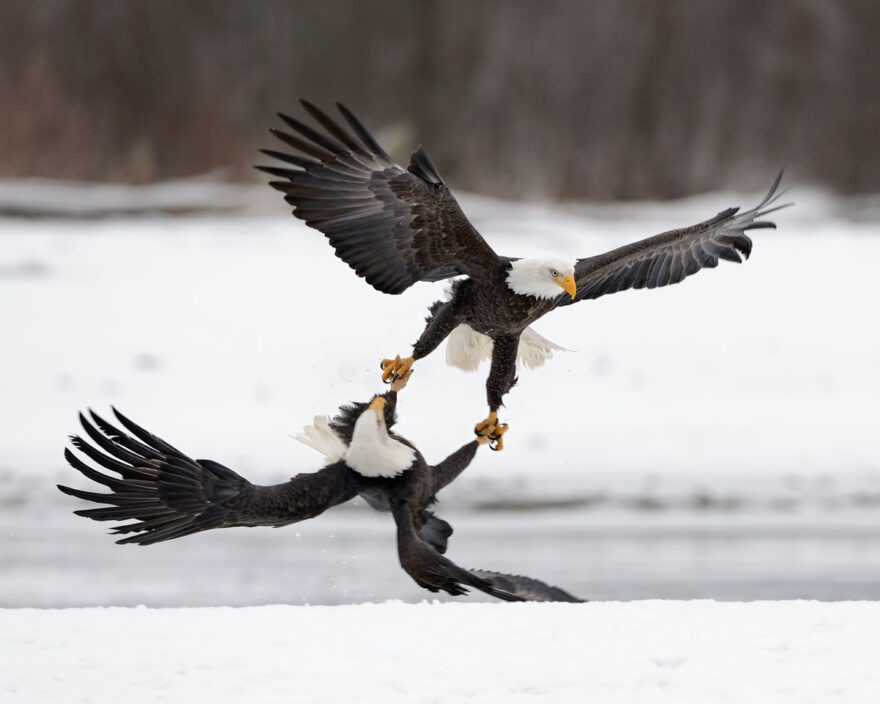
- Photography Workshop Questionnaire
- Images Index
- Photography Tip Index
- Videos Index
- News Article Index
- Trip Report Index
- Image Categories
- Colorado Fall Colors Photo Workshop
- South Texas Bird Photography Workshop
- Drone Day Aerial Photography Workshop
- Fundamentals of Photography – Registration
- Fundamentals of Photography Course

Custom and Set-Departure Bird & Wildlife Tours Around the World
Ecuador: hummingbird extravaganza - gems of the andes, tour overview:.
Ecuador is located on the most diverse land mass in the World, South America, which is known as the Bird Continent, by virtue of its massive bird list of nearly 3500 species that contains more than 30% percent of the World birds. Some bird groups are very conspicuous there, and very well represented, with perhaps none more so than the hummingbirds. There are no less than 132 species of hummingbirds in Ecuador, or 40% of all the World hummingbirds! While neighboring Colombia holds a handful more, one of the advantages of trying to stack up a decent hummingbird list in Ecuador is its size, it is a small country, akin to the size of the US state of Colorado (Colombia is much larger), and it has a good road network, and a wonderful system of birding lodges, many of which can be visited on a relatively short visit. In short, hummingbirds are extremely accessible in Ecuador and getting a long list of hummingbirds on a single visit is very easy and illustrated well on this hummingbird-focused tour. The highest diversity of hummingbirds on Earth is found in the Andes so that is where we will spend the entirety of the tour, on all three parts. The tour takes the form of three parts, which can all be taken separately as one short tour, or combined together, to form a longer tour. The first part visits the Northwest of Ecuador, west of the capital Quito, where hummingbird species contain a number of specialties of this Choco bioregion, like the spectacular Velvet-purple Coronet, Violet-tailed Sylph, Gorgeted Sunangel, and dapper Purple-bibbed Whitetip, as well as other stunning species like White-booted Racket-tail. Ecuador is essentially split into two by a bichain of the Andes that runs like a spine down the middle of the country, restricting some birds species to occur on one or other side of these chains. Therefore, the second part of the tour covers the east slope of Northern Ecuador, where some of the more impressive hummingbird species that occur there are Sword-billed Hummingbird, Tourmaline Sunangel, Wire-crested Thorntail, Gould’s Jewelfront, and Shining Sunbeam. Then comes the final part in the southern Andes of Ecuador, where species like the jaw-dropping Rainbow Starfrontlets, Purple-throated Sunangels, and Ecuadorian Hillstars can be found, in addition to rarities like Blue-throated Hillstar, Violet-throated and Neblina Metaltails, and the gorgeous Spangled Coquette occur too. More than 60 species of hummingbirds are likely by taking all 3 Parts.
While the hummingbirds are the stars of these tours, (focused on getting a large list of them, including some rare and local ones), we will also see plentiful other birds in this remarkably diverse tropical country, which has a bird list of more than 1650 species. Therefore, Ecuador is a true heavyweight in terms of countries with extremely long bird lists, in treasured company with the likes of Brazil, Colombia, and Peru. The major distinction for Ecuador though, is it is a much smaller country, which is far easier to travel around, (due to a decent road system), and has an added advantage of boasting a network of birding lodges all over the country, something those other South American countries cannot either claim or compete with. Among the other birds we are likely to see are cock-of-the-rocks, toucans, motmots, woodpeckers, a profusion of parrots, and “tons” of tanagers; (i.e., potentially more than 40 species from the tanager family by taking all three parts)!
PLEASE NOTE: This tour suits both BIRDERS with an interest in hummingbirds, and BIRDERS WITH CAMERAS, as we will visit plenty of feeders and have ample opportunities to photograph many hummingbird species. However, it is NOT a Photography tour, and does not use multi-flash techniques to capture perfectly frozen hummingbird pictures. That is something that is done on our Northern Ecuador Photo Tour , if you wish for something like that. Unlike that tour, we will see and enjoy more species of hummingbirds, as we will visit more sites, and more altitudes than that other, which focuses on getting near perfect photos of less species.

Upcoming Departures:
Part I: 25 May - 1 June ($2890; single supplement: $250)
Part II : 31 May - 7 June ($2890; single supplement: $330)
Part III : 6 - 19 June ($4590; single supplement: $320)
If you book two parts, you will receive a $150 discount. If you book all three parts, you will receive a $300 discount.
Ready to Book?
Other tour details:.
Length: 8, 14, 20, or 26 days
Starting City: Quito
Ending City: Quito or Guayaquil (Part III only)
Pace: Moderate
Physical Difficulty: Easy to Moderate
Focus: Birding
Group size: 9 + 1 leader
Detailed Itinerary
PLEASE NOTE: Sometimes, (due to availability issues at the various key birding lodges), the itinerary may run in a different order. When this happens the parts may run in a different order.
PART I: THE NORTHWEST
Day 1: Arrival in Quito
After arrival in Quito, you will be transferred to a downtown hotel for a single-night stay. PLEASE NOTE: Most flights into Ecuador’s capital, Quito, arrive at nighttime that means you often arrive with only a short period of time to sleep that night. For this reason, we recommend coming in a day early, both to catch up on sleep, and also to begin acclimatization from high altitude. Ecuador’s capital is located at a lofty 2800m/9185ft, being one of the World’s highest capital cities. A day in the city can really help to get comfortable with that and makes the start of the tour much smoother for most people who have the time to do so. There is no birding on this day, and so you are free to arrive at any time you wish.
Day 2: “Quito Reserves” to Tandayapa
Within 90 minutes of Quito are two excellent bird reserves set within temperate cloud forest, which will both be visited on our first morning/early afternoon, and we will take a cooked lunch at the second of these. We will start out with a cooked breakfast at Zuro Loma, a scenic reserve overlooking Pichincha Volcano, and with a very impressive set of hummingbird feeders. The main attraction here will surely be the dramatic Sword-billed Hummingbird, which possesses the longest bill (relative to body size) of any bird species on Earth. It really is a living cartoon. Zuro Loma may also provide us with another species that rarely visits feeders anywhere within its range, and so is very difficult in most places, except here, the striking Mountain Velvebreast. Other species we should see there include the outstanding Black-tailed Trainbearer, Buff-winged Starfrontlet, Collared Inca, Tyrian Metaltail, and Sapphire-vented Puffleg. Sometimes too, some yellow blossoms near the feeders attract the ordinarily difficult Purple-backed Thornbill. Other species we may see in the reserve are Scarlet-bellied Mountain-Tanager, Equatorial Antpitta, Andean Guan, Red-crested Cotinga, Blue-capped Tanager and Yellow-breasted Brushfinch.
After much of the morning there we will drive the short distance upslope to nearby Yanacocha Reserve, run by a very successful Ecuadorian NGO that has a network of excellent bird reserves through the country, and has been instrumental in saving massive areas of land from development, and preserving them. Hummingbird wise, there will be three species of particular interest to us in Yanacocha, the burnt orange Shining Sunbeam, the thrush-sized Great Sapphirewing (the second largest hummingbird on Earth), and the Golden-breasted Puffleg. We will have a three-course, cooked lunch at Yanacocha, then drive several hours to the cloudforest-cloaked Tandayapa Valley, where we will spend five nights at the wonderful Tandayapa bird Lodge, with hummingbirds right on their porch.
Day 3: Tandayapa Bird Lodge, Birdwatcher’s House, & San Tadeo
Hummingbirds will be right at the fore straight after breakfast, with around a dozen species regularly visiting the feeders on the veranda (some of which can be seen from your rooms!). The main species of interest will be White-booted Racket-tail, Purple-throated Woodstar, the outrageous Violet-tailed Sylph, and other Choco specialty hummingbirds like Brown Inca and Purple-bibbed Whitetip. Occasionally too the Tawny-bellied Hermit visits the feeders here too, a shy and retiring species that is not known to visit feeders anywhere else. There are some good fruit feeders beside the lodge, which we can watch while having our breakfast, in case birds come in like Toucan Barbet, Rufous Motmot or Blue-winged Mountain-Tanager. Occasionally too, they are also visited by mammals, such as Tyra by day and Olingo or Kinkajou at night.
The latter part of the morning will involve a visit to some higher elevation cloudforest in and around Birdwatcher’s House in Mindo. Here, further hummingbirds will be on offer, including yet another regional endemic, the Gorgeted Sunangel, and rarely too the very difficult Hoary Puffleg or Rufous-gaped Hillstar. At times the latter species comes every day, while at other times it can be missing for weeks on end. If it is around during our visit, we will take time to see if it comes in with the other horde of hummingbirds. Other species of note there are likely to be Speckled Hummingbird and Collared Inca. Away from the hummingbirds there is also other feeder birds of interest as this is the most reliable place for Plate-billed Mountain-Toucans, and Flame-faced Tanagers regularly visit too. After lunch back at our cloudforest lodge (the food at Tandayapa Bird Lodge is very good too, which only adds to an amazing birding experience), we will take a side trip out to San Tadeo, where the feeders are likely to hold 2 more species for us, the incredible Velvet-purple Coronet and striking Empress Brilliant. The fruit feeders there might also lure in an assortment of tanagers, like Black-capped and Golden Tanagers, Ecuadorian Thrush or perhaps even a Collared Aracri, a small toucan.
Day 4: Milpe Bird Sanctuary & the Tandayapa Valley
In the morning, we will take a trip downhill to Milpe Bird Sanctuary, located lower than Tandayapa in the foothills, on the western slope of the Andes. The hummingbird feeders here are frenetic, even chaotic. There are likely to be less species than Tandayapa Bird Lodge, though they are likely to hold five new ones for us, White-whiskered Hermit, White-necked Jacobin, Green Thorntail, Green-crowned Brilliant and Crowned Woodnymph. Other species we may see around Milpe include Collared Trogon, Collared Aracari, Choco Toucan and Masked Water-Tyrant. We will also have some further time to explore the Tandayapa Valley further, after lunch back at base.
Day 5: Amagusa & Cock-of-the-rock
This will be a busy day, though with plenty of avian incident. The morning will be spent in the Mashpi area, where the feeders attract stellar hummingbirds, like Velvet-purple Coronet, Empress Briliant, Brown Inca, Violet-tailed Sylph and Purple-throated Woodstar. However, we may have already seen all of these species at other feeders. Therefore, our main focus, hummingbird-wise, will be to walk the forested road looking for two much scarcer species, Green-fronted Lancebill, which nests beside small waterfalls in the area and the uncommon White-throated Daggerbill, which forages amongst the tiny roadside blooms in the area. If we are lucky too, we may also find some bright red Heliconia flowers in good condition, as these can attract the White-tipped Sicklebill. While seeking these hummingbirds there are some other amazing species to see in the area, such as Rose-faced Parrot, Orange-breasted Fruiteater, Glistening-green and Moss-backed Tanager and sometimes too even the scarce Black Solitaire. In the afternoon we will backtrack towards Tandayapa Bird Lodge, stopping on the way to the see the incredible afternoon displays of bright scarlet male Andean Cock-of-the-rocks in their cloudforest home.
Day 6: The Pacific Lowlands & Oilbirds
This will be the longest day of the tour, as we drive down into the Pacific lowlands to try and find a few more hummingbird species, with the main hope being to find another regional endemic, Purple-chested Hummingbird. We can also sometimes find Purple-crowned Fairy there too, as well as some interesting non-hummingbirds, like Blue-tailed and White-tailed Trogons, Broad-billed Motmot, Orange-fronted Barbet, and a host of woodpeckers including Guayaquil and Cinnamon Woodpeckers. In the afternoon, we will travel to Chontal to see their famous Oilbird sleepiung in their daytime grotto, and we may also find Rufous-tailed Jamacar or Pacific Hornero in the same area. We will return to Tandayapa Bird Lodge for a final excellent dinner and final night.
Day 7: Paz del las Aves Reserve to Quito
This morning, we will visit Angel Paz's famous private reserve near in the outskirts of Mindo. While it may not offer any new hummingbirds for us by this stage, we might see one of their famous antpittas. They have FIVE species on the property and each day they visit various forest feeding stations. The possible species include Giant, Chestnut-crowned, Yellow-breasted, and Ochre-breasted Antpitta. The same area can also be good for seeing roosting Lyre-tailed Nightjar, and sometimes too Black-chinned Mountain-Tanager or Crimson-rumped Toucanet. In the afternoon, after lunch back at Tandayapa, we will make our way back to Quito for the final night of the tour. On this night we will stay in a hacienda style hotel near Quito, conveniently located for both departing folks and also for those joining start of Part II, which heads east from the city the next day.
Day 8: DEPARTURES FROM QUITO/START PART II OF THE HUMMINGBIRD EXTRAVAGANZA
If you are only taking Part I, there is no birding planned on this day, so you are free to fly out anytime you wish on this day or late the evening before (9pm or later the evening before). The last meal of Part I is breakfast on this day.
PART II: THE EAST
After arrival in Quito, you will be transferred to a downtown hotel for a single-night stay. PLEASE NOTE: Most flights into Ecuador’s capital, Quito, arrive at nighttime that means you often arrive with only a short period of time to sleep that night. For this reason, we recommend coming in a day early, both to catch up on sleep, and also to begin acclimatization from high altitude. Ecuador’s capital is located at a lofty 2800m/9185ft, being one of the World’s highest capital cities. A day in the city can really help to get comfortable with that and makes the start of the tour much smoother for most people who have the time to do so. If you are not joining Part I, there is no birding on this day, and so you are free to arrive at any time you wish.
Day 2: The High Andes Part I
There is a double chain of the Andes running north south through Ecuador, with the outfacing slopes being the most interesting for birders. On Part I the entire tour was spent on the outfacing WESTERN slope of the Andes, while Part II travels over to the eastern slope, which offers a different suite of birds, and therefore, hummingbirds. This and the following day are likely to provide the scenic highlights of the tour, as they can provide spectacular vistas on clear days, with active, snow-capped volcanos in view while we bird some High Andes sites between 3500m/11,480ft and 4300m/14,100ft altitude (only a very short time is spent at the latter elevation). Even at these lofty altitudes, there are hummingbirds eking out a living, and some of these are spectacular indeed. We will survey burnt-orange Chuquiragua flowers, known as the “flowers of the Andes” or “national flower of mountain climbers”, for Ecuadorian Hillstars, while a local café often attracts the largest of them all, the starling-sized Giant Hummingbird, which fights off interest in the feeders from other hummingbirds such as Shining Sunbeams. The morning will be spent in the shadow of Antisana Volcano, standing at an impressive, snow topped 5,753m/18,874ft-high! Here, we may also see massive Andean Condors gliding on 12-feet wide wings, or Andean Ibis foraging with Carunculated Caracaras and Andean Gulls in high alpine meadows in the paramo grasslands. After a morning near Antisana, we will head further east, taking the main highway that links Quito with the Amazon, and crossing a high mountain pass on the way in Papallacta. We will be based in or near that town for two nights in order to access other high-altitude hummingbirds.
Day 3: The High Andes Part II
Much of this second day will also focus on seeing higher altitude hummingbirds, within the temperate forest around our mountain lodge, and also in the paramo higher up above the lodge. The lodge will be home to some new species for us that are restricted to the eastern side of Ecuador, like Chestnut-breasted Coronet and Tourmaline Sunangel. We are likely to also add White-bellied Woodstar, Long-tailed Sylph, and if we are really lucky, a walk in the forest may yield Mountain Avocetbill, at this, the best site in Ecuador for this rarely seen species. Other birds we come across during our time at the lodge could include the Technicolor Gray-breasted Mountain-Toucan, Turquoise Jay, Torrent Duck and White-throated Dipper. We will also head up into the open paramo grasslands above the lodge, the lair of another cool, high elevation hummingbird, the Blue-mantled Thornbill, while the nearby groves of polylepis groves are home to Viridian Metaltails. At the higher elevations, we may also run into Tawny Antpitta, Andean Tit-Spinetail or Plumbeous Sierra-Finch too. A second night will be spent in or near Papallacta.
Day 4: To the East Andean Foothills (via La Brisa and Hollin Waterfall)
Having spent the best part of two days in the High Andes and the cool temperate cloud forest below there, we will drive downhill into the considerably warmer, and more humid Andean foothills. The journey will allow us to make several important stops before we reach the next birding lodge, as there are some good new hummingbirds to search for along the route. At our first site, La Brisa, we will be on the lookout for Bronzy Inca, Violet-fronted Brilliant, Gorgeted Woodstar, and Peruvian Racket-tail. The next stop, beside a scenic waterfall, should add Black-throated Mango and Green-backed Hillstar, among others. We will by now be within the heat and humidity of the Andean foothills of the eastern slope, which will bring a swathe of new hummingbirds and birds in this rich birding area. At the end of the day we will pull in to another fantastic birding lodges, with more new hummingbirds right on the doorstep. Three nights will be spent at a superb birding lodge in the east Andean foothills, with hummingbirds right on the veranda.
Days 5-6: The East Andean Foothills
We will spend these days around our wonderful lodge, of course focusing on the new hummingbirds on offer, plus we will include a visit to an antpitta feeding station and keep an eye out for mixed flocks as a vivid variety of brightly colored tanagers occur there. In terms of hummingbirds, the verbena stands in the lodge garden are convenient places to look for Violet-headed Hummingbirds and punky Wire-crested Thorntails, while the feeders play host to plenty of new species for us like Golden-tailed Sapphire, Napo Sabrewing, Black-thoated Brilliant, Many-spotted Hummingbird, and Green Hermit. We will need to work the forest nearby for the scarcer Blue-fronted Lancebill or Ecuadorian Piedtail, which are regular though not guaranteed! There are plenty of other birds besides to fill our notebooks and smartphones, including plentiful tanagers, including the smashing Paradise Tanager, and an array of toucans, barbets, antbirds and antpittas. A feeding station may yield Plain-backed and Ochre-breasted Antpitta, Speckled Nightingale-Thrush or the shy Northern White-crowned Tapaculo.
Day 7: Return to Quito
After a final morning in the foothills of the Andes on the east side of the country, we will drive back to Quito, retracing our journey from before, staying in an airport hotel on this night. This will be convenient for those departing the next day, or joining Part III of The Hummingbird Extravaganza.
Day 8: DEPARTURES FROM QUITO/START PART III OF THE HUMMINGBIRD EXTRAVAGANZA
If you are not joining Part III, there is no birding planned on this day, so you are free to fly out anytime you wish on this day or late the evening before (9pm or later the evening before). The last meal of Part II is breakfast on this day.
PART III: THE SOUTH
After arrival in Quito, you will be transferred to an airport hotel for a single-night stay. PLEASE NOTE: Most flights into Ecuador’s capital, Quito, arrive at nighttime that means you often arrive with only a short period of time to sleep that night. For this reason, we recommend coming in a day early, both to catch up on sleep, and also to begin acclimatization from high altitude. Ecuador’s capital is located at a lofty 2800m/9185ft, being one of the World’s highest capital cities. A day in the city can really help to get comfortable with that and makes the start of the tour much smoother for most people who have the time to do so. If you are not joining Part II, there is no birding on this day, and so you are free to arrive at any time you wish.
Day 2: Quito to Cuenca
In the morning we take a short flight from Quito to the colonial city of Cuenca, spending a night in the city within a hotel that is fed by natural volcanic springs. Depending on flight schedules, we should have time for a first visit into El Cajas National Park, where we will try for neat hummingbirds which could include an Ecuadorian endemic, Violet-throated Metaltail. Green-tailed Trainbearer sometimes visits the garden of our hotel.
Day 3: El Cajas NP to Santa Isabel
Today we'll head back to El Cajas, looking especially for some High Andean birds we will not have seen on Parts I-II. Tit-like Dacnis and Mouse-colored Thistletail are only possible in southern Ecuador, and it is one of the best places to find Giant Conebill, which is restricted to large stands of Polylepis woodlands, the highest growing trees on Earth. On this day we will also have second chances at two localised hummingbirds, Ecuadorian Hillstar and Violet-throated Metaltail, should we need them. After a morning up high, we will move south, remaining in the province of Azuay, and stay in the town of Santa Isabel for the night, our launching point to visit the site of the critically endangered Blue-throated Hillstar the next day.
Day 4: Blue-throated Hillstar site to Saraguro
Today may well be the highlight of the entire Part III, southern Ecuador section, as we visit Cerros de Arcos, the site of the Blue-throated Hillstar, a critically endangered high Andean hummingbird that was only formally described in 2018. The species is confined to one mountain in Southern Ecuador and seems to be naturally rare and very local. The site is now a reserve run by an excellent local NGO, the Jocotoco Foundation, which now means in spite of its rarity there is a good chance of finding it (as long as the temperamental high mountain weather behaves). We will stake out stands of Chuquiragua flowers in the hope of seeing this violet, blue and white hummingbird as it forages well above the treeline. We will take a hot lunch at a hiker’s refuge nearby, and check their feeders for Shining Sunbeams, Viridian Metaltails, and Great Sapphirewings. In the afternoon, we will continue our journey south, heading to the Andean town of Saraguro in Loja province. We may arrive in time to have a late afternoon to visit a local reserve near town that is good for Glowing Puffleg, and a stronghold for the very rare and local Red-faced Parrot (which will still require some luck to see). A single night will be spent in Saraguro, a strongly proud indigenous town where the local folks still wear traditional, black-themed dress.
Day 5: Saraguro to Southeast Ecuador
Above town we will visit a mountain, where the forested lower parts of the mountain road are home to Glowing Pufflegs and Buff-winged Starfrontlets, and at the treeline, we have a chance to find the amazing Rainbow-bearded Thornbill. We could also find Lacrimose, Scarlet-bellied and Buff-breasted Mountain-Tanagers and other temperate forest birds. After a morning there, we will take lunch in town and head further south into Zamora-Chinchipe province in southeast Ecuador, staying in a wonderful birding lodge in the foothills of the Andes run by an excellent local conservation organization, near the town of Zamora.
Day 6: Podocarpus National Park & Mi Paradise
In the morning, we will explore the nearby Podocarpus National Park, where hummingbirds will take a back step from other birds there. We will hope to bump into one of the roving flocks of tanagers, which can include birds like Paradise, Spotted, Yellow-bellied and Green-and-gold Tanagers all in the same, breathless flock! We may also run into an Amazonian Umbrellabird or a Coppery-chested Jacamar too if we are lucky. At our lodge, we will check the hummingbird feeders and flowers in the garden for species like Gray-chinned Hermit, Glittering-throated Emerald, Fork-tailed Woodnymph, Violet-headed Hummingbird or Wire-crested Thorntail. Occasionally, the rare Pale-tailed Barbthroat also visits the garden flowers too. In the afternoon, we will visit a small private reserve, which is the best in the country for the astonishing Spangled Coquette and is also the most reliable site in the country for the rare Little Woodstar. A second night will be spent in the same birding lodge in Southeast Ecuador.
Day 7: Zamora to Casa Simpson
During the morning, we will make our way south to Tapichalaca reserve. The journey will see us move out of the humid foothills of the eastern Andes up into the temperate zone once again. There will be time in the afternoon to check the feeders at Casa Simpson for two new sunangels, Amethyst-throated and Little Sunangels among the other visitors. Tiny roadside flowers will be scoured for the diminutive and scarce and local Rufous-capped Thornbill too. A single night will be spent at Casa Simpson.
Day 8: Jocotoco Antpitta to “The Sacred Valley”
In the morning, we will put the hummingbirds on pause for a moment and make a hike into the forest to visit a feeding station for the rare and local Jocotoco Antpitta, which is generally easily seen there. This striking species was only discovered in the 1990s, and is thin on the ground, with this being the only reliable place to see it anywhere. Other birds we could see include Golden-plumed Parakeet, Hooded Mountain-Tanager, Golden-crowned and Grass-green Tanagers, Green-and-black and Barred Fruiteaters, and Blue-backed Conebill. After a morning on site, and lunch at the lodge, we will make our way north to the tourist town of Vilcabamba (known as “the Sacred valley” due to the unusually high number of centenarians that were said to live there), for the night, checking a nearby site for Plumbeous Rail in the afternoon. We should also be able to find our first Amazilia Hummingbirds in the dry habitat around town too.
Day 9: Neblina Metaltail site to Macara
In the morning, we will make our way up a nearby mountain. While Vilcabamba is located in a dry, dusty valley, with a pleasantly warm climate, lacking the humidity of the lower elevations, and lacking the cold of the higher mountains, we will quickly find ourselves moving back into temperate forest, although our main target (Neblina Metaltail), will be looked for when this transitions near the timberline paramo above that. As well as this very local hummingbird, we will also have another chance to find the tricky Rainbow-bearded Thornbill and more Glowing Pufflegs in the elfin forest below that. Black-headed Hemispingus or Citrine Warbler may be found within the forested parts of the road lower down still. In the afternoon, after lunch in the field, we will move over to the western slope of the Andes heading to the reserve of Jorupe. Two nights will be spent within this reserve within sight of Peru.
Day 10: Jorupe, Utuana & El Tundo Reserves
This will be a day of contrasts; around the reserve at Jorupe we will be set within dry deciduous forest for the first time (before this point all of the forests we will have resided in were tropical, evergreen ones), while, in the afternoon, we will head upslope to the stunted cloudforest reserve of Utuana, where two very special hummingbirds await. We will take a field lunch beside the feeders and admire regular visits from Purple-throated Sunangel and the spectacular Rainbow Starfrontlet, arguably one of Ecuador’s most attractive hummingbirds. Just below there, we will also visit El Tundo Resrerve, often a good place to find the local, Ecuadorian form of White-vented Plumeleteer (“Ecuadorian Plumeleteer”), which some authors suggest should be considered a separate species, which is confined to southern Ecuador and northern Peru. We will return to Jorupe for a second night in the late afternoon.
Day 11:Jorupe to Buenaventura
After some final time in the dry deciduous forest at Jorupe, where we are likely to find Long-billed Starthroat, we will journey north to the reserve of Buenaventura, set within Neotropical Cloudforests in the western foothills of the Andes. On the journey, we may also find Tumbes Hummingbird, another regional endemic. Two nights will be spent in the reserve.
Day 12: Buenaventura
Buenaventura is in a unique location, where two great biogeographic regions meet, the endemic rich regions of the Choco, (which we will have visited previously in Northwest Ecuador on Part I), and the Tumbesian realm, which was represented by Jorupe that we visited just prior to this. The hummingbird feeders are amazing here, being crammed with hummingbirds in inconceivable numbers. Many of these are common and widespread species that we will likely have seen before this (if you joined Part I of this tour), like White-necked Jacobin and Green Thorntail. However, Violet-bellied Hummingbird is likely to be new, and is abundant within the reserve. Among the other enticing birds we may also find in the reserve are Long-wattled Umbrellabird and El Oro Parakeet, which are both rare, though regular at this stronghold for them.
Day 13: Buenaventura to Guayaquil
After a final morning in Buenaventura, we will head north to Ecuador second big city, Guayaquil, which is actually the most populous, with 2.9 million people. On the way we can search for waterbirds, including making a special stop for the local Horned Screamer. The night will be spent in a business hotel near Guayaquil airport, which is served with regular direct flights to the US.
Day 14: INTERNATIONAL DEPARTURES FROM GUAYAQUIL
There is no birding planned on this day, so you are free to fly out anytime you wish on this day or late the evening before (10pm or later the evening before). The last meal of Part III is breakfast on this day.
Custom extensions can be made after the Part III tour to look for Esmeraldas Woodstar (this only applied to tours running in the months of November to March , as this species is seasonal, and only reliable and accessible during those months of the year).
Trip Considerations
PACE: Moderate. Part III of the tour has the fastest pace and is the most physically demanding, though not difficult. Physically, this is generally not a difficult tour, although there are long days in the field and early starts, and in the south (Part III), there are some long drives. All the drives in the Northwest (Part I) are not long, and only a few drives are long in the East (Part II). There are some field lunches (2 lunches on Part I, 1 on Part II, and around 5 lunches on Part III), and the occasional field breakfast (1 on Part I, and possibly 1 on Part III).
PHYSICAL DIFFICULTY: Easy to Moderate. Part III of the tour has the fastest pace and is the most physically demanding, though not difficult. Almost all of Part I is easy with only some occasional, optional uneven trail walking undertaken sometimes at several sites only. There is some trail walking at WildSumaco on Part II, and there is more trail walking required on Part III at a number of sites, although this is always done at slow pace and the distances are not great, though the trails can be uneven. There are some high altitudes covered on all three parts, with the highest elevation areas on Part III. Quito is located at around 9185ft/2800m, and it is often a good idea to come in a day early to acclimatize to high altitudes in the city. The highest altitude sites covered are: Yanacocha and Zuro Loma on Part I (around 11,480ft/3500m); Antisana and Papallacta on Part II (between 11,480ft/3500m and 14,105ft/4300m; PLEASE NOTE: very little time is spent at the latter, with very little walking required at that altitude); El Cajas, the Blue-throated Hillstar site and Saraguro on Part III (between 2600-4000m at El Cajas, and around 12,140ft/3700m at the hillstar plac and Saraguro).
CLIMATE: Highly variable, ranging from hot and humid in the lowlands (usually around 68°-90°F, 20°-32°C), to cold in the high Andes, though it is only rarely below freezing even in the high Andes but can be very windy there at times.
ACCOMMODATION: Good to very good throughout. We use birding lodges regularly throughout all parts of the tour, and Ecuador is blessed with an excellent network of these, with the food often considered better in Ecuador than other neighboring countries and Costa Rica, for example. All have full time electricity, Wifi Internet, 24-hour hot water, and many of them are specifically designed and operated with birders in mind. There are some smaller lodges used on this tour, and so, sometimes, we cannot always get single rooms in all locations, depending on when you book the tour, (i.e., if you book late this is more likely to happen!).
PHOTOGRAPHY: Although this is technically a birding tour, there are many places where photography is good on all parts of this tour, as Ecuador has a great set of reserves with many fantastic feeders, and some of the best ones are included on this tour. There are feeders and good photo opps at Zuro Loma, Yanacocha, Tandayapa Bird Lodge, Birdwatcher’s House, San Tadeo, Milpe, Amagusa, and in Mindo on Part I, at Antisana, Guango, La Brisa, Rio Hollin, and WildSumaco on Part II, and at the hillstar site, Copalinga Lodge, Casa Simpson, Jorupe, Utuana, and Buenevanetura on Part III. This is a tour where you are likely to have plenty of photos by the end of it of hummingbirds, tanagers at fruit feeders, antpittas at specific forest feeding stations, and some great Andean landscapes too.
Other Information
TRAVEL REQUIREMENTS: A valid passport is required; the passport must be valid for at least six months past your intended stay. Tourist visas are currently not required for citizens of the US, Canada, UK, Australia, New Zealand, South Africa, and all European countries. Visas are currently only required of a few nationalities, mostly in Asia, Africa, and the middle East. Travel requirements are subject to change; if you are unsure, please check with the nearest embassy or consulate, or ask our office staff for help.
WHAT’S INCLUDED?: Tips to drivers, local guides (TIPS TO THE TROPICAL BIRDING GUIDE, HOWEVER, ARE NOT INCLUDED), and lodge staff; accommodation from the night of day 1 to the night of day 7 (Part I only), night of Day 1 to night of Day 6 (Part II only), night of Day 1 to night Day 12 (Part III only); from night of Day 1 to night of Day 13 (if taking Parts I and II); from night of Day 1 to Day 18 (if taking Parts II and III); from night of Day 1 to night of Day 25 (if taking all parts). Meals from dinner on day 1 to breakfast on day 8 (if taking Part I only), from dinner on Day 1 to breakfast on Day 7 (if taking Part II only), from dinner on Day 1 to breakfast on Day 13 (if taking Part III only); from dinner on Day 1 to breakfast on Day 14 (if taking Parts I and II); from dinner on Day 1 to breakfast on Day 19 (if taking Parts II and III); from dinner on day 1 to breakfast on Day 26 (if taking all parts). PLEASE NOTE: You may miss the dinner on the first night, if your flight arrives are scheduled dinners are provided, and you may miss breakfast on the final day if you leave earlier than dinner is provided. Safe drinking water and/or a soft drink during meals; Tropical Birding tour leader with scope and audio gear from the morning of Day 2 to the penultimate day of the tour (applicable to all parts and all combinations of parts). One arrival and one departure airport transfer per person (transfers may be shared with other participants of the same tour if they are on the same flight, or guests at the same hotel). Ground transport for the group to all sites listed in the itineraries above in a suitable vehicle with a local driver (for very small groups the guide may drive). Domestic flight between Quito and Cuenca at the start of Part III. Entrance fees to birding sites mentioned in all of the itineraries above. A printed and bound checklist to keep track of your sightings (given to you at the start of the tour – only electronic copies can be provided in advance).
WHAT’S NOT INCLUDED?: Optional tips to the TROPICAL BIRDING tour leader ; tips for luggage porters in city hotels (if you require and use their services); international flights; snacks; additional drinks apart from those included; alcoholic beverages; travel insurance; excursions not included in the tour itinerary; extras in hotels such as laundry service, minibar, room service, telephone calls, and personal items; medical fees; other items or services not listed above.
Tour Reviews
*Participated on this Tour? Leave a Review! We would also love to see your favorite photo, upload it!
- Birding Tours Ecuador
- Galapagos Cruises
- Island Hopping
- Galapagos Map
- Our Reserves
- Trip Reports
- Our Birding Map
★★★★★ Top Tailor-made Birding, Wildlife and Photography Tours & Highly recommended in Trip Advisor!!
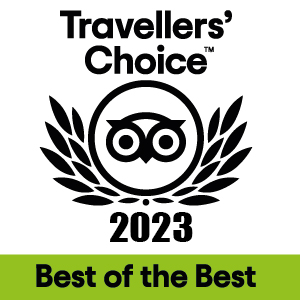
Other Day Tours
Birding Tour Ecuador: Andean Condor & Wildlife Reserve
Birding Tour Ecuador: Papallacta Pass & Guango Reserve
Birding Tour Ecuador: Andean Cock of the Rock, Toucans and Alambi Hummingbird Paradise
Birding Tour Ecuador: Zuro Loma Antpittas Hide and Yanacocha Puffleg Reserve
Birding Tour Ecuador: Giant Hummingbird Reserve & Alambi Hummingbird Paradise Bear
Birding Tour Ecuador: Toucan Reserve and Alambi Hummingbird Paradise
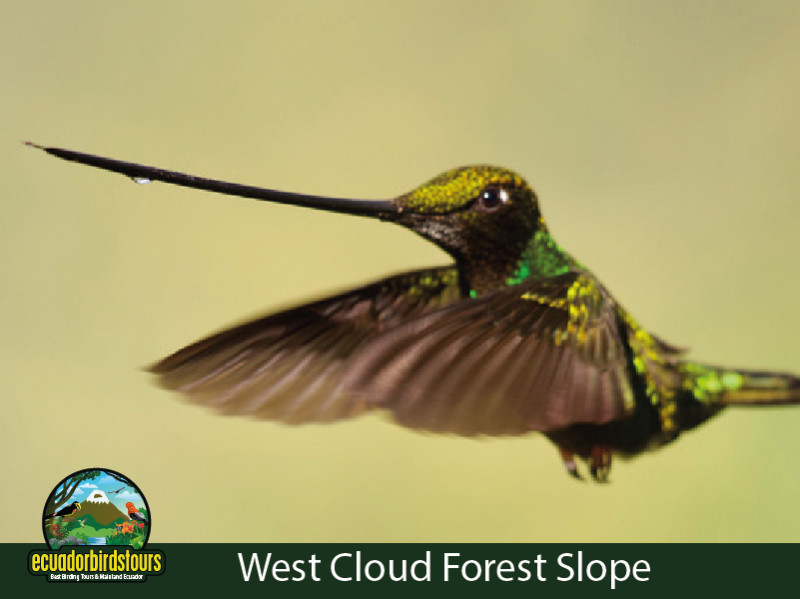
Sword-billed Hummingbird
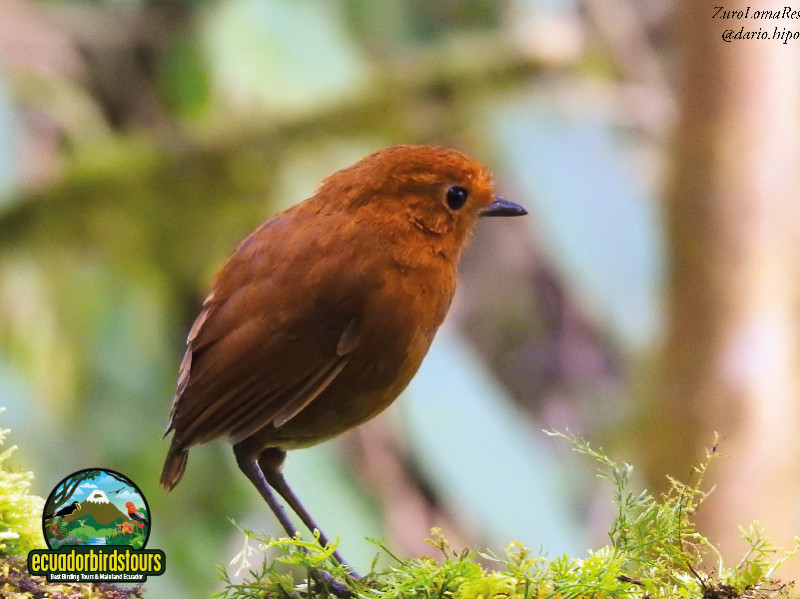
Equatorial Antpitta

Black-tailed Trainbearer
Highlights of Yanacocha & Alambi Birding Reserve Tour:
- Visit Yanacocha Reserve near Quito (Upper Mountain Forest and Paramo Region)
- Birding the Old-Nono-Mindo Route for spectacular bird species
- Delicious Lunch at the reserve overviewing the Andes and Cloud Forest
- Visit Zuro Loma Antpittas Hide and possible Ocellated Tapaculo Hide!
We will pick you up early in the morning around 530am from your hotel in Quito area and drive towards Zuro Loma Reserve located in the North Western part of Quito. Upon arrival to the reserve we will devote the first hour to explore the Antpitta nad Hummingbird feeders of the reserve for 2-types of Antpittas, Tanagers and Hummingbirds.
Target Bird Species: Black-chested Mountain Tanager, Scarlet-bellied Mountain Tanager, Grey-browed BrushFinch, Chestnut-naped Antpitta, Equatorial Antpitta, Andean Guan, Masked Flowerpiercer, Glossy Flowerpiercer, Southern-Yellow Grossbeak, Shining Sunbeam, Sword-billed Hummingbird, Great-Sapphirewing, Buff-tailed Coronet, Superciliated Hemispingus and others.
We will continue birding in Yanacocha Reserve for about 1 hour observing hummingbirds and possible the critical endangered Black-breasted Puffleg. Lunch at the Reserve overviewing the Canopy of the Upper Mountain Forest and Cloud Forest. Continue to the main Puffleg feeders and afternoon return to Quito.
Target Bird Species: Sapphire-vented puffleg, Golden-breasted Puffleg, Buff-winged Starfrontlet, Sword-billed Hummingbird, Great Sapphirewing, Rufous Wren, Tawny Antpitta, Purple-backed Thornbill, Rainbow-bearded Thornbill and others.
Included: Private Transportation, Expert Birding Guide, Lunch, Entrance Fee to Yanacocha and Zuro Loma Reserve, ebird List, and Ecuador Birds Tours Cap.
Not Included: Other expenses and Tips.
Operation Days: Everyday
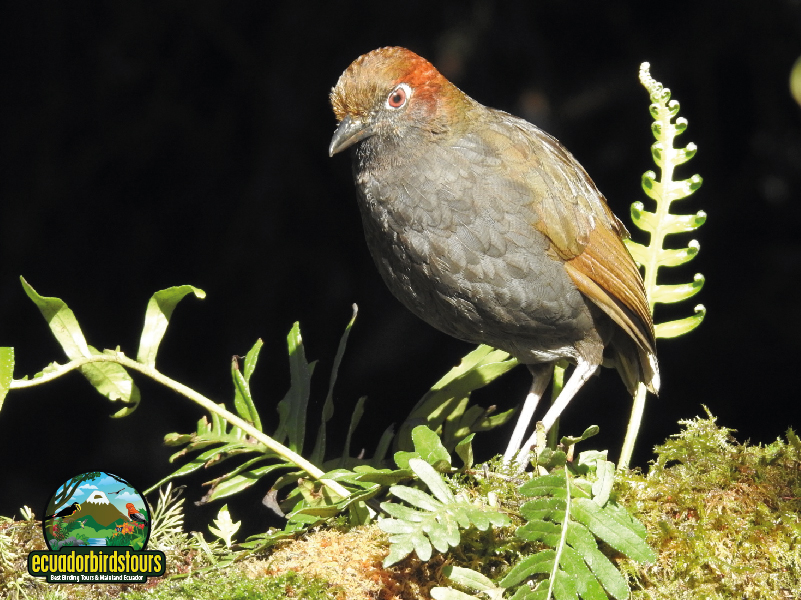
Chestnut-naped Antpitta

Andean Guan
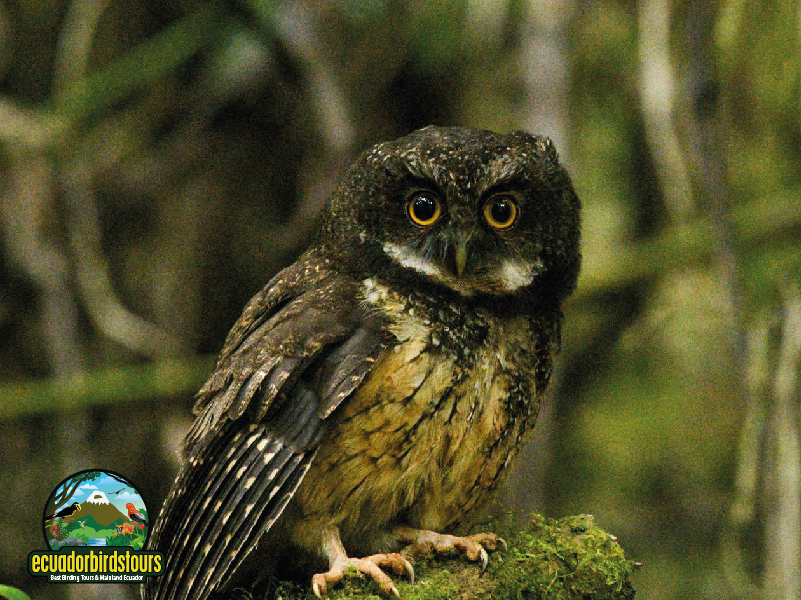
White-throated Screetch Owl
Request Availability Return to Day Tours
Information
Our Lodges Our Reserves Packing List Terms and Conditions Birding Presentation
Ecuador Birds Tours
24/7 Whatsapp: +593 99 373 2879
Address: Barrio Andrango, Quito, Ecuador
Registered Trademark Nr. SENADI-2021-93286 - All Rights Reserved - Ecuador Birds Tours Diseño por mooncities.com
ECUADOR BIRD PHOTOGRAPHY TOURS
Birds of ecuador.
The taxonomic diversity of birds in Ecuador is reflected, as expected, also in higher taxonomic categories. Thus, of the 40 orders currently recognized in the world, 26 have been registered in Ecuador, and of the 240 world families, Ecuador has 92.
As it happens on a global scale, the most diverse order is: Passerines (925 species). Other important orders in number of bird species are: Apodiformes (146 species) Charadriiformes (101 species) Piciformes (58 species). Hummingbirds (family Trochilidae, order Apodiformes) which has 132 bird species. All the most diverse families therefore belong to the order Passeriformes: Tyrannidae (201 species), Thraupidae (174 species), Furnariidae (106 species) and Thamnophilidae (95 species).
Ecuador photo tours, excellent photographic opportunities. Private and shared bird photography tours, carefully designed itineraries, fantastic feeders set-ups or pace bird walks.
Birding locations and bird reserves – North West from Quito: Yanacocha , Antisana , Tandayapa valley, Mangaloma, los Tayos, 23 de Junio, Silanche, Milpe , Mashpi, Santa Lucia , San Tadeo, Sachatamia, Mindo Cloud forest , Yunguilla , Maquipucuna . Birding locations and bird reserves – East from Quito: Papallacta , Quijos, Baeza, Narupa , Cosanga , Sumaco . Birding locations and bird reserves – South from Quito: Buenaventura , Jorupe , Utuana , Copalinga .
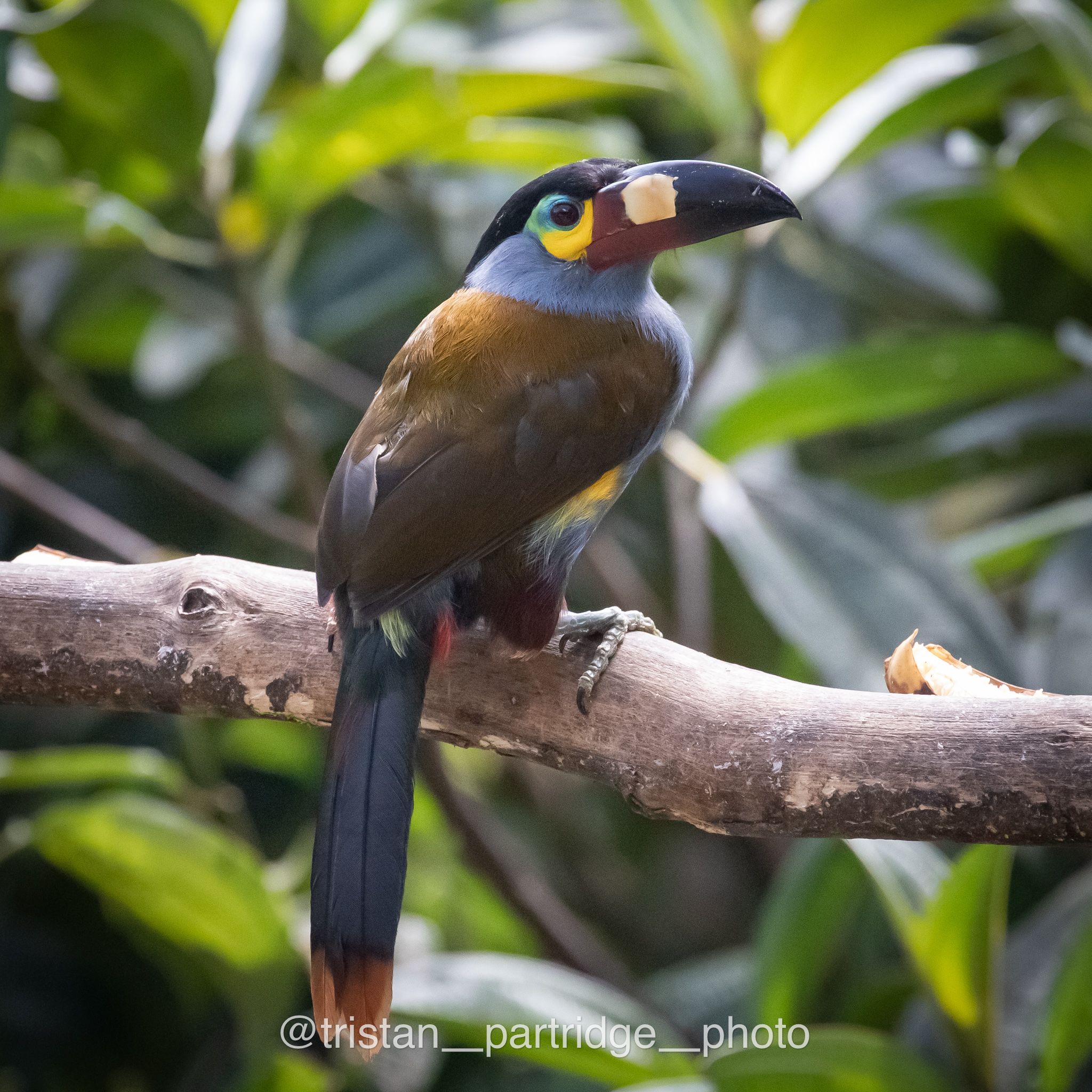
ANDEAN CHOCO
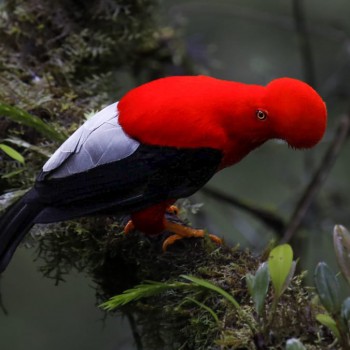
PLATE BILLED MOUNTAIN TOUCAN
Andigena laminirostris -Plate-Billed Mountain Toucan, is a species of bird in the Ramphasidae family. It is native to Colombia and Ecuador. They live in high humid montane forests of the Andes. There are no known subspecies. It is one of five species in the genus Andigena, known as mountain toucans. Its conservation status is “vulnerable”, since the availability of habitat is declining moderately fast. They are found mostly in cloudy, subtropical, and temperate montane forests.
- Hummingbirds
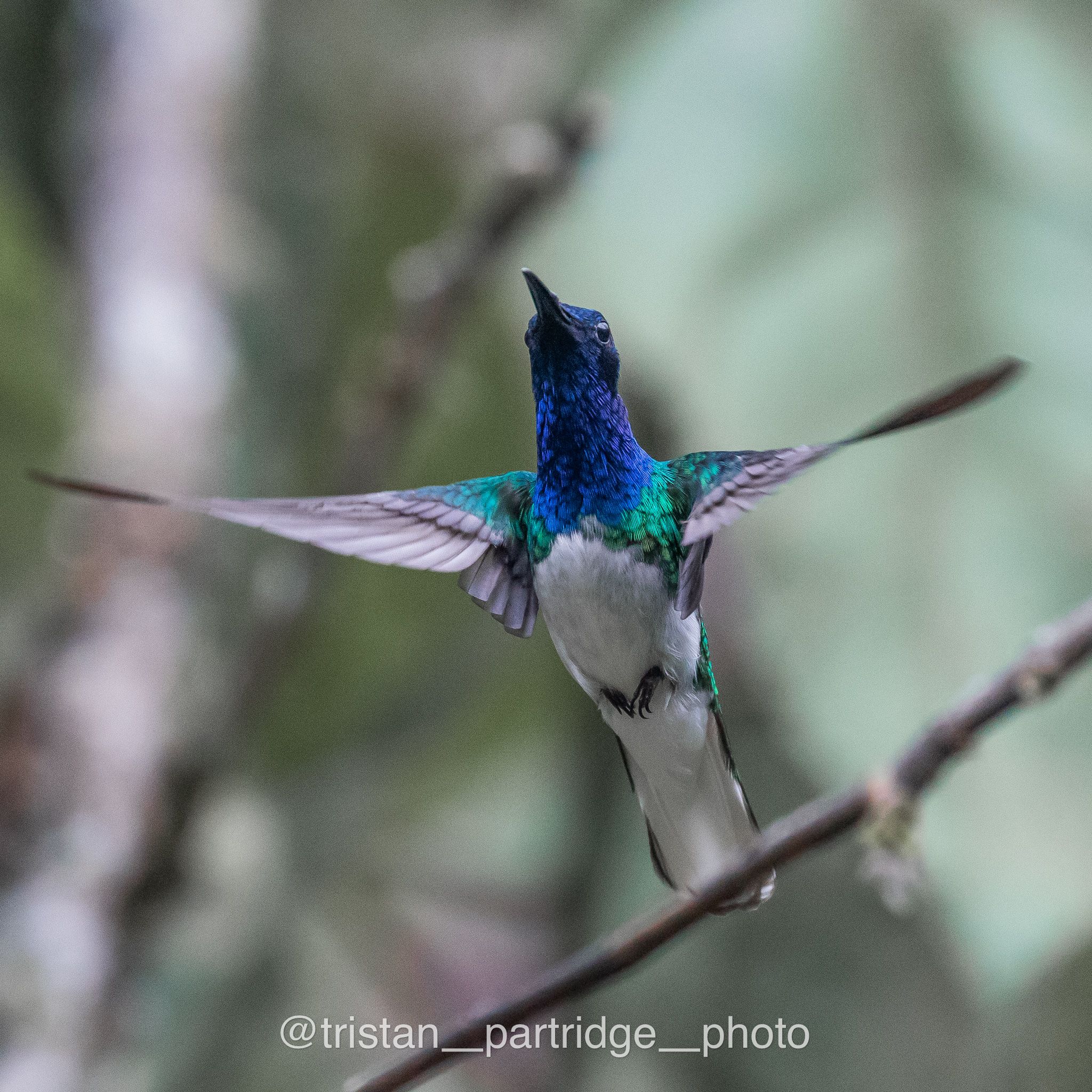
The Magical World of Hummingbirds: Unveiling the Dazzling Species of Ecuador
abril 4, 2023
Ecuador's Hummingbirds
Ecuador’s hummingbirds are among the most captivating and enchanting creatures on the planet. These tiny, vibrant birds, found only in the Americas, are a true wonder of nature, with unique characteristics and abilities. In this article we will delve into the world of hummingbirds, with special emphasis on the species of Ecuador. We will also introduce you to the unforgettable birding experiences offered by Neblina Forest Tours, a leading agency specializing in birding tours in Ecuador.
The Fascinating World of Ecuador's Hummingbirds
Hummingbirds are small, colorful birds that boast extraordinary agility and speed. They are the only birds capable of hovering in mid-air and flying backward. With over 300 species, hummingbirds come in a dazzling array of colors and sizes. Most of them inhabit tropical and subtropical regions of the Americas, with the highest diversity found in the Andean region of South America.
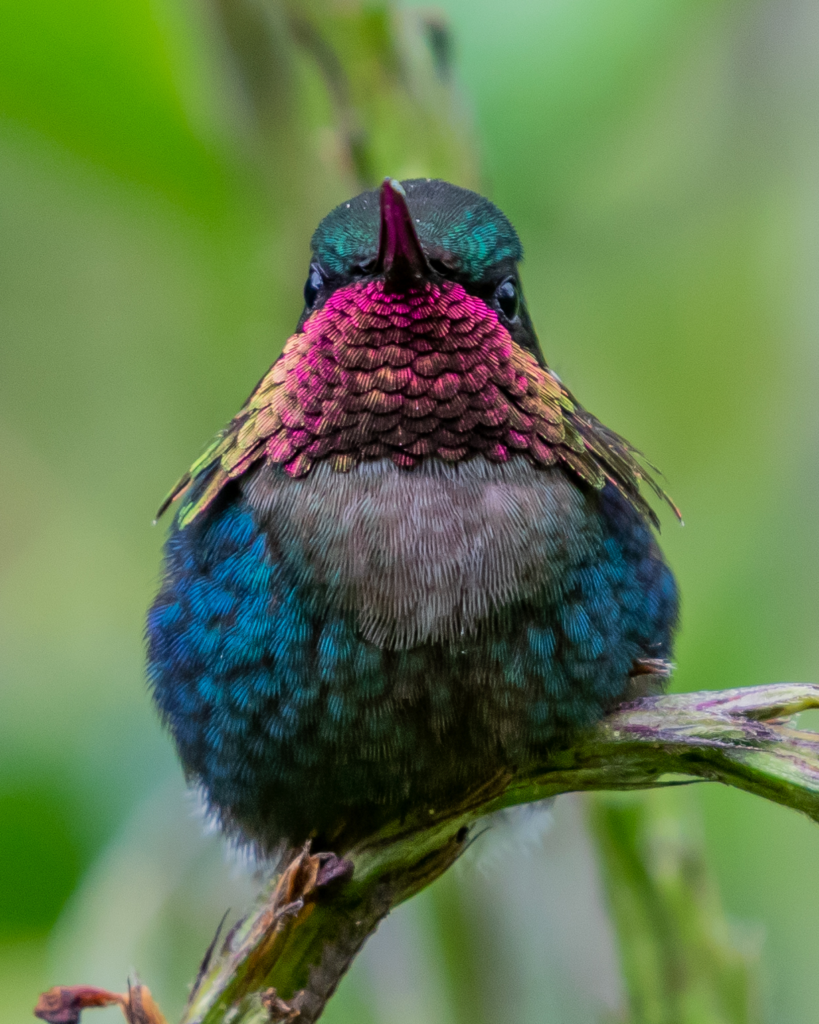
Ecuador's Rich Hummingbird Diversity:
Ecuador is a hummingbird paradise, hosting more than 130 species, making it one of the countries with the highest hummingbird diversity in the world. Some notable species found in Ecuador include the Sword-billed Hummingbird, the Long-tailed Sylph, and the Violet-tailed Sylph.
The Role of Hummingbirds in the Ecosystem:
Hummingbirds play a vital role in the ecosystem as pollinators, helping to maintain the balance of plant life in their habitats. They have a mutualistic relationship with flowers, feeding on nectar while transferring pollen from one bloom to another.
Conservation Efforts and Threats:
The conservation of hummingbirds is critical for maintaining their role in the ecosystem. Habitat loss, climate change, and the use of pesticides pose significant threats to these delicate creatures. Conservation initiatives, such as habitat restoration and the creation of protected areas, are essential to ensure the survival of hummingbird populations.
Neblina Forest Tours: Your Gateway to Ecuador's Hummingbird Wonders:
Neblina Forest Tours offers unforgettable birdwatching tours in Ecuador, providing the unique opportunity to witness the country’s spectacular hummingbird species up close. Led by expert guides, these tours emphasize responsible and sustainable tourism practices while showcasing the stunning avian diversity of Ecuador. By choosing Neblina Forest Tours, you contribute to the conservation of these mesmerizing birds and their habitats.
Ecuador Photo Tour
Latest blog, exploring the avian wonders of colombia’s llanos.
Ready to explore the avian wonders of Colombia's Llanos? Visit Neblina Forest to reserve your spot on this
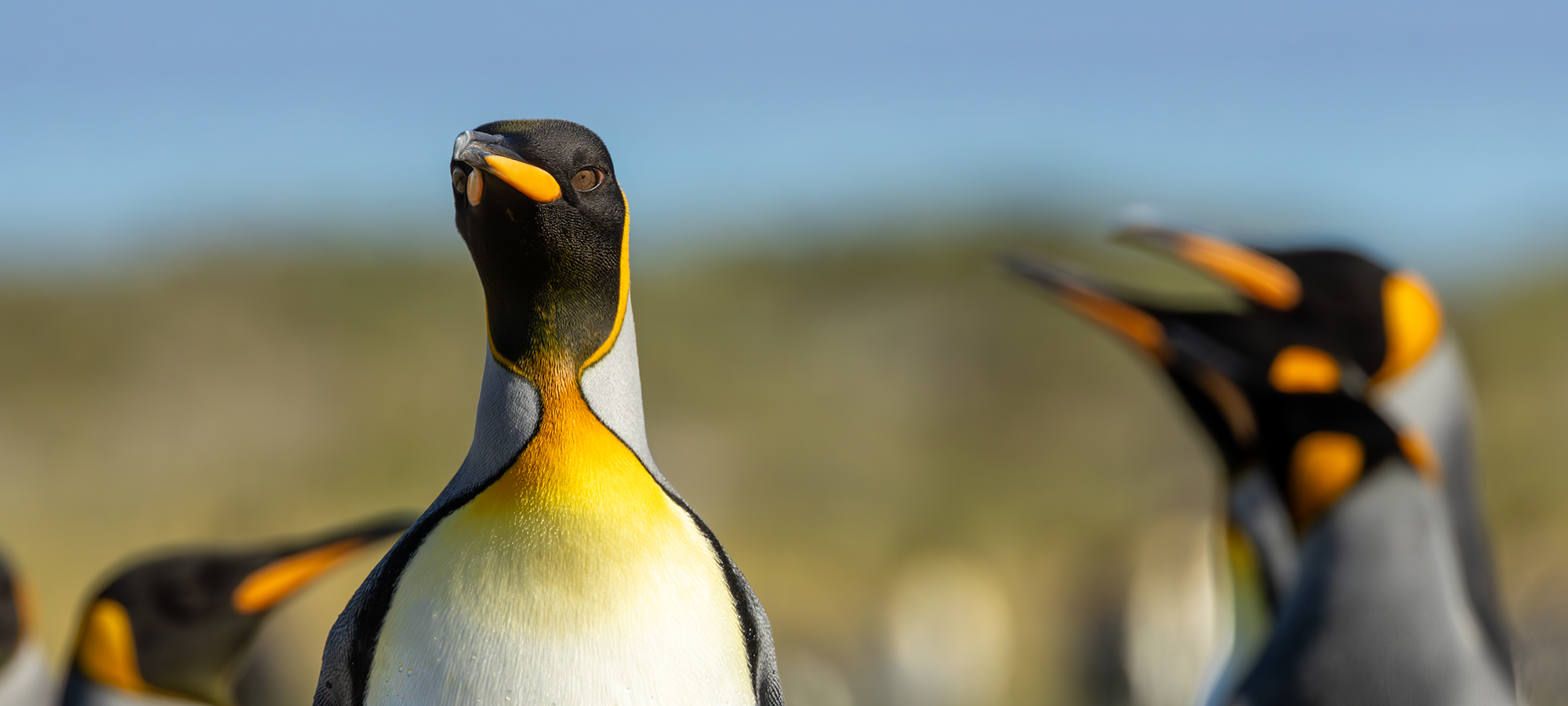
Discover the Wild Heart of Chile: A Closer Look at Patagonia’s Iconic Wildlife
Join Neblina Forest on an Adventure of a Lifetime Neblina Forest's "Patagonia Chile Andes and Condors, Pumas And
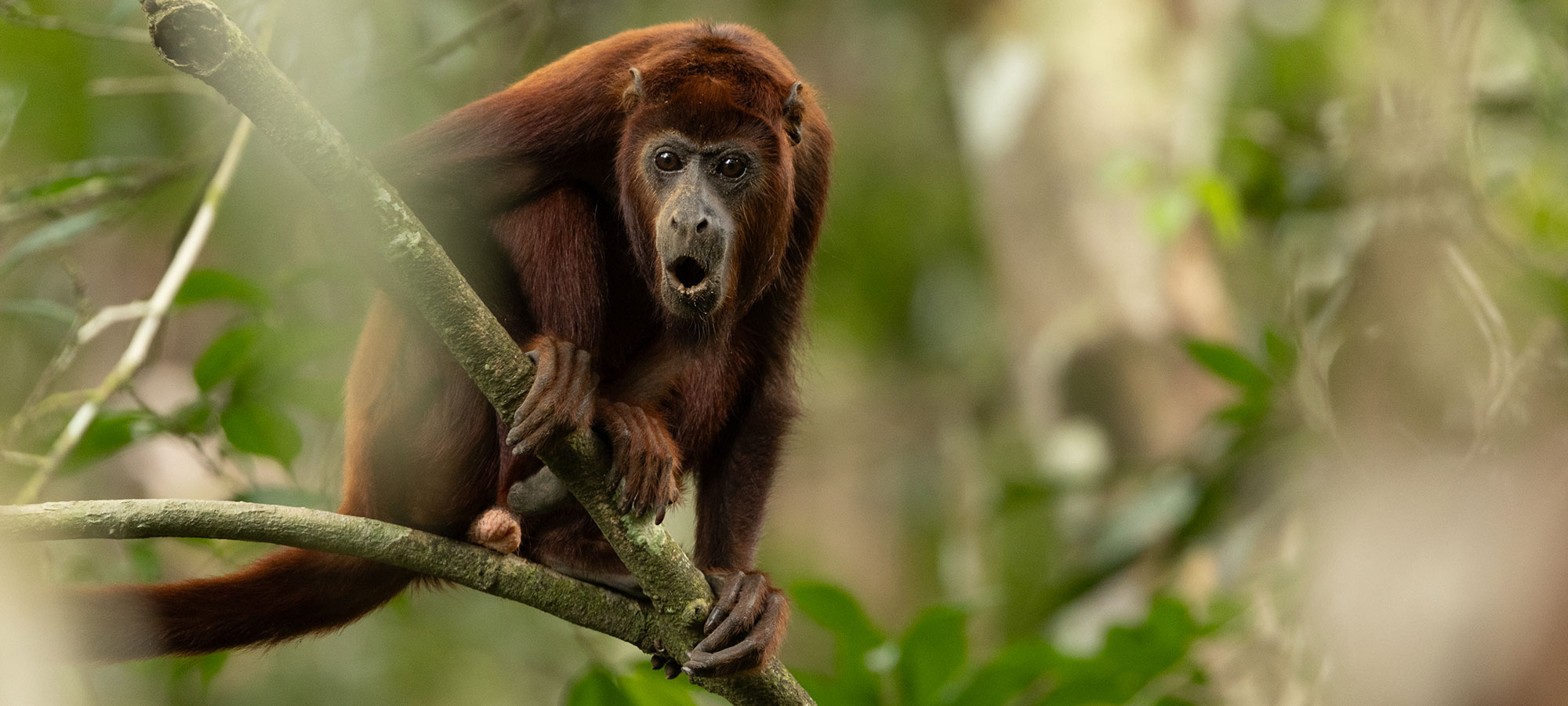
Spotlight on Ecuador: A Birdwatcher’s Paradise
Ecuador, a country with one of the highest levels of biodiversity per square kilometer in the world, offers
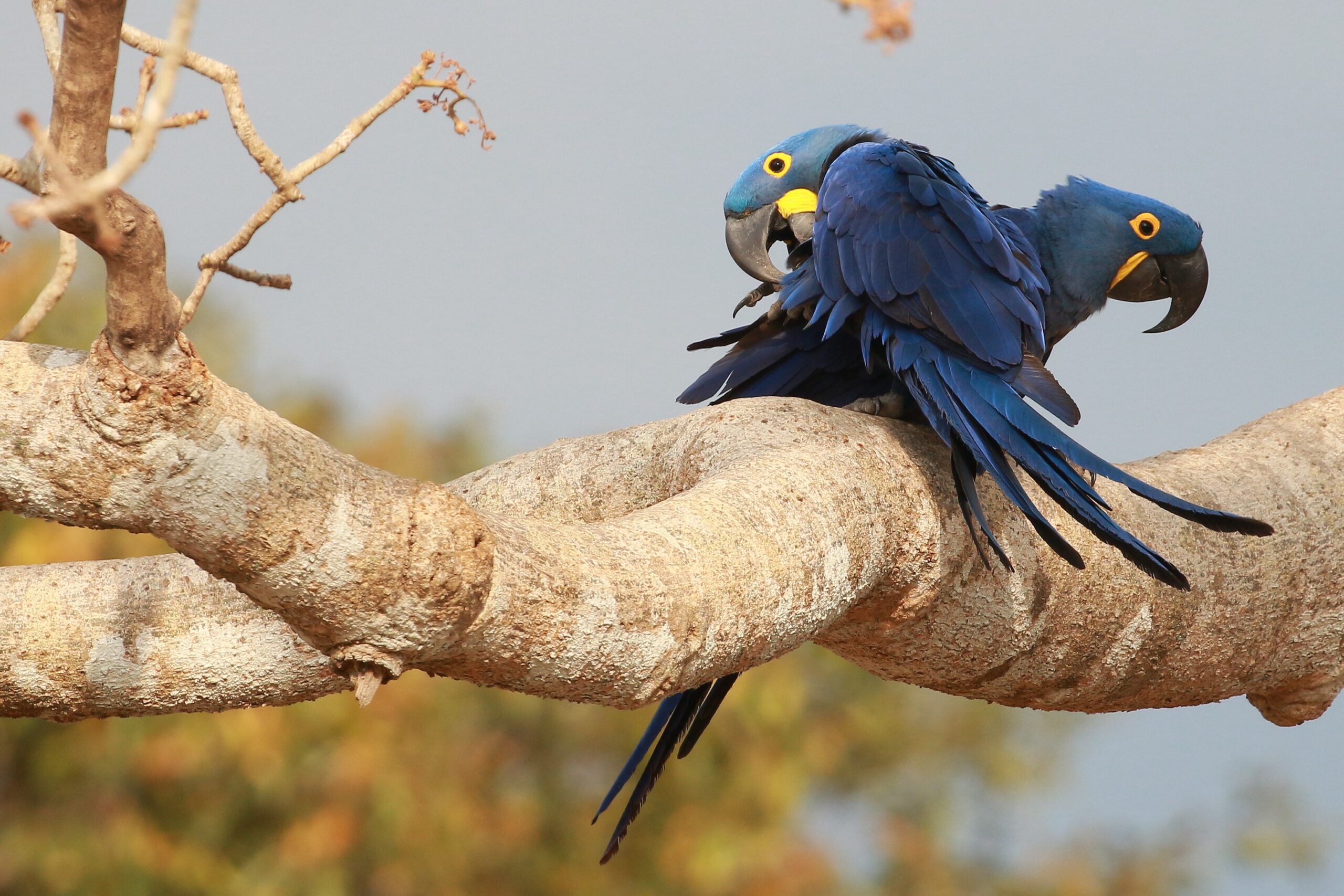
Exploring the Biodiversity of Brazil’s Pantanal
Whether you're an avid birdwatcher, a wildlife enthusiast, or simply seeking an adventure off the beaten path, this
WhatsApp us
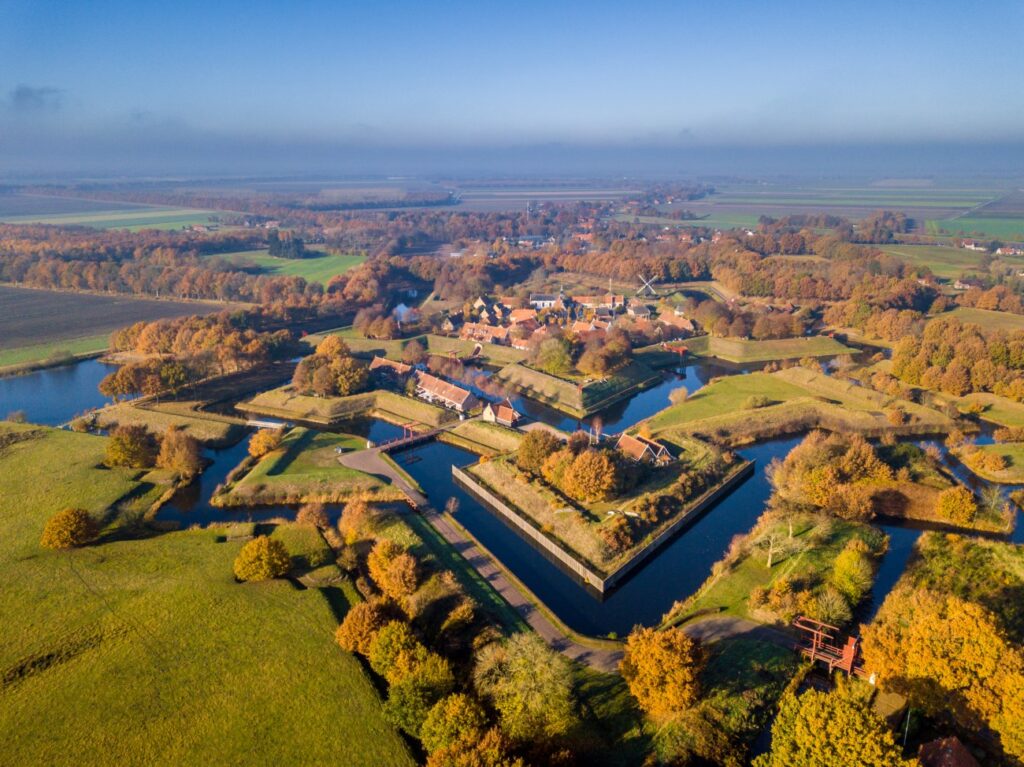
Lorem ipsum dolor sit amet, consec tetur adipiscing elit. Maece males mas porttitor lectus cursus nec. Ut pharetra metus nec lobortis imperdiet pharetra fermentum.
Hummingbird Highlights

Hummingbirds are a huge family of tiny, vibrantly coloured and physiologically fascinating birds! They bear the most extraordinary, descriptive names and are treasures within the avian world. As per the latest IOC taxonomy there are 366 known hummingbirds, with new species being described or split every year. Fueled by nectar, some of these species undertake great migrations. The Rufous Hummingbird for example, travels 4000 miles from Mexico to Alaska every spring, a considerable distance for a bird that weighs about the same as a nickel!
From alluring coquette’s to sylph’s, spatuletails to trainbearers, emeralds to sapphires, pufflegs to metaltails, woodnymphs to sabrewings and so many more, hummingbird variety is both wonderful and exceptional. For a minute think about your favourite ‘hummers’. There are likely a few names that quickly pop up. Maybe some you have even seen before while others are high on your wish list. Asking anyone to choose their personal favourites is a tough act but we have gone out on a limb and put down a few of ours.

This tiny hummingbird sports one of the fanciest head pieces in the avian world, and is distributed through foothill forests from Panama to Bolivia.

Costa Rica and western Panama provide this beauty, the Fiery-throated Hummingbird, positively magnificent when viewed at just the right angle.

With the longest bill to body ratio of any bird, the Sword-billed Hummingbird sure is a showstopper! This incredible appendage grants it almost exclusive access to long tubular flowers.

Quite appropriately named after an imaginary spirit of the air, the Long-tailed Sylph can be seen zipping through the dense foliage of cloud forests in the Northern Andes.

Found only in a tiny region of northern Peru, the Marvelous Spatuletail uses its fantastic racket shaped appendages in courtship displays.

31 species have been reported in the United States, but fewer than 20 are regularly found there. Eight species have been reported in Canada. Arizona is one of the USA’s best locations for hummingbirds and we regularly see 12 species on this fabulous tour.

Hummingbirds are exclusively found in the New World from Alaska all the way south to Chile and Argentina. The most northerly occurring species is the Rufous Hummingbird while at the southern tip of Argentina and Chile resides the Green-backed Firecrown.

Hummingbirds are widespread in every country in Central America. Mexico has an incredible 12 endemic species while countries like Costa Rica and Panama are well regarded for their exceptional variety including the likes of this Snowcap, one of the world’s best.
In Costa Rica we often get up to 47 different species of hummingbirds on our tours including 12 near-endemics and 3 endemics!
Panama regularly produces over 40 species of hummingbird as well including 16 regional endemics and 1 endemic.

South America has a dazzling number of hummingbirds, and it is Colombia that takes first prize with 165 species! Many of these birds are endemic to tiny areas. Colombia is also home to several of the world’s rarest and least known hummingbird species such as Colorful Puffleg, Santa Marta Sabrewing, Blue-bearded Helmetcrest, and Dusky Starfrontlet.
For sheer numbers look no further than our Colombia Mega Birding tour where we have recorded an incredible 113 different species of hummingbirds. We usually average around 85 species over the 30 days. When it comes to hummingbird bang for your buck look no further than our Colombia Highlights tour which often produces 57 species in just 12 days!

Continuing south through the Andes we get to Ecuador, another country brimming with a mind-blowing selection of hummingbirds from Viridian Metaltail, Shining Sunbeam, and Collared Inca to Sword-billed Hummingbird, Tourmaline Sunangel, and Rainbow-bearded Thornbill.
Our Southern Ecuador tour sees around 68 different species including the newly discovered (2017) Blue-throated Hillstar!
Another incredible selection of tours for hummingbirds is our classic Andes series. Our 7-day Eastern Andes: Paramo & Cloud Forest often gets 28 species while the linked 8-day Northern: Choco Cloud Forest tour often yields 37 species. Add to these another 37 odd hummingbirds on the Northern: Ultimate Amazon: Sumaco Foothills & Rio Napo tour and you have a feast of colourful, vibrant gems to enjoy.
Ecuador is so good for hummingbirds that we have even added a special 2-week hummingbird tour to our new Relaxed tour range. This tour offers up no less than 66 different hummingbird species and promises to offer many opportunities to soak in, appreciate, and enjoy Ecuador’s wonderful birding sites!
Further south is Peru, another fabulous country for hummingbirds, and a genuine contender for harbouring THE most outrageous hummer of them all – the spectacular Marvelous Spatuletail.
The Marvelous Spatuletail is one of the undoubted highlights on our popular Northern Peru tour but we typically see another 70 species of hummingbird including Royal Sunangel, Koepcke’s Hermit, Rainbow Starfrontlet, and Peruvian Rackettail. In total we usually find 11 near-endemic and 4 endemic hummingbird species on this tour.
Southern Peru also offers an extraordinary variety of hummingbirds including the stunning Gould’s Jewelfront, the rather large Giant Hummingbird, Rufous-booted Rackettail, and the extraordinary Bearded Mountaineer. We typically see around 42 species on this tour.

15 species of Hummingbirds are unique to the Caribbean. This includes the smallest bird in the world, Cuba’s Bee Hummingbird! Other species include the Purple-throated and Green-throated Caribs of the Lesser Antilles, Puerto Rican Emerald of Puerto Rico, and the striking Red-billed and Black-billed Streamertails of Jamaica.

Get Special Offers From Rockjumper Birding
Sign up now and get the best deals straight in your inbox!
- Name This field is for validation purposes and should be left unchanged.
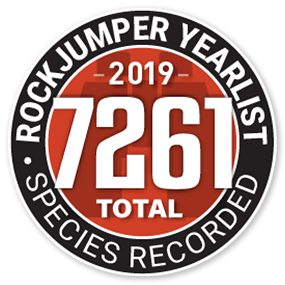
Modal title
Enquire about booking a tour.
- Tell us about your dream tour
- How many people do you expect to be on the tour? (optional)
- What are the date ranges you are looking at for this tour? (optional)
- How many days would you like the tour for? (optional)
- What is your price range for the tour? (optional)
- Phone This field is for validation purposes and should be left unchanged.
Your Passport
Add Attachment

Where to Find Ecuador’s Brilliant Hummingbirds
Ecuador is the Mecca for hummingbird watchers and photographers. With more than 130 of the world's 340 species, it's no surprise Ecuador is known as the "Land of Hummingbirds" and the hummingbird capital of the world.
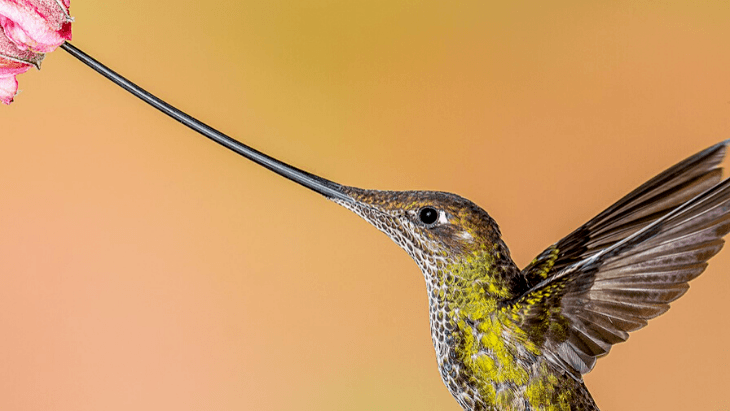
Hummingbirds (colibríes in Spanish) have long fascinated us with their speed, agility, compact size and perfectly adapted beaks and tongues. Many cultures have placed spiritual significance on these pint-sized marvels. The Aztec god of war, Huitzilopochtli, is depicted as a hummingbird because of his belief that hummingbirds contained the spirit of fallen warriors.
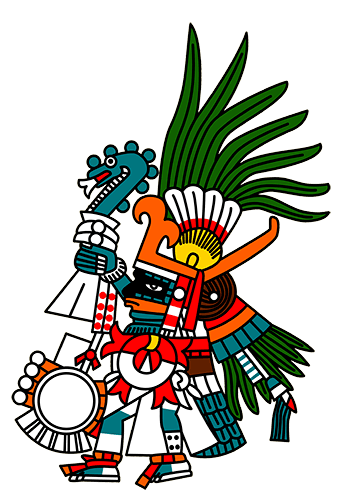
Christians associate hummingbirds with the resurrection because they appear lifeless when sleeping, but will rapidly fly away and 'resurrect' when then sun rises.
What hummingbirds mean to us
The symbolism that resonates strongest with me is from the Native Americans who view hummingbirds as healers or a spirit-being helping those in need.
You see, we went through a very difficult time with the loss of a loved one and over the next week two events happened:
- A sentimental tree was constantly visited by a new hummingbird, and
- A female built her nest in a tree located in a prime viewing spot from our living room. Later on her baby joined us too.
These may seem like trivial events. But, at the time they were beautiful moments of reprieve from the persistent despair we were all feeling. For this I was incredibly grateful.
From then on hummingbirds have taken on a very special meaning within our house, elevated to the position of our family symbol.
I've heard similar stories from various friends and read numerous other stories online about similar experiences. This leads me to think there are many people out there that share the same appreciation for hummingbirds on numerous levels, including physical beauty and spiritual.

Hummingbird Infographic
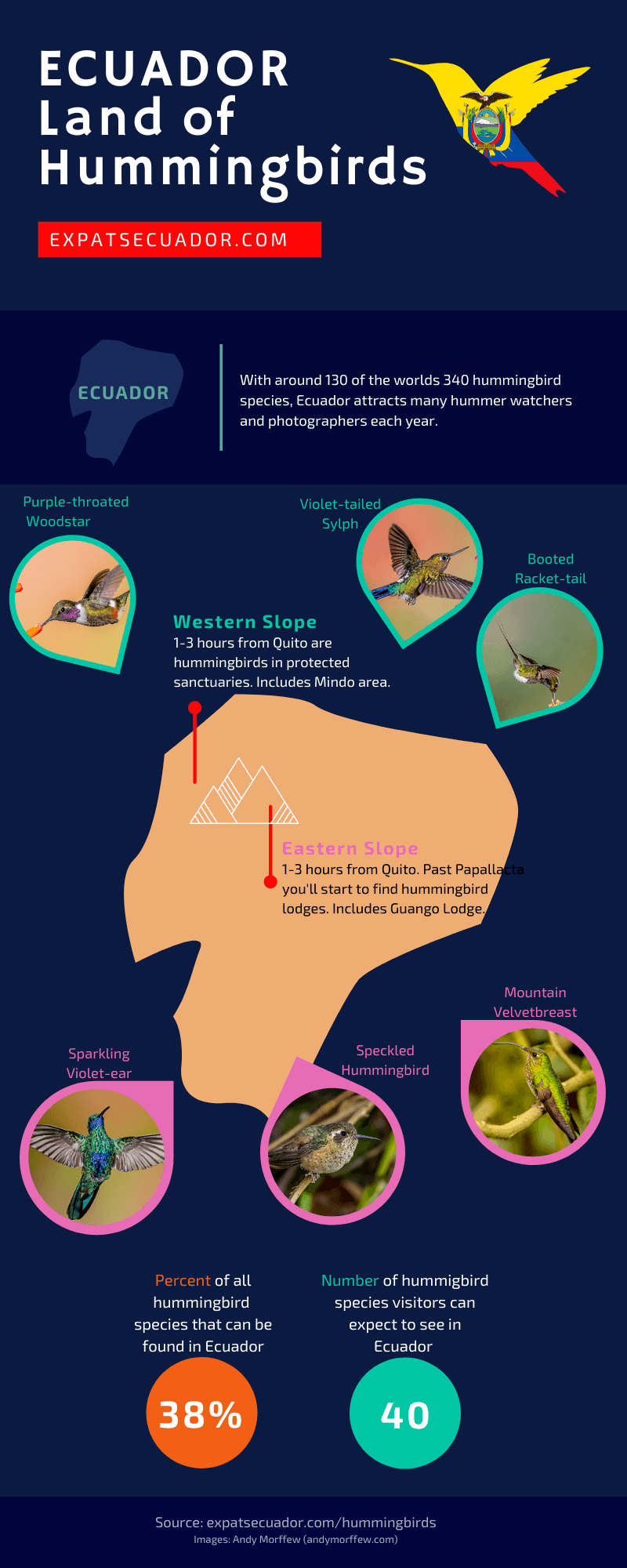
Feel free to share the above hummingbird infographic. You can also download the high-res version here .
Where in Ecuador can I find hummingbirds?
Everywhere! Well, except the Galapagos - Darwin certainly would have mentioned these remarkably adapted creatures if so...
This doesn't mean you're going to come across Hummingbird nests on every street in Quito or Guayaquil. But, get a few minutes outside of the city and you can potentially have an encounter.
The cloud forests have the highest concentration of hummingbirds, so that's a great place to start your journey.
The most popular areas for tourists to visit are divided into the eastern & western slopes of the Andes mountain range that runs through Ecuador.
Some of the most popular spots for the eastern and western slopes have been included in the map below (blue = east slope, red = west slope). These are mostly accessible from Quito, but don't think for a second that these are the only places to find hummingbirds in Ecuador - they just happen to be the most popular.
Western Slope of the Ecuadorian Andes
If you're like many visitors to Ecuador, this is likely where you're going to start your hummingbird exploration.
Mindo Valley
Mindo has quickly become one of the premier bird-watching locations in the world. The lush cloud forest provides rich biodiversity, allowing visitors to see many of Ecuador's birds, plants, insects, vegetation, and pack in some other sightseeing activities like chocolate and coffee tours, rafting, ziplining, and hiking. All within a 2-hour drive of Quito.

Reserva Ecologica Yanacocha
With over 15 hummingbird species (several endemic), the Reserva Ecologica Yanacocha is well-known for watchers looking for a quick weekend trip from Quito.
It takes around 1 hour to get to Reserva Ecologica Yanacocha from Quito, making it the closest of the western slope locations to do some serious hummer watching.
Tandayapa Valley
At least 17 species of hummingbird have been spotted around the Tandayapa Valley, including the Purple-throated Woodstar (Calliphlox mitchellii) .
Two of the popular spots to bird watch and stay are:
- Bellavista Cloud Forest Reserve & Lodge
- Refugio Paz de Las Aves
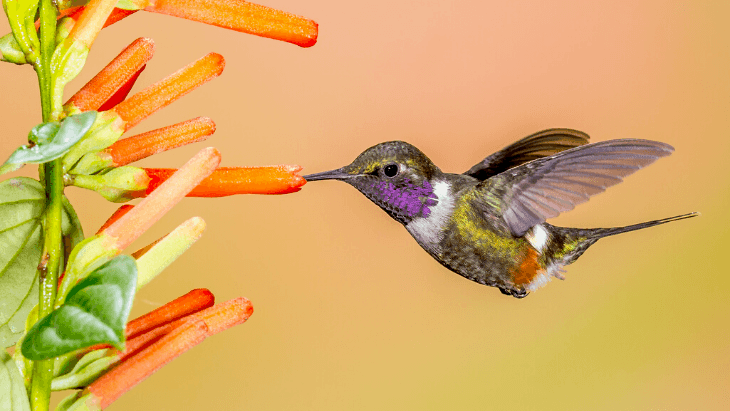
Reserva Mashpi Shungo
A little further out, about 3 hours from Quito, is the privately held Reserva Mashpi Shungo. In addition to howler monkeys, you can find 13 types of hummingbird , including the Violet-tailed Sylph (Aglaiocercus coelestis).
Whilst here, you can also treat yourself at the luxurious Mashpi Lodge.

Silanche Bird Sanctuary
Still around 3 hours from Quito is the Silanche Bird Sanctuary. In addition to several toucans, you can also spy around 7 hummingbird species , including the Booted Racket-tail (Ocreatus underwoodii).
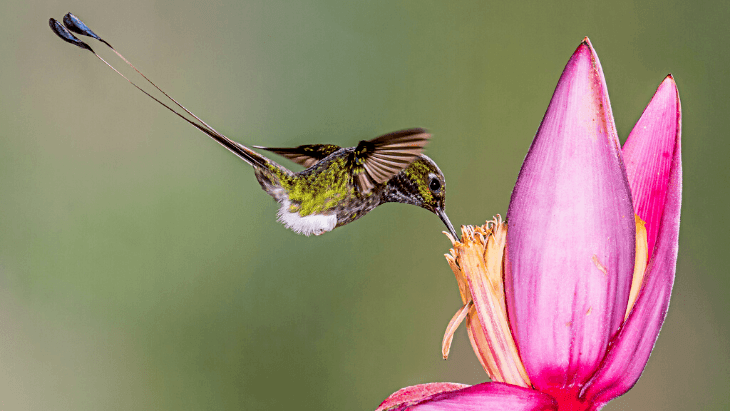
Eastern Slope of the Andes Hummingbirds
The eastern slopes of the Ecuadorian Andes starts about an hours drive east of Quito, heading past Papallacta. Hint - be sure to give yourself some time to soak up the hot springs in Papallacta.
Puembo Birding Garden
I've included this spot on the list because it is a convenient starting/stopping off point given its close proximity to Quito's international airport. If your sole aim of visiting Ecuador is bird watching, then staying here will mean you don't need to go into Quito and you can start enjoying some 35+ different species of birds, including several hummingbirds.
Guango Lodge
Situated about 10 minutes past Papallacta is Guango Lodge. Here you can see around 17 types of hummingbirds in well-maintained gardens. These include the Mountain Velvetbreast (Lafresnaya lafresnayi).
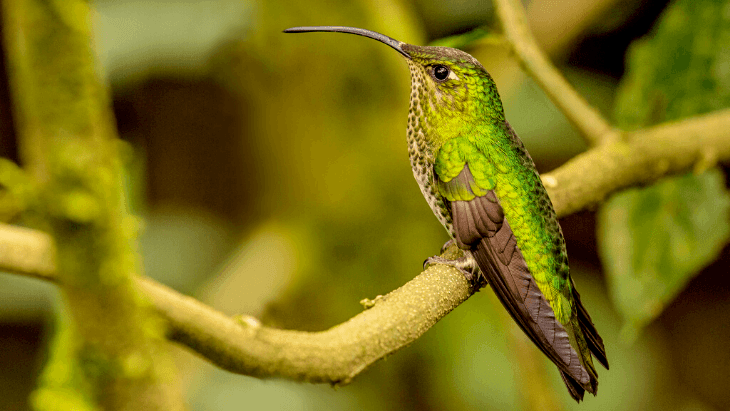
Hosteria Hda. Cumandá
Continuing along the E20, about 2 hours from Quito is Baeza. This lesser known little town has several options to stay and view the many animal and bird species in the area. Approx 6 types of hummingbirds have been known to live here, including the Speckled Hummingbird (Adelomyia melanogenys).
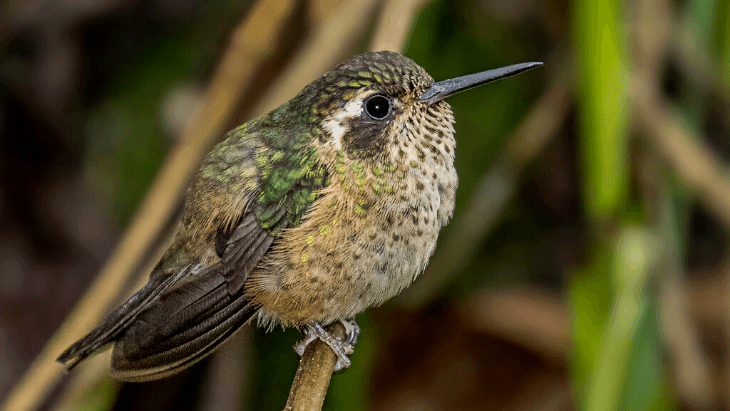
Turning right onto the E45 will have you at Cosanga, around 2.5 hours from Quito. This town includes bird watching options like Cabañas San Isidro. Here, around 10 species of hummingbird have been spotted, including the Sparkling Violet-ear (Colibri coruscans).

WildSumaco Lodge
Continuing down the Ecuador's Eastern Slope, turning left at Narupo onto the E20 for around 40 minutes and then left at Wawa Sumaco towards the Sumaco Volcano, you'll find the most remote lodge on the list - WildSumaco Lodge. This birding lodge has been know to contain 21 species of hummingbird .
Southern Ecuador
Moving further south down the eastern slope you'll pass through other areas such as Baños, Cuenca (where we live) and Loja. Whilst you won't find many bird tour companies offering tours here, that doesn't mean there aren't quality hummingbird spotting opportunities.
Giant Hummingbird ( Patagona gigas)
One of the 5 different species that regularly visit our home in Cuenca is the Giant Hummingbird. We love having him visit us because his large size seems to calm down some of the smaller, but more aggressive, hummingbirds. They seem to know that this larger hummer deserves respect and they agree to give him some space.
This brings a more harmonious vibe to the 3-4 hours in the morning when the hummingbirds are at their busiest and creating the most noise (and we might still be sleeping!). Check out the Giant Hummingbird in this video:
Where does the Giant Hummingbird live?
The giant hummingbird's habitat extends from Ecuador down to Argentina and Chile and can be found on both slopes of the Andes mountains. This covers a sizeable range of 1,200,000 km2 .
How long is the Giant Hummingbird?
They are around 23 cm (9.1 in) long, with a wingspan of approx 21.5 cm (8.5 in) and weigh 18–24 g (0.63–0.85 oz). This is about double the weight of the next heaviest hummingbird.
How many Giant Hummingbirds are left in the world?
There is an estimated 10,000+ adult Giant Hummingbirds in the wild.
All Ecuadorian hummingbird species
For all you hardcore hummer fans, here's the list of all the different species you can find in Ecuador along with their scientific names:
Are you planning a visit to Ecuador to check out hummingbirds? Please feel free to let us know in the comments where you're going and whether you're doing it by yourself or through a tour group.
Image credits : I have not taken the incredibly superb photos of hummingbirds used in this article. I wish I was that talented with a camera. They are from a UK photographer, Andy Morffew. If you like the photos, let him know on his website & peruse his other fantastic wildlife images.

BOOK YOUR NEXT BIRDWATCHING TOUR FROM QUITO
Leave a reply cancel reply.
Your email address will not be published. Required fields are marked *
Save my name, email, and website in this browser for the next time I comment.
Guide of the Month
Ecuador's professional visa requirements.
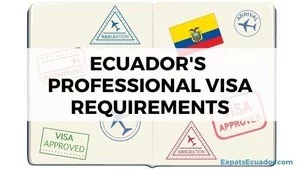
Recent Posts

Join Us
& receive updates before anyone else.
Keep an eye on your inbox for Ecuadorian goodies.
Which Visas Are You Eligible For?
Free ecuador updates.
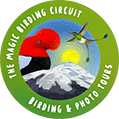
BIRD PHOTO TOURS
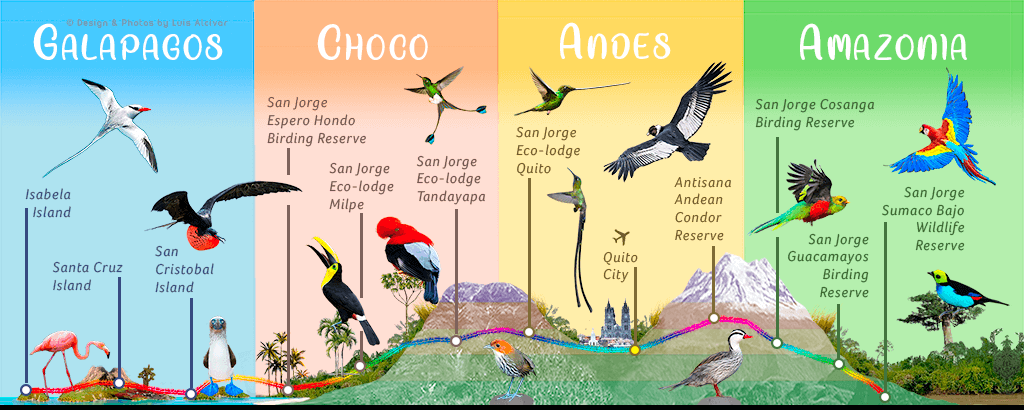
Welcome to the Magic Birding Bird Photo Circuit of Ecuador . The first of its kind in South America carefully designed to photograph the most iconic and spectacular bird species of Ecuador's 1700 birds species. The Magic Bird Photo Circuit visits Ecuador's most important and biologically-diverse bird photo locations including our 7 strategically located private birding reserves and our 4 award-winning Eco-lodges .
DETAILED ITINERARIES
Classic bird photo tours.
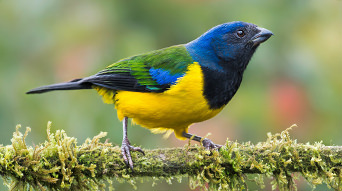
DAY TOURS FROM QUITO
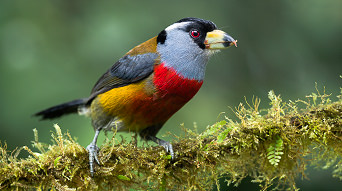
5 DAY BIRD PHOTO TOUR
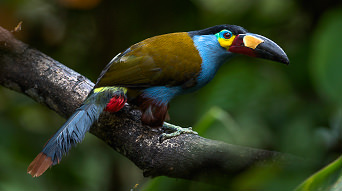
8 DAY BIRD PHOTO TOUR
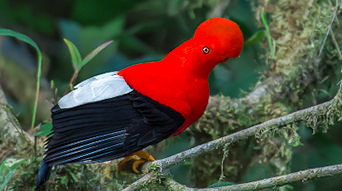
12 DAY BIRD PHOTO TOUR
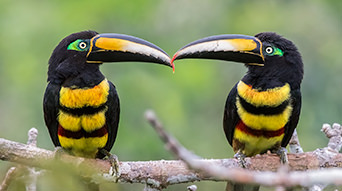
18 DAY BIRD PHOTO TOUR
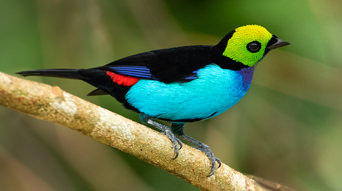
5 DAY UPPER AMAZON TOUR

5 DAY LOWER AMAZON TOUR
Our main focus is for you take and absurd amount of dreamlike shots of hummingbirds, and other spectacular bird species like tanagers, toucans, and, barbets. through the most popular and modern bird photography techniques. Hummingbirds in-flight photography via multi-flash setup has become one of the most highly anticipated features of bird photography in Ecuador, which, for good reason, we make sure to include it in all our bird photo tours . We provide full multi-flash equipment and your guide will make sure to set it up for you in the most productive locations. Every hummingbird location that we visit has an specialized area for multi-flash and another for photography with natural light.
We guarantee to take you to the most relevant and photography-qualified birds hides and bird feeding stations . In these locations, your guide will assure that your shots come as aesthetically beautiful as possible by setting-up captivating perches for birds to land on.
All our bird photography guides are also professional birders with more than 15 years in the field and they will come equipped with a playback, to conveniently draw birds to easy-to-walk locations and observation decks . Every day, there will be optional moderate trail photography to look-out for harder species.
This trip is perfect for you if you are planning to bring a big telephoto lens, and, if one of your main focus is to get state-of-the-art hummingbird photos via multi-flash setups .
DIFFICULTY LEVEL & PACE
Our Bird Photo Tours are relaxed with an easy level of difficulty. Small amount of daily walking to the hummingbird feeders, bird feeding stations, and, special hides , where subjects will mostly be between 6 and 12 feet away. Optional moderate trail photography.
BOOKS & FIELDGUIDES
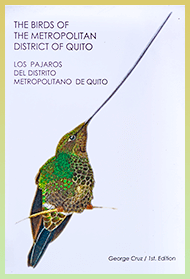

San Jorge Eco-Lodges & Botanical Reserves of Ecuador The Magic Birding & Photography Circuit
We own and operate 6 eco-lodges & 7 private nature reserves and offer the most extensive all-inclusive birding tours in ecuador. visit up to 9 different eco-systems., visit our own cock of the rock lek.
June 12, 2022 - ENTRY REQUIREMENTS
Entry requirements for all incoming travelers arriving to Ecuador, effective June 12, 2022:
- All travelers who enter mainland Ecuador by international air travel must fill out a Traveler’s Health Declaration, which will be sent to you from your airline carrier via email. It must later be delivered to personnel of the Ministry of Public Health at the entry point to the country.
- All travelers must present an original copy of vaccination certification card with full COVID19 doses at least two weeks given before arrival. Or, you may provide the negative result of an RT-PCR test taken up to 72 hours prior to boarding to Ecuador. Any passenger under 3 years old will not present these requirements.
- Please read & monitor Quito Airport travel protocols before traveling: https://www.aeropuertoquito.aero/en/covid-19-protocol.html
Re-entry requirements to fly to US : International travelers will no longer need to show proof of a negative coronavirus test before boarding flights to the United States
- As of 12:01AM ET on June 12, 2022 , The Centers for Disease Control and Prevention will no longer require air passengers traveling from a foreign country to the United States to show a negative COVID-19 viral test or documentation of recovery from COVID-19 before they board their flight.
Note : Both travel Insurance & International Health Insurance are required for visitors to enter Ecuador . When you arrive to Quito Airport, the Immigration Staff will ask to see a copy of your insurance policy or official documentation as proof, which needs to state your name(s) and travel dates in Ecuador
Ecuador Hummingbirds

~ 2 BRAND NEW ECUADOR ECO-LODGES NOW OPEN AT SAN JORGE ~
Grand Opening! San Jorge de Sumaco Bajo NEW Deluxe Eco-Lodge has opened in March, 2023! San Jorge de Sumaco Bajo Bird Sanctuary is located on 400 acres in the Tropical Amazonian Rainforest and is new to our collection of private reserves in Ecuador. It's new aquatic Eco-Lodge overlooks our Lagoon with gorgeous spacious rooms with balconies, high vaulted ceilings and large windows for viewing wildlife from your room, all with stunning views overlooking the water. The upcoming new open-air restaurant will be situated on an Island in the middle of the lagoon with 360-degree views, the second floor offers an open-air bar with observations deck, and the third floor is a spacious covered tower situated 65-foot high over the water, overlooking the Amazonian canopy, and offers an enormous amount of new birds and wildlife.
This private reserve is a paradise for birdwatchers, photographers and nature lovers. You will enjoy a variety of walking trails, hundreds of tropical birds, streams, river swimming, 8 Manikin Leks, 12 species of Parrots, 4 Macaw species, along with a 60-foot-high spacious observation tower which overlooks the Amazonian canopy and is perfect for birdwatching and photography. Our new San Jorge de Sumaco Bajo Eco-Lodge is now open and included in all of our East Andes tours.

Ecuador Eco-Lodge San Jorge de Sumaco Bajo Lodge Tropical Amazonian Rainforest @George Cruz
Grand Opening ! San Jorge de Guacamayos NEW Eco-Lodge has opened in late 2022 . San Jorge de Guacamayos Bird Paradise Reserve, located in the Sub-tropical Cloud Forest on the East Andes Slope offers 6 spacious rooms, a large open-air restaurant with vast mountain views, a spacious observation deck overlooking the canopy with a network of trails. Its Solar panel system provides the electricity for the complex. The nature reserve is surrounded by Antisana National Park, Sumaco NP, Napo Galeras NP and Cayambe Coca NP making it the largest and most protected natural area in Ecuador. San Jorge de Guacayamos Bird Paradise Reserves offers hundreds and hundreds of bird species, many rare and uncommon, plus, its own Cock of the Rock Lek, colorful butterflies, possible Spectacled bears, Tapirs, Pumas, Tyra’s, deer and Jaguar, including numerous wild orchids, plants and flowers. Our new San Jorge de Guacamayos Eco-Lodge is now open and included with all of our East Andes tour schedules.
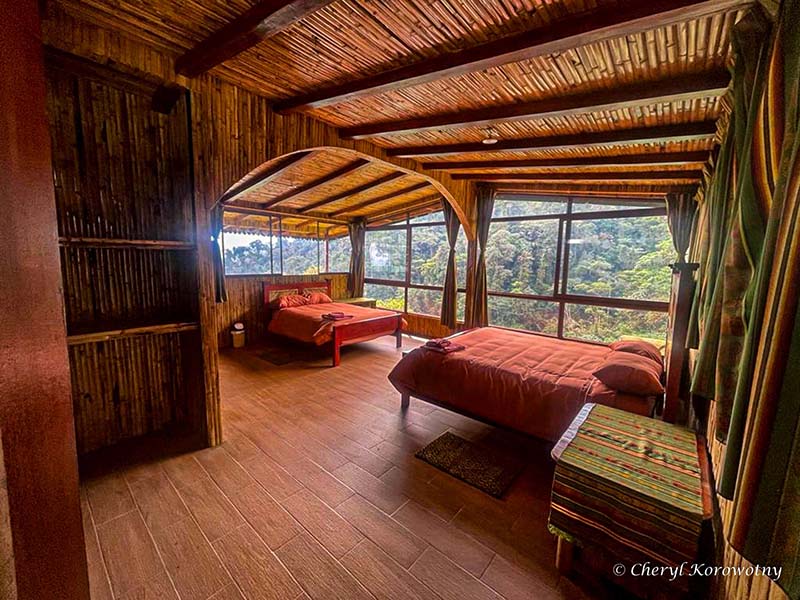
San Jorge de Guacamayos Eco-Lodge – Sub-tropical Cloud Forest in the East Andes Slope
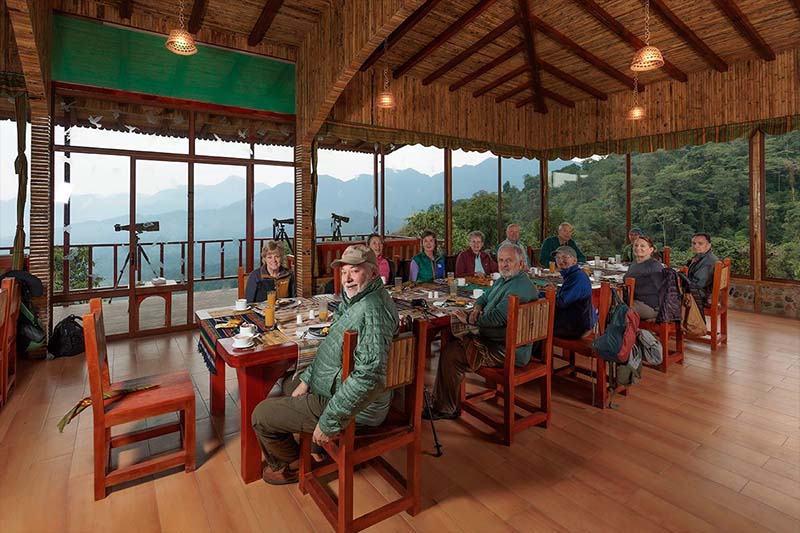
San Jorge de Guacamayos new Restaurant offers observation decks & vast views @Luis Cruz Alcivar
Bird List_San Jorge de Sumaco Bajo Tropical Rainforest
Birds at The Magic Birding Circuit Photos by George Cruz
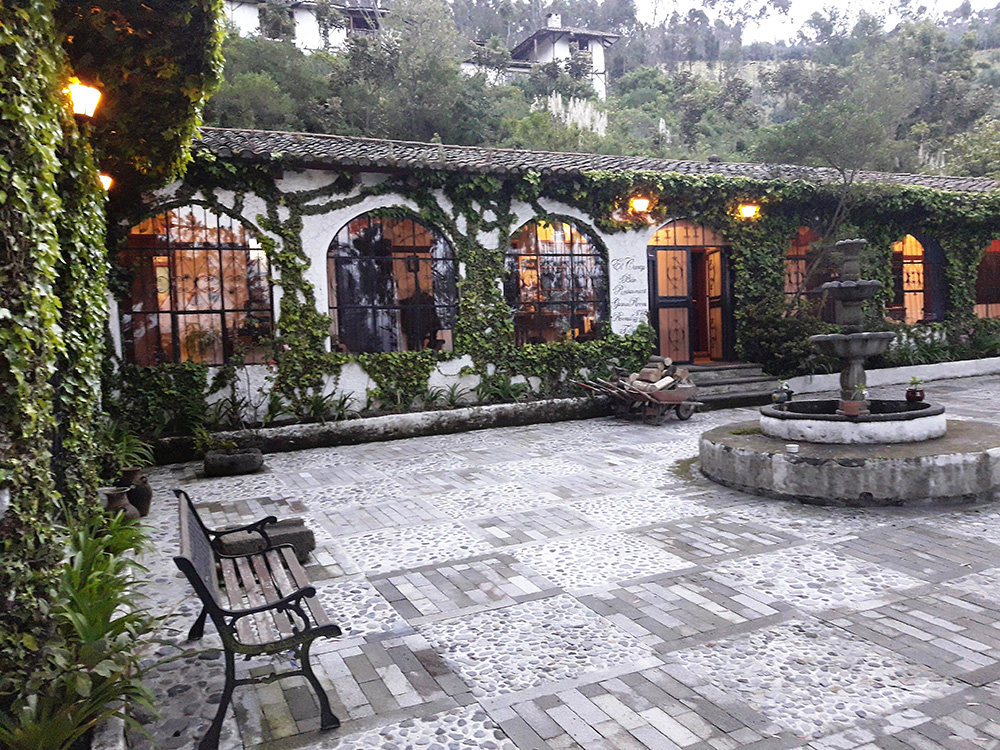
San Jorge Eco-Lodge & Botanical Reserve/Quito Birding Center - 18th Century Spanish Hacienda located in the Andes Highlands 45 minutes from Quito Airport and 25 minutes from downtown Quito. Start birding as soon as you arrive to Quito!

Enjoy our mountain lodge in the Pichincha Foothills and situated on 230 acres inside Bosque Pichincha consisting of 10,000 hectares of protected land. We are the only private native reserve near Quito that offers birdwatching tours, bird photography tours, many species of Hummingbirds, hiking trails, wild orchids, medicinal plants and a wide array of flora and fauna. The exotic Sword-billed Hummingbird frequents our feeders along with 90 possible Highland species. A variety of cultural day tours are available from this lodge such as: the Andes Chocolate & Coffee - San Jorge Ecuadorian Cooking Class ; Medicinal Plants & Sacred Waterfalls, Mountain Biking, Old Colonial Quito, Middle of the World Equator, Otavalo Indian Market and Cotopaxi Volcano.

San Jorge de Tandayapa Hummingbird Sanctuary & Lodge are located in the Cloud Forest on 150 acres of prime birding. A gorgeous mountain top lodge in Tandayapa Valley with pristine birding and hiking trails, beautiful open-air Hummingbird Restaurant with observations decks overlooking spectacular Cloud Forest views, natural active Hummingbird, Tanager & Toucan feeders, wild orchids in their natural habitat, seasonal butterflies, pristine trails, running rivers and ponds. Accommodations include rooms with private bath and optional upgraded spacious vaulted ceiling rooms with balconies/patio and views. Located just one hour from San Jorge Eco-Lodge/Quito, it is part of the Choco Bird Area of N.W. Ecuador where as many as 500 species live, offering superb photography options as well.
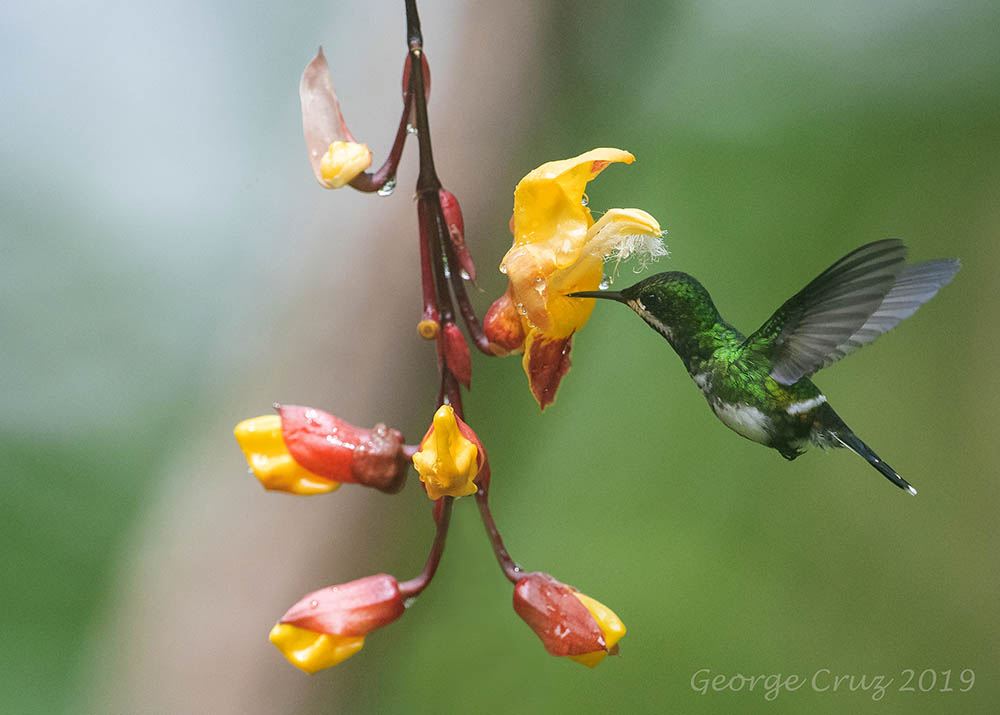
Forest Lodge at San Jorge Milpe Reserve offers 8 comfortable deluxe and spacious rooms with large windows and optional balconies. The reserve offers over 500 possible bird species, a 45-foot-high covered observation tower overlooking the Upper Tropical Rainforest canopy , a large open-air restaurant surrounded by active Hummingbird, tanager and toucan feeders, miles of pristine birding trails, with gardens, butterflies, mammals and wild orchids growing in their natural state.
SAN JORGE ITINERARIES
Magic birding circuit 17 nights/18 days visit 6 san jorge lodges + 6 san jorge private birding reserves east & west andes slopes: andes highlands, cloud forest, upper tropical rainforest, subtropical rainforest. eastern subtropical cloud forest, tropical amazonian rainforest, paramo, coco corridor.
Day One - Evening airport transfer to San Jorge Eco-Lodge & Botanical Reserve/Quito. Overnight San Jorge/Quito Lodge, no meals included Day Two - Birding San Jorge Reserve/Quito Birding Center - Upper Farm Road & Yanacocha old road, Alambi Road & Nono Tandayapa Road (ANDES HIGHLANDS/UPPER CLOUD FOREST) feeders, gardens, road walking. Feeders at the lodge are visited by the Black-tailed Trainbearer, Green-tailed Trainbearer, Sword-billed Hummingbird , Sparkling Violetear, Tyrian Metaltail, Shining Sunbeam, and, the tiny White-bellied Woodstar. The Trail around the lodge offers possible Tufted Tit-tyrant, Rufous-naped Brush-Finch, Azara's Spinetail, Crimson-mantled Woodpecker, Scarlet-bellied Mountain-Tanager, Blue-and-yellow Tanager, Southern Yellow Grosbeak, Red-crested Cotinga, and the Streak-throated Bush-Tyrant. Overnight San Jorge Tandayapa Lodge, includes 3 meals Days Three & Four - Birding San Jorge de Tandayapa Hummingbird Sanctuary (CLOUD FOREST) Hummingbird & Tanager feeders, bird walks on pristine trails, Canopy Islands Observation decks, ponds, streams.  Multi-colored bird species like the Blue-winged Mountain Tanager, Red-headed Barbet, Three-striped Warbler, White-winged Becard, Metallic-green Tanager, Crimson-rumped Toucanet, Pale-mandibled Aracari, Golden-naped Tanager, Golden Tanager, Flame-faced Tanager, Orange-bellied Euphonia, along with the Masked Trogon, Squirell Cuckoo, Slate-throated Whitestar, Streak-capped Treehunter, Dusky-capped Flycatcher, Buff-fronted Foliage-Gleaner, Black-chested Tanager, and, with a bit of luck, the Ochre-breasted Antpitta. Additionally, our feeders are visited by abounding hummingbird species including the iconic Booted Racket-tail and the Violet-tailed Sylph . Seasonal visits by the iconic Toucan Barbet, and, the Plate-billed Mountain-Toucan along with the Crested Quetzal, and, the Golden-headed Quetzal. Overnight San Jorge Tandayapa Lodge, includes 3 meals per day Day Five - Birding Upper San Jorge Tandayapa, Bellavista & San Tadeo road (CLOUD FOREST/UPPER TROPICAL RAINFOREST ) A second chance at the Plate-billed Mountain Toucan and Toucan Barbet along the road of San Tadeo. Overnight San Jorge/Milpe Forest Lodge, includes 3 meals Day Six - Birding San Jorge Milpe Reserve ( UPPER TROPICAL RAINFOREST ) home of the Banded-ground Cuckoo! (One of the 50 rarest birds in the world).  feeders, trails.  Endemic Choco Toucan, Esmeraldas Antbird, Bicolored Antbird, Choco Warbler, Streaked Xenops, Glistening-green Tanager, Blue-tailed Trogon, Black-throated Trogon, Gartered Trogon, Collared Trogon, White-tailed Trogon, Striped Woodhaunter, Black-headed Antthrush, Scaly-throated Foliage-Gleaner, Buffy Tuftedcheek, Sulphur-rumped Flycatcher, Crismon-bellied Woodpecker, Guayaquil Woodpecker, Red-Rumped Woodpecker, Emerald Tanager, Choco Toucan, White-bearded Manakin, Club-winged Manakin, Northern Schiffornis, Golden-winged Manakin, Purple-throated Fruitcrow and with some luck the Lanceolated Monklet, Berlepsch's Tinamou. Overnight San Jorge/Milpe Forest Lodge, includes 3 meals Day Seven - Birding Rio Chaguaryacu feeder and trails; exploring Mashi area. Overnight San Jorge/Milpe Cliff Lodge, includes 3 mealsÂ
Day Eight - Birding Rio Tatal trails, Milpe road, Forest Lodge observatory & towers.  Return to Quito. Overnight San Jorge/Quito Lodge, includes 3 mealsÂ
Day Nine - Old Colonial Quito City Tour . Overnight San Jorge/Quito Lodge, includes 3 mealsÂ
Day Ten - Birding Antisana National Park by vehicle - Andes Condor Reserve (PARAMO/HIGH BARREN PLAINS) feeders, scenic views. Ecuadorian Hillstar, Andean Teal, Andean Lapwing, Black-faced Ibis, Giant Hummingbird, Andes Condor . Overnight San Jorge/Quito Lodge, includes 3 meals Day Eleven - Birding Papallacta Pass, Cayambe Coca (PARAMO/EAST ANDES) Rufous-bellied Seedsnipe, Black-chested Buzzard-Eagle, Red-rumped Bush-Tyrant, Bar-bellied Woodpecker, White-chinned Thistletail, White-browed Spinetail, Many-stripped Canastero, Rainbow-bearded Thornbill, Blue-mantled Thornbill, Viridian Metaltail, Red-rumped Bush-Tyrant, Giant Conebill, Paramo Seedeater, Paramo Tapaculo, and many more. Overnight brand new San Jorge/Guacamayos Lodge, includes 3 meals                                                                                                    Days Twelve & Thirteen - Birding at San Jorge de Guacamayos Bird Paradise (EASTERN SUB-TROPICAL CLOUD FOREST). Visit our private Cock of the Rock Lek. Possible Blue-headed Hummingbird, Bat Falcon, Chestnut-breasted Coronet, Cliff Flycatcher, Bronze Inca, Flame-faced Tanager, Andean Cock of the Rock (m) Rupicola Peruviana, Golden-collared Honeycreeper, Fork-tailed Honeycreeper, Northern-mountain Cacique, Sunbittern, Ochre-breasted Antpitta, White-tailed Hillstar, Slate-crowned Antpitta, Emerald Toucanet, Berryl-spangled Tanager, Black and Chestnut Eagle, Streaked Tuffedcheck, White-capped Tanager, Yellow-throated Tanager,Wire-crested Thorntail, Violet-fronted Brilliant, White-tailed Hillstar, Mountain Velvetbreast, Bronzy Inca, Sword-billed Hummingbird, Chestnut-breasted Coronet, Tourmaline Sunangel, Emerald-bellied Puffleg, Long-tailed Sylph and Wedge-billed Hummingbird, after lunch birding San Jorge Guacamayos Low area offers different species possible Deep blue-flower Piecer, Golden eared Tanager, Paradise Tanager, Amazon Umbrella Bird, Mani-banded Acari. Overnight brand new San Jorge Guacamayos Lodge, includes 3 meals Day Fourteen - Birding Hollin, High Sumaco Road. Feeders, road walking. Overnight Loreto Lodge or new San Jorge Sumaco Bajo Lodge when completed, includes 3 meals                                          Day Fifteen - Birding San Jorge de Sumaco Bajo Bird Sanctuary (TROPICAL AMAZONIAN RAINFOREST) Macaws Boulevard (12 species Parrots & 4 Macaw species); 60-foot-high spacious covered Observatory Tower over canopy, (optional afternoon river swim). Overnight Loreto Lodge or new San Jorge Sumaco Bajo Lodge when completed, includes 3 meals. Blue headed Parrot, Chestnut fronted Macaw, Tawny bellied Owl, Dusky headed Parakeet; Harpy Eagle, and numerous more.                                                                                                                                                                 Day Sixteen - Birding San Jorge de Sumaco Bajo Bird Sanctuary. Visit Manikin Lek, up to 8 species - trail walking in the jungle for long distant active walkers, rivers, streams. Possible Wire tailed Manakin, Golden-winged, Striped Manakin, Blue-crowned, Dwarf-tyrant, Club-winged & White-bearded. Wing-banded Piprites Overnight Loreto Lodge or new San Jorge Sumaco Bajo Lodge when completed, includes 3 meals                                                                                                                                                                                                                                                  Â
Day Seventeen - early AM stop at San Jorge de Cosanga-Yanayuca Bird & Wildlife Reserve, return drive to Quito. Overnight San Jorge/Quito Lodge, includes 3 meals Day Eighteen - am airport transfer or to downtown Quito
Magic Birding & Photography Circuit MAP We own and operate 7 private birding reserves and 6 birding Eco-Lodges in Ecuador with up to 1600 possible bird species + 100 Hummingbirds, wild orchids, butterflies, mammals and beautiful flora and fauna. Our lodges are comfortable with quality services and delicious Ecuadorian cuisine. The reserves offer miles of pristine bird trails, Hummingbird/Tanager/Toucan feeders, 25 waterfalls, rivers, ponds, spacious covered observation decks and covered towers overlooking the canopy + bird hides. Our tours are guided by native bird guides and birding is fabulous! The diversification of our expeditions offer new birds in each new eco-system visited. Our brand new San Jorge de Guacamayos Bird Lodge located in the Subtropical Cloud Forest on the East Andes Slope is now open! It even has its own Cock of the Rock Lek! Our 2nd new bird lodge, San Jorge de Sumaco Bajo in the Tropical Amazonian Rainforest on the East Andes Slope is projected to open Spring, 2023. The Magic Birding Circuit Tours are all-inclusive, including round trip airport transfers, comfortable lodging accommodations, daily guided bird walks with specialized native bird guides to the region, inter-lodge private transportation and reserve entrance fees. Added features while at San Jorge Lodges include delicious Ecuadorian and International cuisine with top quality service. Our West Andes Lodges & Reserves visited on this tour are located in the Coco Corridor which has the most concentrated amount of birds in Ecuador as this area was never hit by the ice age. This tour is for active birders without physical limitation who can walk and bird steadily for approximately 3 hours in the morning and also the afternoon.
Magic Birding Circuit Tour - 11 Nights/12 Days VISIT UP TO 5 SAN JORGE LODGES + 4 SAN JORGE PRIVATE BIRDING RESERVES East & West Andes Slopes: ANDES HIGHLANDS, CLOUD FOREST, UPPER TROPICAL RAINFOREST, SUBTROPICAL RAINFOREST. EASTERN SUBTROPICAL CLOUD FOREST, PARAMO, COCO CORRIDOR
Magic birding circuit 7 nights/8 days visit 4 san jorge lodges + 3 san jorge private birding reserves andes highlands, cloud forest, upper tropical rainforest, subtropical rainforest, coco corridor.
Day One - Evening Airport transfer to San Jorge Eco-Lodge & Botanical Reserve/Quito ; overnight San Jorge/Quito Lodge, no meals included Day Two - Birding San Jorge Reserve/Quito Birding Center - Upper Farm Road & Yanacocha old road, Alambi Road & Nono Tandayapa Road (ANDES HIGHLANDS/UPPER CLOUD FOREST) feeders, gardens, road walking. Feeders at the lodge are visited by the Black-tailed Trainbearer, Green-tailed Trainbearer, Sword-billed Hummingbird , Sparkling Violetear, Tyrian Metaltail, Shining Sunbeam, and, the tiny White-bellied Woodstar. The Trail around the lodge offers possible Tufted Tit-tyrant, Rufous-naped Brush-Finch, Azara's Spinetail, Crimson-mantled Woodpecker, Scarlet-bellied Mountain-Tanager, Blue-and-yellow Tanager, Southern Yellow Grosbeak, Red-crested Cotinga, and the Streak-throated Bush-Tyrant. Overnight San Jorge Tandayapa Lodge, includes 3 meals (boxed lunch) Day Three - Birding San Jorge de Tandayapa Hummingbird Sanctuary (CLOUD FOREST) Hummingbird & Tanager feeders, bird walks on pristine trails, Canopy Islands Observation decks, ponds, streams.  Multi-colored bird species like the Blue-winged Mountain Tanager, Red-headed Barbet, Three-striped Warbler, White-winged Becard, Metallic-green Tanager, Crimson-rumped Toucanet, Pale-mandibled Aracari, Golden-naped Tanager, Golden Tanager, Flame-faced Tanager, Orange-bellied Euphonia, along with the Masked Trogon, Squirell Cuckoo, Slate-throated Whitestar, Streak-capped Treehunter, Dusky-capped Flycatcher, Buff-fronted Foliage-Gleaner, Black-chested Tanager, and, with a bit of luck, the Ochre-breasted Antpitta. Additionally, our feeders are visited by abounding hummingbird species including the iconic Booted Racket-tail and the Violet-tailed Sylph . Seasonal visits by the iconic Toucan Barbet, and, the Plate-billed Mountain-Toucan along with the Crested Quetzal, and, the Golden-headed Quetzal. Overnight San Jorge Tandayapa Lodge, includes 3 meals Day Four - Birding Upper San Jorge Tandayapa, Bellavista & San Tadeo road (CLOUD FOREST/UPPER TROPICAL RAINFOREST ) A second chance at the Plate-billed Mountain Toucan and Toucan Barbet along the road of San Tadeo. Overnight San Jorge/Milpe Forest Lodge, includes 3 meals (boxed lunch) Day Five - Birding San Jorge Milpe Reserve ( UPPER TROPICAL RAINFOREST ) home of the Banded-ground Cuckoo! (One of the 50 rarest birds in the world).  feeders, trails.  Endemic Choco Toucan, Esmeraldas Antbird, Bicolored Antbird, Choco Warbler, Streaked Xenops, Glistening-green Tanager, Blue-tailed Trogon, Black-throated Trogon, Gartered Trogon, Collared Trogon, White-tailed Trogon, Striped Woodhaunter, Black-headed Antthrush, Scaly-throated Foliage-Gleaner, Buffy Tuftedcheek, Sulphur-rumped Flycatcher, Crismon-bellied Woodpecker, Guayaquil Woodpecker, Red-Rumped Woodpecker, Emerald Tanager, Choco Toucan, White-bearded Manakin, Club-winged Manakin, Northern Schiffornis, Golden-winged Manakin, Purple-throated Fruitcrow and with some luck the Lanceolated Monklet, Berlepsch's Tinamou. Overnight San Jorge/Milpe Forest Lodge, includes 3 meals Day Six - Birding Rio Chaguaryacu feeder and trails; exploring Mashi area. Overnight San Jorge/Milpe Cliff Lodge, includes 3 meals Day Seven - Birding Rio Tatal trails, Milpe road, Forest Lodge observatory Return to Quito. Overnight San Jorge/Quito Lodge, includes 3 meals Day Eight - am airport transfer
Contact Us Close
Magic Birding Circuit 4 NIGHTS/5 DAYS ANDES HIGHLANDS, CLOUD FOREST, UPPER TROPICAL RAINFOREST, WEST ANDES SLOPE, COCO CORRIDOR
The Magic Birding Circuit Tours are all-inclusive , including airport/hotel transfers, comfortable lodging accommodations, meals, guided tours with specialized English speaking native bird guides and inter-lodge private transportation. Added features while at San Jorge’s Reserves include delicious Ecuadorian and International cuisine and quality service.
Day One - Evening airport to San Jorge Eco-Lodge (ANDES HIGHLANDS) overnight San Jorge de Quito Lodge Day Two - Birding Yanacocha old road, Nono Tandayapa Road (HIGHLAND RAINFOREST/CLOUD FOREST), overnight San Jorge de Tandayapa Lodge, includes 3 meals Day Three - Birding San Jorge de Tandayapa Hummingbird Sanctuary (CLOUD FOREST) overnight San Jorge de Tandayapa Lodge, includes 3 meals Day Four - Birding Milpe Road, overnight San Jorge de Milpe Cliff Lodge, includes 3 meals Day Five - Birding San Jorge de Milpe Orchid & Bird Reserve (UPPER TROPICAL RAINFOREST) later afternoon transfer to downtown Quito, includes breakfast & lunch
Request Pricing Information
MAGIC BIRDING CIRCUIT TOUR - 8N/9D EAST ANDES VISIT 3 SAN JORGE LODGES + 4 SAN JORGE PRIVATE BIRDING RESERVES ANDES HIGHLANDS, EAST ANDES SLOPE, PARAMO, CLOUD FOREST, TROPICAL AMAZONIAN RAINFOREST
Magic Birding & Photography Circuit MAP We own and operate 7 private birding reserves and 6 birding Eco-Lodges in Ecuador with up to 1600 possible bird species + 100 Hummingbirds, wild orchids, butterflies, mammals and beautiful flora and fauna. Our lodges are comfortable with quality services and delicious Ecuadorian cuisine. The reserves offer miles of pristine bird trails, Hummingbird/Tanager/Toucan feeders, 25 waterfalls, rivers, ponds, spacious covered observation decks and covered towers overlooking the canopy + bird hides. Our tours are guided by native bird guides and birding is fabulous! The diversification of our expeditions offer new birds in each new eco-system visited. Our brand new San Jorge de Guacamayos Bird Lodge located in the Subtropical Cloud Forest on the East Andes Slope is now open! It even has its own Cock of the Rock Lek! Our 2nd new bird lodge, San Jorge de Sumaco Bajo in the Tropical Amazonian Rainforest on the East Andes Slope is projected to open Spring, 2023. The Magic Birding Circuit Tours are all-inclusive, including round trip airport transfers, comfortable lodging accommodations, daily guided bird walks with specialized native bird guides to the region, inter-lodge private transportation and reserve entrance fees. Added features while at San Jorge Lodges include delicious Ecuadorian and International cuisine with top quality service. Our West Andes Lodges & Reserves visited on this tour are located in the Coco Corridor which has the most concentrated amount of birds in Ecuador as this area was never hit by the ice age. This tour is for active birders without physical limitation who can walk and bird steadily for approximately 3 hours in the morning and also the afternoon.
Magic Birding Circuit Tour â 9N/10D East Andes Slope, Upper & Lower Amazon regions
Includes: Airport transfers, inter-lodge transportation, lodging, 3 meals per day, specialized English speaking bird guide & entrance fees to all reserves
DAY 1 - Evening airport transfer from Quito Airport to San Jorge, overnight San Jorge Eco-Lodge/Quito, no meals included
DAY 2 - Birding Papallacta Pass, Velma feeders, Cock of the Rock Lek Peruvian sub-species Cosanga (Paramo & East Andes) Hummingbird feeders, trails Overnight Baeza. Includes: 3 meals DAY 3 - Birding NEW San Jorge de Guacamayos Bird Paradise (Eastern Andes Cloud Forest) Feeders & trails Overnight Loreto. Includes: 3 meals DAY 4 - Birding High Sumaco (Upper Amazon) Overnight Loretto, includes 3 meals
DAY 5 - Birding NEW San Jorge de Sumaco Bajo Bird Sanctuary (Amazonian Tropical Rainforest) Road & forest trails at the reserve Overnight Loreto. Includes: 3 meals Possible Harpy Eagle, Blue headed Parrot, Tawny bellied Owl, Dusky headed Parakeet, Wire tailed Manakin, Chestnut fronted Macaw
DAY 6 - Birding NEW - San Jorge de Sumaco Bajo Bird Sanctuary (Amazonian Tropical Rainforest) Forest trails at the reserve Overnight Loreto. Includes: 3 meals
DAY 7 - Limoncocha Ecological Reserve (Lower Amazon â Amazon Rainforest) Birding by boat Overnight Limoncocha. Includes: 3 meals
DAY 8 - Napo River, Islands, Parrot Licks, Yusuni National Park Tower (Lower Amazon Basin â Amazon Rainforest) Birding by boat Overnight Loreto, includes 3 meals
DAY 9 - AM San Jorge de Cosanga-Yanayuca Bird & Wildlife Reserve (Eastern Andean Cloud Forest) Birding at San Jorge de Cosanga-Yanayuca Bird & Wildlife Reserve & Guacamayos Afternoon drive to Quito. Overnight San Jorge Eco-Lodge Quito, includes 3 meals
DAY 10 - AM airport transfer
The Magic Birding Circuit Photo Tours are all-inclusive, including airport transfers, comfortable lodging accommodations, meals, native bird guide and inter-lodge private transportation. Added features while at San Jorge Lodges & Private Reserves include delicious Ecuadorian and International cuisine and quality service. This tour is for photographers without physical limitation who can trail walk steadily.
MAGIC BIRDING CIRCUIT PHOTOGRAPHY TOUR ITINERARY: 18 Nights/19 Days EAST & WEST ANDES SLOPES & AMAZON JUNGLE - Andes Highlands, Cloud Forests, Upper Tropical Rainforest, Paramos, Tropical Amazonian Rainforest & Amazon Jungle VISIT 5 SAN JORGE ECO-LODGES & 5 PRIVATE BIRD RESERVES + NUMEROUS DESTINATIONS ANDES HIGHLANDS, CLOUD FORESTS, TROPICAL Â & AMAZONIAN RAINFORESTS Â - COCO CORRIDO PARAMO , EAST & WEST ANDES SLOPES & AMAZON JUNGLE
Visit 9 different eco-systems with new birds every few days!
DAY ONE - Airport transfer to San Jorge Eco-Lodge & Botanical Reserve/Quito, day to relax and acclimate. Feeders - possible Sword-billed Hummingbird. Overnight SJ Quito Lodge, no meals included DAY TWO - Bird Photo San Jorge Eco-Lodge & Botanical Reserve/Quito (Andes Highlands) - feeders, gardens, trails, visit Zuri feeders. Overnight San Jorge Quito Lodge, includes 3 meals DAY THREE & FOUR - Bird Photo San Jorge de Tandayapa Hummingbird Sanctuary (Cloud Forest). Hummingbird & Tanager feeders, expansive observation decks, trail walking, Moth feeder with hide for rare species, rivers, ponds. Overnight San Jorge Tandayapa Lodge, includes 3 meals DAY FIVE - Bird Photo Pena, afternoon Quinde or similar. Overnight San Jorge de Tandayapa Lodge, includes 3 meals DAY SIX - Bird Photo San Jorge de Milpe Orchid & Bird Reserve (Upper Tropical Rainforest). Hummingbird, Tanager & Toucan feeders, expansive observation decks, 45’ high covered tower over canopy, trail walking, waterfalls. Overnight San Jorge Milpe Forest Lodge, includes 3 meals DAY SEVEN - Bird Photo Nan feeders and San Jorge Milpe Orchid & Bird Reserve. Overnight San Jorge de Milpe Forest Lodge, includes 3 meals DAY EIGHT - Bird Photo Umbrellabird LEK, afternoon return to San Jorge Quito. Overnight San Jorge Quito Lodge, includes 3 meals DAY NINE - Bird Photo Antisana National Park Reserve by vehicle (Paramo). Feeders, possible Andes Condor. Overnight San Jorge Quito Lodge, includes 3 meals DAY TEN - Bird Photo Papallacta Pass-Cayambe Coca National Park. Afternoon Coca-Cuyuja River. Overnight brand new San Jorge de Guacamayos Lodge, includes 3 meals DAY ELEVEN & TWELVE - Bird Photo San Jorge de Guacamayos Reserve (Eastern Sub-tropical Cloud Forest). Private Cock of the Rock Lek. Observation decks & platforms, trail walking. Overnight new San Jorge Guacamayos Lodge, includes 3 meals per day DAY THIRTEEN - Bird Photo Wayra, continue to San Jorge de Sumaco Bajo Bird & Wildlife Reserve (Tropical Amazonian Rainforest). Overnight brand new San Jorge de Sumaco Bajo Aquatic Lodge, includes 3 meals DAY FOURTEEN - Bird Photo San Jorge Sumaco Bajo Reserve - Observation decks, 65’ high tower over canopy; pristine trails; gardens, 4 Monkey species. Afternoon aquatic observations decks, surrounding of lodge, ponds and lagoon. Overnight new San Jorge Sumaco Bajo Lodge, includes 3 meals DAY FIFTEEN - Photo Coca Oxbow Lake by motorized canoe, afternoon to Amazon Jungle Lodge (Amazon Jungle). Overnight Amazon Jungle Lodge, includes 3 meals DAY SIXTEEN - Photo Parrot & Macaw Hide & Amazon Jungle. Overnight Amazon Jungle Lodge, includes 3 meals DAY SEVENTEEN - Photography boating Napo River - Parrot Clay Lick. After lunch, boat back to San Jorge Sumaco Bajo Reserve. Overnight new San Jorge Sumaco Bajo Lodge, includes 3 meals DAY EIGHTEEN - am San Jorge Sumaco Bajo photography, return drive to San Jorge Quito, overnight San Jorge Quito Lodge, includes 3 meals DAY NINETEEN - am airport transfer
Optional : Multi-flash set up while at our 3 West Slope lodges
MAGIC BIRDING CIRCUIT PHOTOGRAPHY TOUR 14 Nights/15 Days EAST & WEST ANDES SLOPES - Andes Highlands, Cloud Forests, Upper Tropical Rainforest, Paramos, Tropical Amazonian Rainforest
VISIT 5 SAN JORGE ECO-LODGES & 5 PRIVATE BIRD RESERVES + NUMEROUS DESTINATIONS
DAY ONE - Airport transfer to San Jorge Eco-Lodge & Botanical Reserve/Quito, day to relax and acclimated. Feeders - possible Sword-billed Hummingbird . Overnight SJ Quito Lodge, no meals included DAY TWO - Bird Photo San Jorge Eco-Lodge & Botanical Reserve/Quito (Andes Highlands) - feeders, gardens, trails, visit Zuri feeders. Overnight San Jorge Quito Lodge, includes 3 meals DAY THREE & FOUR - Bird Photo San Jorge de Tandayapa Hummingbird Sanctuary (Cloud Forest). Hummingbird & Tanager feeders, expansive observation decks, trail walking, Moth feeder with hide for rare species, rivers, ponds. Overnight San Jorge Tandayapa Lodge, includes 3 meals DAY FIVE - Bird Photo Pena Tanai, afternoon Quinde. Overnight San Jorge de Tandayapa Lodge, includes 3 meals DAY SIX - Bird Photo San Jorge de Milpe Orchid & Bird Reserve (Upper Tropical Rainforest). Hummingbird, Tanager & Toucan feeders, expansive observation decks, 45’ high covered tower over canopy, trail walking, waterfalls. Overnight San Jorge Milpe Forest Lodge, includes 3 meals DAY SEVEN - Bird Photo Nan feeders and San Jorge Milpe Orchid & Bird Reserve. Overnight San Jorge de Milpe Forest Lodge, includes 3 meals DAY EIGHT - Bird Photo Umbrellabird LEK, afternoon return to San Jorge Quito. Overnight San Jorge Quito Lodge, includes 3 meals DAY NINE - Bird Photo Antisana National Park Reserve by vehicle (Paramo). Feeders, possible Andes Condor. Overnight San Jorge Quito Lodge, includes 3 meals DAY TEN - Bird Photo Papallacta Pass-Cayambe Coca National Park. Afternoon Coca-Cuyuja River. Overnight brand new San Jorge de Guacamayos Lodge, includes 3 meals DAY ELEVEN & TWELVE - Bird Photo San Jorge de Guacamayos Reserve (Eastern Sub-tropical Cloud Forest). Private Cock of the Rock Lek. Observation decks & platforms, trail walking. Overnight new San Jorge Guacamayos Lodge, includes 3 meals per day DAY THIRTEEN - Bird Photo Wayra, continue to San Jorge de Sumaco Bajo Bird & Wildlife Reserve (Tropical Amazonian Rainforest). Overnight brand new San Jorge de Sumaco Bajo Aquatic Lodge, includes 3 meals DAY FOURTEEN - Bird Photo San Jorge Sumaco Bajo Reserve - Observation decks, 65’ high tower over canopy; pristine trails; gardens, 4 Monkey species. Afternoon aquatic observations decks, surrounding of lodge, ponds and lagoon. Overnight new San Jorge Sumaco Bajo Lodge, includes 3 meals
The Magic Birding Circuit Photo Tours are all-inclusive, including airport transfers, comfortable lodging accommodations, meals, native bird guide and inter-lodge private transportation. Added features while at San Jorge Lodges & Private Reserves include delicious Ecuadorian and International cuisine and quality service. This tour is for photographers without physical limitation who can also trail walk steadily.
MAGIC BIRDING CIRCUIT PHOTO TOUR - 10N/11D EAST ANDES SLOPE & AMAZON JUNGLE - Andes Highlands, Sub-tropical Cloud Forest, Paramo, Tropical Amazonian Rainforest & Amazon Jungle VISIT 3 SAN JORGE ECO-LODGES & 3 PRIVATE BIRD RESERVES + NUMEROUS OUTSIDE DESTINATIONS Visit 5 different eco-systems with new birds every few days!
DAY ONE - Airport transfer to San Jorge Eco-Lodge & Botanical Reserve/Quito, day to relax and acclimate. Feeders - possible Sword-billed Hummingbird . Overnight SJ Quito Lodge, no meals included DAY TWO - Bird Photo Papallacta Pass-Cayambe Coca National Park. Afternoon Coca-Cuyuja River. Overnight brand new San Jorge de Guacamayos Lodge, includes 3 meals DAY THREE & FOUR - Bird Photo San Jorge de Guacamayos Reserve (Eastern Sub-tropical Cloud Forest). Private Cock of the Rock Lek. Observation decks & platforms, trail walking. Overnight new San Jorge Guacamayos Lodge, includes 3 meals per day DAY FIVE - Bird Photo Wayra, continue to San Jorge de Sumaco Bajo Bird & Wildlife Reserve (Tropical Amazonian Rainforest). Overnight brand new San Jorge de Sumaco Bajo Aquatic Lodge, includes 3 meals DAY SIX - Bird Photo San Jorge Sumaco Bajo Reserve - Observation decks, 65’ high tower over canopy; pristine trails; gardens, 4 Monkey species. Afternoon aquatic observations decks, surrounding of lodge, ponds and lagoon. Overnight new San Jorge Sumaco Bajo Lodge, includes 3 meals DAY SEVEN - Photo Coca Oxbow Lake by motorized canoe, afternoon to Amazon Jungle Lodge. Overnight Mandi, includes 3 meals DAY EIGHT - Photo Parrot & Macaw Hide & Amazon Jungle. Overnight Mandi, includes 3 meals DAY NINE - After breakfast, boating Napo River - Parrot Clay Lick. After lunch, boat back to San Jorge Sumaco Bajo Reserve. Overnight San Jorge Sumaco Bajo Lodge, includes 3 meals DAY TEN - am San Jorge Sumaco Bajo photography, return to San Jorge Quito, overnight San Jorge Quito Lodge, includes 3 meals DAY ELEVEN - am airport transfer
MAGIC BIRDING CIRCUIT PHOTO TOUR â 9N/10D West West Andes Slope - Andes Highlands, Cloud Forest, Upper Tropical Rainforest, Paramo VISIT 3 SAN JORGE ECO-LODGES & 3 PRIVATE BIRD RESERVES + OUTSIDE DESTINATIONS Visit 5 different eco-systems with new birds every few days!
DAY ONE â Airport transfer to San Jorge Eco-Lodge & Botanical Reserve/Quito, day to relax and acclimate. Feeders â possible Sword-billed Hummingbird . Overnight SJ Quito Lodge, no meals included DAY TWO â Bird Photo San Jorge Eco-Lodge & Botanical Reserve/Quito (Andes Highlands) â feeders, gardens, trails, visit Zuri feeders. Overnight San Jorge Quito Lodge, includes 3 meals DAY THREE & FOUR - Bird Photo San Jorge de Tandayapa Hummingbird Sanctuary (Cloud Forest). Hummingbird & Tanager feeders, expansive observation decks, trail walking, Moth feeder with hide for rare species, rivers, ponds. Overnight San Jorge Tandayapa Lodge, includes 3 meals DAY FIVE â Bird Photo Pena Tanai, afternoon Quinde. Overnight San Jorge de Tandayapa Lodge, includes 3 meals DAY SIX â Bird Photo San Jorge de Milpe Orchid & Bird Reserve (Upper Tropical Rainforest). Hummingbird, Tanager & Toucan feeders, expansive observation decks, 45’ high covered tower over canopy, trail walking, waterfalls. Overnight San Jorge Milpe Forest Lodge, includes 3 meals DAY SEVEN â Bird Photo Nan feeders and San Jorge Milpe Orchid & Bird Reserve. Overnight San Jorge de Milpe Forest Lodge, includes 3 meals DAY EIGHT â Bird Photo Umbrellabird LEK, afternoon return to San Jorge Quito. Overnight San Jorge Quito Lodge, includes 3 meals DAY NINE â Bird Photo Antisana National Park Reserve by vehicle (Paramo). Feeders, possible Andes Condor. Overnight San Jorge Quito Lodge, includes 3 meals DAY TEN â am airport transfer
MAGIC BIRDING CIRCUIT PHOTOGRAPHY TOUR 6 Nights/7 Days EAST ANDES SLOPE - Andes Highlands, Sub-tropical Cloud Forest, Paramo & Tropical Amazonian Rainforest VISIT 3 SAN JORGE ECO-LODGES & 2 PRIVATE BIRD RESERVES + OUTSIDE DESTINATIONS
Visit 5 different eco-systems with new birds every couple of days!
DAY ONE - Airport transfer to San Jorge Eco-Lodge & Botanical Reserve/Quito, day to relax and acclimate. Feeders - possible Sword-billed Hummingbird . Overnight SJ Quito Lodge, no meals included DAY TWO - Bird Photo Papallacta Pass-Cayambe Coca National Park. Afternoon Coca-Cuyuja River. Overnight new San Jorge de Guacamayos Lodge, includes 3 meals DAY THREE & FOUR - Bird Photo San Jorge de Guacamayos Reserve. Private Cock of the Rock Lek. Observation decks, trail walking. Overnight San Jorge Guacamayos Lodge, includes 3 meals per day DAY FIVE - Bird Photo Wayra, continue to San Jorge de Sumaco Bajo Bird & Wildlife Reserve. Overnight new San Jorge de Sumaco Bajo Aquatic Lodge, includes 3 meals DAY SIX - Bird Photo San Jorge Sumaco Bajo 65’ tower over canopy. Afternoon aquatic observations decks, surrounding of lodge, pond and lagoon. Overnight San Jorge Sumaco Bajo Lodge, includes 3 meals DAY SEVEN - am airport transfer to Coca Airport (fly Coca to Quito Airport - purchase air ticket on own - Latham Airlines 50min. flight departs Coca 10:15 am)
San Jorge’s Magic Eco-Tour Nature packages are all-inclusive, including airport transfers, comfortable lodging accommodations, meals, guided tours with specialized native guides, private transportation and reserve entrance fees. Added features while at San Jorge’s Lodges include delicious Ecuadorian and International cuisine and quality services.
Day One - Evening airport transfer from Quito Airport to San Jorge Eco-Lodge/Quito, overnight lodging San Jorge/Quito, no meals
Day Two - Eco-Tour for nature lovers - San Jorge Eco-Lodge & Botanical Reserve/Quito - Walk the pristine highland humid forest, volcanic walls and sightseeing overlooking Quito from a distance on pre-Inca trails. Great explanation of archeology, medicinal plants and folklore. After lunch, hands on Cooking Class learning how to make dark Andes chocolate, Andes Coffee and empanadas. Overnight San Jorge/Quito Lodge, includes 3 meals
Day Three - Visit the middle of the world museum and original equator monument at Cala Cali. Continue on to San Jorge de Tandayapa Hummingbird Sanctuary in the Cloud Forest checking for Hummingbirds and Tanagers at the feeders. Excellent for wild photography. After lunch, a guided hike on our pristine well designed trails viewing birds and exotic flora and fauna. Overnight San Jorge/Tandayapa Lodge, includes 3 meals Â
Day Four - Early morning sightseeing and animal observation at the reserve. After breakfast guided Orchid Tour at our orchidairy and trails with orchids and bromeliads in their natural habitat. Afternoon at leisure on own. Overnight San Jorge/Tandayapa Lodge, includes 3 meals
Day Five - After breakfast depart for San Jorge de Milpe Orchid & Bird Reserve in the Upper Tropical Rainforest. Afternoon bird and canopy observation at our 45-foot high spacious observation tower and decks overlooking the canopy. After dinner, partake in a Night Walk looking for owls, potoos, different frogs and insects. San Jorge Milpe Reserve has an upper tropical forest, which is even more diverse than our Cloud Forest at San Jorge de Tandayapa. Totally different eco-systems, only 1 hour drive part! Overnight San Jorge/Milpe Cliff Lodge, includes 3 meals
Day Six - After breakfast get ready for a hike in the Tropical Forest, visiting several waterfalls all pristine! Enjoy swimming in the cascading waterfalls at one of the last preserved and purest forests in the world! The stunning upper tropical rainforest surrounding the lodges feature well-kept pristine hiking trails, with 8 different trails to explore the different features of the reserve, with 11 spring fed waterfalls, crossed by the large Chaguaryacu River. Overnight San Jorge/Milpe Forest Lodge, includes 3 mealsÂ
Day Seven - Day of leisure at San Jorge/Milpe paradise to explore on own. After lunch, transfer to San Jorge/Quito. Overnight San Jorge/Quito Lodge, includes 3 meals
Days Eight & Nine - San Jorge de Guacamayos Reserve in the Eastern Andes Cloud Forest. View beautiful vistas of Antisana and Sumaco Volcanos a and gorgeous scenery when hiking the trails in the clouds. Observe beautiful Hummingbirds, birds, butterflies and fauna. Overnight new San Jorge Guacamayos Lodge, includes 3 meals per day.
Days Ten & Eleven- AM departure with a stop at Ollin Waterfalls and Hummingbird feeders. Continue on to San Jorge de Sumaco Bajo Reserve in the Amazonian Tropical Rainforest. Hiking trails, Macaws, Parrots and elaborate birds, monkeys, butterflies, dragonflies and wildlife. Swimming in our crystalline river and streams. Wildlife observation and photography from our observation decks overlooking the Amazonian canopy and new observation decks. Partake in a guided Night Walk looking for lizards, different frogs and insects, caimans, night monkeys and ocelots . Overnight new San Jorge de Sumaco Bajo Lodge, includes 3 meals per day
Day Twelve - 7:30 AM airport transfer to Coca Airport (AM flight purchased on own from Coca Airport to Quito Airport) includes breakfast
Optional : Â Extra days/cultural tours at the beginning of the tour:Â Old Colonial Quito City Tour, Medicinal Plants, Otavalo Indian Market & Surrounding Villages, Pappallacta Hot Springs, Cotopaxi Volcano â inquire for pricing
San Jorge’s Magic Eco-Tour Nature packages are all-inclusive, including airport transfers or pick up from downtown Quito, comfortable lodging accommodations, meals, guided tours with native guides, private transportation and reserve entrance fees. Added features while at San Jorge’s Lodges include delicious Ecuadorian and International cuisine and quality services.
Day Two - Eco-Tour for nature lovers - San Jorge Eco-Lodge & Botanical Reserve/Quito - Walk the pristine highland humid forest, volcanic walls and sightseeing overlooking Quito from a distance on pre-Inca trails. Great explanation of archeology, medicinal plants and folklore. After lunch, hands on Cooking Class learning how to make dark Andes chocolate, Andes Coffee and empanadas. Overnight San Jorge/Quito Lodge, includes 3 mealsÂ
Day Three - Visit the middle of the world museum and original equator monument at Cala Cali. Continue on to San Jorge de Tandayapa Hummingbird Sanctuary in the Cloud Forest checking for Hummingbirds and Tanagers at the feeders. Excellent for wild photography. After lunch, a guided hike on our pristine well designed trails viewing birds and exotic flora and fauna. Overnight San Jorge/Tandayapa Lodge, includes 3 mealsÂ
Day Four - Early morning sightseeing and animal observation at the reserve. After breakfast guided Orchid Tour at our orchidairy and gorgeous trails with orchids and bromeliads in their natural habitat. Afternoon at leisure on own. Overnight San Jorge/Tandayapa Lodge, includes 3 meals
Day Five - After breakfast depart for San Jorge de Milpe Orchid & Bird Reserve in the Upper Tropical Rainforest. Afternoon bird and canopy observation at our 45 foot high spacious covered tower overlooking the canopy. After dinner, partake in a Night Walk looking for owls, potoos, different frogs and insects. San Jorge Milpe Reserve has an upper tropical forest, which is even more diverse than our Cloud Forest at San Jorge de Tandayapa. Totally different eco-systems, only 1 hour drive part! Overnight San Jorge/Milpe Forest Lodge, includes 3 meals
Day Six - After breakfast get ready for a hike in the Tropical forest, visiting several waterfalls all pristine! Enjoy swimming in the cascading waterfalls at one of the last preserved and purest forests in the world! The stunning upper tropical rainforest surrounding the lodges feature well-kept pristine hiking trails, with 8 different trails to explore the different features of the reserve, with 11 spring fed waterfalls, crossed by the large Chaguaryacu River. Overnight San Jorge/Milpe Cliff Lodge, includes 3 mealsÂ
Day Seven - Day of leisure at San Jorge/Milpe paradise to explore on own. Later afternoon, transfer to San Jorge/Quito. Overnight San Jorge/Quito Lodge, includes 3 meals
Day Eight - AM airport transfer
Optional Extra days/cultural tours: Â Old Colonial Quito City Tour, Medicinal Plants, Otavalo Indian Market & Surrounding Villages, Pappallacta Hot Springs, Cotopaxi Volcano.
MAGIC BIRDING CIRCUIT SENIOR TOUR â East & West Andes Slope & Tropical Amazon Rainforest â 17 Nights/18 Days
Would you like to see the special birds of Ecuador, but without too much exertion? This relaxed birding package is specially designed for the senior traveler, or those who do not prefer to involve long or strenuous walks. Includes ½ day guided birding with afternoons at leisure on own.
Itinerary: 17N/18D Day One - Evening Airport transfer from Quito Airport to San Jorge Eco-Lodge/Quito; overnight San Jorge/Quito Eco-Lodge, no meals included Day Two - Day of leisure on own at San Jorge Eco-Lodge & Botanical Reserve, overnight San Jorge/Quito Eco-Lodge, includes 3 meals Day Three - Morning guided birding at San Jorge Eco-Lodge & Botanical Reserve/Quito Birding Center -  gardens & feeders (ANDES HIGHLANDS); overnight San Jorge/Quito Eco-Lodge, includes 3 meals Day Four - Morning guided birding world famous Nono-Mindo Road (HIGHLAND RAINFOREST/CLOUD FOREST) continue on to San Jorge de Tandayapa Hummingbird Sanctuary, overnight San Jorge/Tandayapa Eco-Lodge, includes 3 meals Days Five & Six -Morning guided birding San Jorge de Tandayapa Hummingbird Sanctuary gardens, feeders, easier trails surrounding the lodge & Canopy Islands Bird Observation Center (CLOUD FOREST) overnight San Jorge/Tandayapa Eco-Lodge, includes 3 meals per day Day Seven -Morning guided birding at Amaguza Reserve: Observe endemic birds at feeders not found in Tandayapa or Milpe â feeders & bird walk. Overnight San Jorge/Milpe Forest Eco-Lodge, includes 3 meals Days Eight & Nine - Morning guided birding at San Jorge de Milpe Orchid & Bird Reserve (UPPER TROPICAL RAINFOREST) gardens, feeders and easier trails surrounding the lodge. Overnight San Jorge/Milpe Forest Lodge, includes 3 meals per day Day Ten - Morning guided San Tadeo feeders. Overnight San Jorge/Quito Eco-Lodge, includes 3 meals Day Eleven - 1/2 day guided birding Antizana National Park by vehicle - Andes Condor Reserve (PARAMO), overnight San Jorge/Quito Eco-Lodge, includes 3 meals Day Twelve - Morning guided birding Papallacta Pass & Papallacta Lake (PARAMO/EAST ANDES), overnight Quijos, includes 3 meals Days Thirteen & Fourteen - Morning guided birding at NEW San Jorge de Guacamayos Bird Paradise (EASTERN SUBTROPICAL CLOUD FOREST), overnight Loreto, includes 3 meals per day Days Fifteen & Sixteen â Morning guided birding at NEW San Jorge de Sumaco Bajo Reserve (Amazonian Tropical Rainforest) NEW 60 foot high spacious bird observation tower overlooking the canopy, Macaws Boulevard, gardens and trails. Overnight Loreto, includes 3 meals per day Day Seventeen â early AM stop at San Jorge de Cosanga-Yanayuca Bird & Wildlife Reserve, continue return drive to Quito - overnight San Jorge/Quito Lodge, includes 3 meals Day Eighteen - AM transfer to Quito Airport
Optional side tours: Old Colonial Quito City Tour, Middle of the World Equator Monument, Otavalo Indian Market & surrounding villages; Cotopaxi Volcano, Papallacta Hot Springs; Medicinal Plants, Andes Chocolate, Coffee & Empanadas - Hands on Cooking Lesson; Galapagos Islands Cruise extension
SENIOR BIRDWATCHING TOURS WITH EASIER TRAIL S
14 nights/15 days east & west andes slope.
Would you like to see the special birds of Ecuador, but without too much exertion? This relaxed birding package is specially designed for the senior traveler, or those who do not prefer to involve long or strenuous walks. The Magic Birding Circuit Senior Tours are all-inclusive, including airport transfers, lodging (rooms with easy accessibility) meals, ½ day guided birding tours on flatter terrains, specialized birding guides, private transportation and reserve entrance fees. Itinerary includes morning bird walks with free time in afternoon to relax or bird on own while at our private birding reserves.
Itinerary: 14 Night/15 Day - Magic Circuit Senior Pre-scheduled Tour
Day One - Evening Airport transfer from Quito Airport to San Jorge Eco-Lodge/Quito; overnight San Jorge/Quito Lodge, no meals included Day Two - Day of leisure on own at San Jorge Eco-Lodge & Botanical Reserve, overnight San Jorge/Quito, includes 3 meals Day Three - Morning guided birding at San Jorge Eco-Lodge & Botanical Reserve/Quito Birding Center - Â gardens & feeders (ANDES HIGHLANDS); overnight San Jorge/Quito, includes 3 meals Day Four - Morning guided birding world famous Nono-Mindo Road (HIGHLAND RAINFOREST/CLOUD FOREST), continue on to San Jorge de Tandayapa Hummingbird Sanctuary, overnight San Jorge/Tandayapa, includes 3 meals Day Five - Morning guided birding San Jorge de Tandayapa Hummingbird Sanctuary gardens, feeders, easier trails surrounding the lodge & NEW Canopy Islands Photo & Observation Center (CLOUD FOREST) overnight San Jorge/Tandayapa Lodge, includes 3 meals Day Six - Morning Birding at Amaguza Reserve: Observe endemic birds at feeders not found in Tandayapa or Milpe - feeders & bird walk; overnight San Jorge/Milpe Forest Lodge, includes 3 meals Days Seven & Eight - Morning guided birding San Jorge de Milpe Eco-Lodge gardens, feeders and easier trails surrounding the lodge (UPPER TROPICAL RAINFOREST), overnight San Jorge/Milpe Forest Lodge, includes 3 meals per day Day Nine - Morning visit to San Tadeo feeders; afternoon transfer to San Jorge/Quito, overnight San Jorge/Quito Lodge, includes 3 meals Day Ten - Old Colonial Quito City Tour with lunch at typical restaurant, overnight San Jorge/Quito Lodge, includes 3 meals Day Eleven - 1/2 day Birding Antizana National Park by vehicle - Andes Condor Reserve (HIGH BARREN PLAINS/PARAMO), overnight San Jorge/Quito Lodge, includes 3 meals Day Twelve - Morning Birding Papallacta Pass & Papallacta Lake (PARAMO/EAST ANDES SLOPE), overnight Quijos, includes 3 meals Day Thirteen - Morning feeders & Birding San Jorge de Guacamayos Bird Paradise (Eastern Cloud Forest), overnight Quijos, includes 3 meals Day Fourteen - Morning Birding San Jorge de Guacamayos Bird Paradise (Eastern Cloud Forest), overnight San Jorge/Quito Eco-Lodge, includes 3 meals Day Fifteen - AM airport transfer
Optional side tours: Middle of the World Equator Monument, Otavalo Indian Market & surrounding villages; Cotopaxi Volcano, Papallacta Hot Springs; Medicinal Plants, Andes Chocolate, Coffee & Empanadas - Hands on Cooking Lesson; Galapagos Islands Cruise extension
MAGIC BIRDING CIRCUIT SENIOR TOUR â West Andes Slope â 7 Nights/8 Days
Would you like to see the special birds of Ecuador, but without too much exertion? This birding package is specially designed for the 'active' senior traveler, or those who do not prefer to involve long or walks. Includes ½ day guided birding with afternoons at leisure on own. The Magic Birding Circuit Tours are all-inclusive, including round trip airport transfers, lodging, meals, ½ day guided birding tours on easier trails, private transportation and reserve entrance fees.
Itinerary - 7 Nights/8 days Day One - Evening Airport transfer from Quito Airport to San Jorge Eco-Lodge & Botanical Reserve/Quito; overnight San Jorge/Quito Lodge Day Two - Morning guided birding at San Jorge Eco-Lodge/Quito gardens & feeders (HIGH BARREN PLAINS); overnight San Jorge/Quito Lodge, includes 3 meals Day Three - Morning guided birding world famous Nono-Mindo Road (HIGHLAND RAINFOREST/CLOUD FOREST), overnight San Jorge/Tandayapa Lodge, includes 3 meals Day Four - Morning guided birding San Jorge de Tandayapa Hummingbird Sanctuary -  gardens, feeders, easier trails surrounding the lodge & Canopy Islands Bird Photo & Observation Center (CLOUD FOREST) overnight San Jorge/Tandayapa Lodge, includes 3 meals Day Five - Morning Birding at Amaguza Reserve: Observe endemic birds at feeders not found in Tandayapa or Milpe - feeders & bird walk; overnight San Jorge/Milpe Forest Lodge, includes 3 meals Day Six - Morning guided birding San Jorge de Milpe Lodge gardens, feeders and easier trails surrounding the lodge (TROPICAL RAINFOREST), overnight San Jorge/Milpe Forest Lodge, includes 3 meals Day Seven - Morning guided visit to San Tadeo feeders; afternoon transfer to San Jorge/Quito, overnight San Jorge/Quito Lodge, includes 3 meals Day Eight - AM transfer to Quito Airport
Optional side tours: Old Colonial Quito City Tour, Middle of the World Equator Monument; Otavalo Indian Market & surrounding villages; Cotopaxi Volcano, Papallacta Hot Springs; Medicinal Plants & Sacred Waterfalls, Andes Chocolate & Coffee - Hands on Cooking Lesson; Galapagos Islands Cruise extensions
Magic Birding Circuit Senior Tour - West Andes Slope
Would you like to see the special birds of Ecuador, but without too much exertion? This relaxed birding package is specially designed for the senior traveler, or those who do not prefer to involve long or strenuous walks. You may choose your own travel dates. The Magic Birding Circuit Tours are all-inclusive, including airport transfers, lodging (rooms with easy accessibility, meals, ½ day birding tours on flatter terrains , specialized birding guides, private transportation and reserve entrance fees. Itinerary includes morning bird walks with free time in afternoon to relax or bird on own while at our private birding reserves.
4 nights/5 days
Day One - Evening Airport transfer from Quito Airport to San Jorge Eco-Lodge & Botanical Reserve/Quito; overnight San Jorge/Quito Lodge Day Two - Morning birding at San Jorge Eco-Lodge/Quito surroundings & feeders ANDES HIGHLANDS); overnight San Jorge/Quito Lodge, includes 3 meals Day Three - Morning birding world famous Nono-Mindo Road (HIGHLAND RAINFOREST/CLOUD FOREST), overnight San Jorge/Tandayapa Lodge, includes 3 meals Day Four - Morning birding San Jorge de Tandayapa Hummingbird Sanctuary surroundings & feeders (CLOUD FOREST), overnight San Jorge/Tandayapa Lodge, includes 3 meals Day Five - Day at leisure for birding/photography on own, afternoon transfer to downtown Quito, includes breakfast & lunch Optional side tours: Old Colonial Quito City Tour, Middle of the World Equator Monument; Otavalo Indian Market & surrounding villages; Cotopaxi Volcano, Papallacta Hot Springs; Medicinal Plants, Andes Chocolate & Coffee - Hands on Cooking Lesson; Galapagos Islands Cruise extension
Our all-inclusive tours include airport transfers, delicious fresh meals, lodging, specialized English-speaking native bird guides and private inter-lodge transportation. San Jorge Eco-Lodges are rustic and environmentally friendly and offer top quality service with comfortable well-appointed rooms. You can even see birds from your room!


YOUR DREAM TRIP STARTS NOW!
Make Butterfly and Bird Julio Tours your travel company as we visit up to 14 different eco-systems in South America. Choose one of our tours dedicated to photographing butterflies , birds photos Tours and birdwatching tours . With more than 1,699 bird species recently recorded (almost 20% of the world´s species) you are sure to have the trip of a lifetime.
Explore with us the Andean highlands, temperate forests, cloud forest, subtropical and tropical rainforest, both on the Eastern and Western Andes slopes, as well as the lower Amazon regions. During our trips you’ll be amazed with the extraordinary biodiversity we inhabit with care. We are proud to share with you the global treasure that is our heritage.
Butterfly and Bird Julio Tours Ecolodge
Kennedy street, La Delicia village, Nanegal parish, Quito-Ecuador
Available 24/7
(593) 22157-276 – WhatsApp 969352850 [email protected]
Our Best Selling Photography Butterfly and Bird & Wildlife Tours

Ecuador Butterfly photography Tours
Ecuador is the main hotspot for various species of butterflies in the world. With more than 4,000 species recorded, no doubt you will have the best time of your life. Our tours cover up to 14 different eco-systems which include the Andes highlands, rainforest mountains, cloud forest, upper tropical rainforest and the lower Amazon region.
Itineraries.
-7 Days Northwestern Slope Ecuador
-14 Days East and North East Amazon
-14 Days Southeast and East Amazon
-14 Days Southern Ecuador
30 Days-Ecuador Butterfly Circuit Tour

Ecuador Birding Tours
We specialize in planning BIRDING TRIPS carefully crafted to see the greatest number of Ecuador’s 1699 bird species inside the most important birding reserves and the protected areas and forests around the eco-lodges. Our experienced guides will make your trip the adventure of a lifetime.
Itineraries
– 7 Day Birding Tour
-12 Day Birding Tour
-20 Day Birding Tour

Ecuador Bird Photography Tours
These tours assure our guests the best opportunities to photograph some of the most emblematic and iconic colorful bird species. Ecuador is well known for its extraordinary diversity of natural habitats and superb infrastructure in lodges and reserves, many of them with excellent feeders, light traps, and hides, which make Ecuador one of the premier bird photography destinations in the world.
Our experienced guides will make your trip the adventure of a lifetime.
-4-Day Lower Amazon Bird Photo tour
– 8-Day Bird Photo Tour of Western Slope
– 14-Day Bird Photo Tour Of Eastern Slope
– 25 Day Bird Photo Tour Ecuador

Hummingbird photography circuit of Ecuador tours
Come on tour with us in search of some of the 135 species of hummingbirds that can be found in Ecuador. These amazing little dynamos are among the 350 known species of hummingbirds in the world, all of them in the Americas. The hummingbirds of Ecuador are especially dazzling and accessible.
Itineraries
-Full Day Hummingbird Tour
-8 Day Hummingbird Tour
-18 Day Hummingbird Tour

Wildlife Tour
Ecuador Wildlife Tour, traveling through both the Andes and Amazon regions, takes in some of the country’s most spectacular landscapes, towns and rural communities.
15 Days Wildlife Tour

Bugs wildlife photography tour
Discover your best photography experience in Ecuador.
12 days Amazon and Northewestern of Ecuador

Naturalist-Led Tours
If you would like to enjoy the best hiking tours in Ecuador, don’t hesitate to contact us!
– 8 Day Hiking Tour

Natural Orchids
We will search for some of the 4,232 species that have been identified so far in Ecuador, including 1,714 that are endemic.
6 Days Orchid-Lovers Tours
Full-Day Trips Close To Quito
If you have one or more days in or close to Quito, join us on one of our tours. Options to show you some of the most amazing habitats and reserve close to the city.

Northwest of Pichincha
-Full-Day of Birding Yanacocha and Famous Old Nono-Mindo Road

Southeast of Quito
– Full Day Antisana National Park-Andean Condor Reserve

Eastern Upper Amazon
– Full Day of Birding Papallacta Pass

See my butterflys photos trips on flickr
See my Birds photos trip on flickr

Testimonials
Julio did an excellent job of planning a trip for us based on our desires and time available. He chose excellent spots to look for butterflies in a variety of habitats. Food and lodging were great, and the people we met everywhere were wonderful. Being able to design a trip specifically for our timeframe and desires is a real bonus because many companies only offer a trip at a particular time. We highly recommend Julio as both birds, butterflies and bugs guide in Ecuador.
United States
We highly recommend Julio as both birds, butterflies and bugs guide in Ecuador.
Julio is an amazing, competent birding guide. It’s almost as if the birds of Ecuador know him personally and come to his call. My niece and I spent 10 days birding and photographing butterflies with Julio, who found us many rarities in breathtaking landscapes. We left with a lifetime of memories. His planning was impeccable. He introduced us to several beautiful ecolodges, each serving delicious Ecuadorian cuisine, and we got a deep appreciation for the diversity of Ecuadorian ecosystems. When the official tour was over we convinced Julio to take us on another customized birding adventure, this time south of Quito to see the condors. Again, Julio seemed to know where to find every specialty bird and how to draw them out. Would go again with Julio in an instant, he’s a treasur e.
Montreal, Canada
Top Birding Lodges in Ecuador
Restaurant & bar, starting $175/night.
Our Ecolodge is built with local material from the area. All rooms are equipped with private bathrooms with 24-hour hot water, WI-FI service. The Ecolodge offers an affordable luxury option in the new area of the city!.
Winter Rates
Average $ 250/night, butterfly and bird julio tours eco-lodge.
Via principal-La Delicia village – Nanegal-Quito – Ecuador
Contact Info
[email protected] (593)22157-276
Book a room Today
JAVASCRIPT IS DISABLED. Please enable JavaScript on your browser to best view this site.
Southeastern Arizona Bird Observatory

- The Faces Behind SABO
- Barn Owl Nestcam
- Calendar of Events
- Activities Map
- Workshops & Tours
- Hummingbird Activities
Hummingbirds (and More!) of Ecuador
- Presentations
- Policies and Disclaimers
- ACBS: History
- Plant Profile: Littleleaf Sage
- Plant Profiles: Autumn Sage
- Plant Profiles: Parry’s Penstemon
- Plant Profile:Darcy Sage
- Plant Profile: Superb Beardtongue
- Plant Profile: Beardlip Penstemon
- Plant Profiles: Ocotillo
- Plant profile: Cardinal Flower
- Plant Profile: Chuparosa
- Plant profile: Firecracker
- Plant Profile: Canyon Penstemon
- Plant Profile: Mountain Sage
- Plant Profile: Mexican Bush Sage
- Other Wildlife of Ash Canyon Bird Sanctuary
- Preventing window collisions
- Ash Canyon Bird Sanctuary FAQ
- Support ACBS
- Lucifer HB Membership
- Photo Blind Reservations
- Live Webcam!
- The Five Seasons
- Comfort and Safety
- Better Birding
- Tucson and Vicinity
- Santa Cruz County
- Huachucas & San Pedro
- Sulphur Springs Valley and Mule Mountains
- Chiricahua Mountains
- Birder-friendly Businesses
- Birding in Mexico
- Hummingbird FAQ
- Hummingbird Banding
- Make a Donation
- Manage Member Profile
- Contact SABO
SOLD OUT! Watch for a NEW hummingbird-intensive tropical adventure coming this winter!
We’re going back to Ecuador!!!
June 12-22, 2023
We are resuming our international tours with a trip to our favorite place, Ecuador. This will be a hummingbird-focused tour to the high Andes (the true “hummingbird capital of the world”), similar to our 2019 trip when we saw 60 species of hummingbirds while enjoying world-class accommodations and birding. Six participants will accompany Tom Wood and Sheri Williamson (author of A Field Guide to Hummingbirds of North America in the Peterson Field Guide series) and a local guide as we explore both slopes of the Andes and a variety of habitats.
Our tours are low-key relaxed trips with plenty of time to watch the feeders at our lodges, photograph the myriad of hummingbirds, tanagers, and other species, or simply enjoy the Ecuadorian hospitality. After a day at a birder-friendly lodge on the edge of Quito, we will visit the Mindo area in the western cordillera of the Andes, probably the best-known hummingbird hotspot in the world. Along with hummingbirds we will also see an astounding array of colorful tanagers, motmots, toucans, and other tropical birds. We will visit Angel Paz’s farm and wildlife sanctuary to see Andean Cock-of-the-Rock and meet the famous antpittas that share his farm.
Returning to Quito, we will then head east through one of the high mountain passes of the Andes, home of the Giant Hummingbird, Andean Condor, and Ecuadorian Hillstar. On our last trip we also saw Andean or Spectacled Bear, the only bear native to South America. The lodges here host a different mix of hummingbirds than the western ones, including the incredible Sword-billed Hummingbird and the charming Wire-crested Thorntail. We will visit four different lodges with feeding stations on the east slope, each with their own signature birds.
The trip is designed to see a high diversity of hummingbirds, but as anyone who has traveled with us will tell you, we enjoy everything along the way. Our trips are perfect for someone just wanting to enjoy a trip to this wonderful region, relax, and see some birds. Our local guides use playback sparingly and only when appropriate.
Cost: $3950 double occupancy + $380 single occupancy
Day 1: Arrival to Quito and transfer to Puembo Birding Garden
Day 2: Relaxing, acclimating, and birding around Puembo Birding Garden
Day 3: Depart Puembo for Mindo, birding at Alambi , overnight at Sachatamia Lodge
Day 4: Birding around Mindo, overnight at Sachatamia Lodge
Day 5: Visit to Angel Paz , overnight at Sachatamia Lodge
Day 6: Depart for Quito, visit to the Equatorial Monument, overnight at Puembo Birding Garden
Day 7: Visit Antisana reserve, overnight in Termas de Papallacta (lodge with hot springs!)
Day 8: Morning birding around Cayambe Coca National Park, afternoon visit to feeding station at Guango Lodge. Overnight at Cabañas San Isidro
Day 9: Morning birding at Cabañas San Isidro, drive to Wild Sumaco
Day 10: Full day birding at Wild Sumaco
Day 11: drive to Quito, day use at Puembo before international flights
Birding Tour Ecuador: Northern Ecuador Birding Paradise – Hummingbird and Antpitta Extravaganza
Go to: Ecuador Birding Tours | Birding Tours in the Neotropics | All our birding tours
Dates and Costs
24 October – 09 November 2024
Spaces Available: 4
Price: US$7,080 / £5,886 / €6,862 per person sharing
Single Supplement: US$790 / £656 / €765
* Please note that currency conversion is calculated in real-time, therefore is subject to slight change. Please refer back to the base price when finalising payments.
09 – 25 November 2025
Price: US$7,929 / £6,592 / €7,684 per person sharing
Single Supplement: US$884 / £735 / €857
Recommended Field Guide
(Please also read our blogs about recommended field guides for the seven continents here )
Tour Details
Duration : 17 days Group Size : 4 – 8 Tour Start : Quito Tour End : Quito
Price includes:
Accommodation (hotels and lodges) Private guide Private vehicle Admission fees All meals (except where indicated) Water during the tour Transfer to and from the airport
Price excludes
All flights Any activity or service on Day 1 (if arriving in the morning) Dinner on Day 1 in Quito Personal health and trip cancellation insurance Drinks and alcoholic drinks Personal expenses such as laundry, minibar expenses, internet access, phone calls, etc. Gratuities ( please see our tipping guidelines blog ) Any expenses on Day 17 except breakfast and transfer to the airport
Featured Guide:
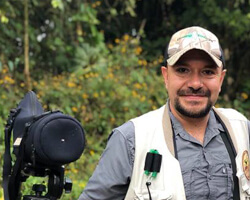
Northern Ecuador Birding Paradise – Hummingbird and Antpitta Extravaganza November 2024/2025
Ecuador has the highest bird species diversity per square kilometer on the planet and offers some of the best birding in South America. Due to the short distances to drive, good tourist infrastructure, and wonderful lodges and other facilities for birders, including a multitude of hummingbird and antpitta feeder stations as well, Ecuador is perhaps the obligatory destination on the continent!
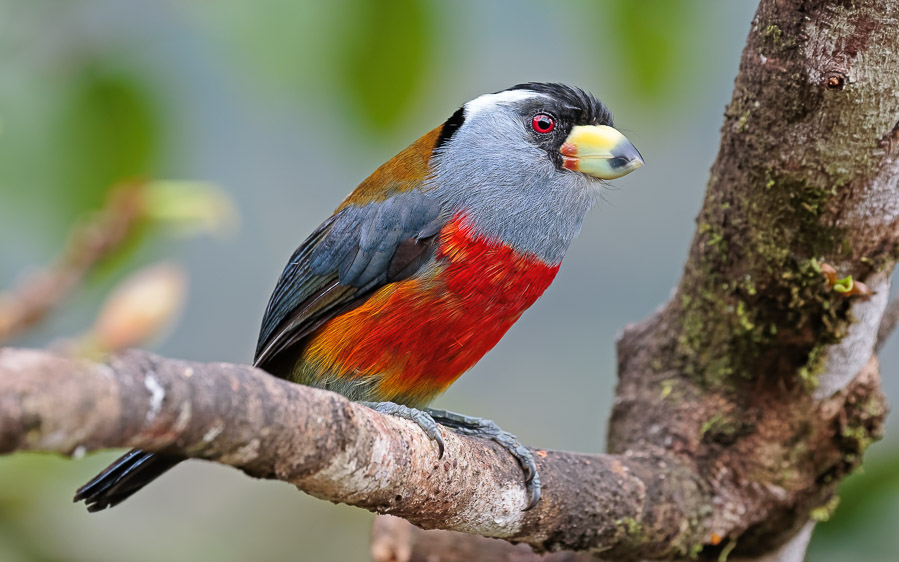
Northern Ecuador is truly a birding paradise. You will have the chance to see the best of the country in terms of birding. The west and east slopes of the Andes together make for an exciting 16-day tour.
Perhaps no other tour shows you such a large selection of classic and amazing Neotropical birds. During these 16 days we will look for Andean Condor , Andean Cock-of-the-rock , Giant Hummingbird , Torrent Duck , White-capped Dipper , Sunbittern , Sword-billed Hummingbird , Lyre-tailed Nightjar , Yellow-throated Toucan , Toucan Barbet , Choco Toucan , Plate-billed Mountain Toucan , Crimson-rumped Toucanet , Golden-collared Toucanet , Choco Trogon , Golden-headed Quetzal , Crested Quetzal , Scarlet-breasted Fruiteater , White-faced Nunbird , Powerful Woodpecker , Giant Conebill , Ocellated Tapaculo , Tanager Finch , Rufous-bellied Seedsnipe , and Oilbird .
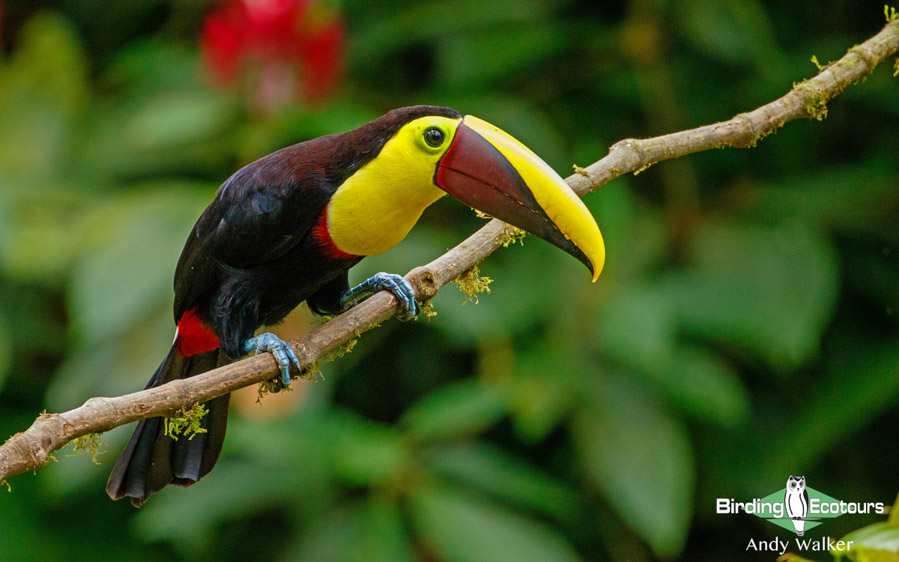
In addition, a good number of antpittas, including Rufous Antpitta , Giant Antpitta , Yellow-breasted Antpitta , Ochre-breasted Antpitta , Moustached Antpitta , Tawny Antpitta , Plain-backed Antpitta , White-bellied Antpitta , Chestnut-crowned Antpitta , and Chestnut-naped Antpitta , might also be found.
The number of hummingbirds and tanagers will be amazing, including colorful species like Violet-tailed Sylph , Brown Inca , Collared Inca , Gorgeted Sunangel , Velvet-purple Coronet , Ecuadorian Piedtail , Gould’s Jewelfront , and Wire-crested Thorntail . We can easily surpass 50 species of hummingbirds on the trip. Tanagers are also a large family to be encountered on this trip, with species such as Grass-green Tanager , Saffron-crowned Tanager , Flame-faced Tanager , Blue-winged Mountain Tanager , Beryl-spangled Tanager , Scarlet-bellied Mountain Tanager , Orange-eared Tanager , Golden Tanager , Golden-eared Tanager , Glistening-green Tanager , and the incredible Moss-backed Tanager . If we are lucky we might also encounter hard-to-find species like Andean Potoo , Black-and-white Hawk-Eagle , Long-wattled Umbrellabird , Fiery-throated Fruiteater , Golden-winged Tody-Flycatcher , and Peruvian Antpitta .
We invite you to join us and enjoy this birding paradise!
In some years, this trip can be combined with our Ecuador: The Amazon tour and/or with our Galápagos: Natural History Extravaganza tour, please also ask for details of possible additional departures should you wish to combine.
Itinerary (17 days/16 nights)
Day 1. arrival in quito.
You will arrive at the Mariscal Sucre International Airport in Quito. Your guide will be waiting for you to help with your baggage, take you to your hotel, and go over the schedule for the next day. Dinner is on your own.
Overnight: Hotel in Quito
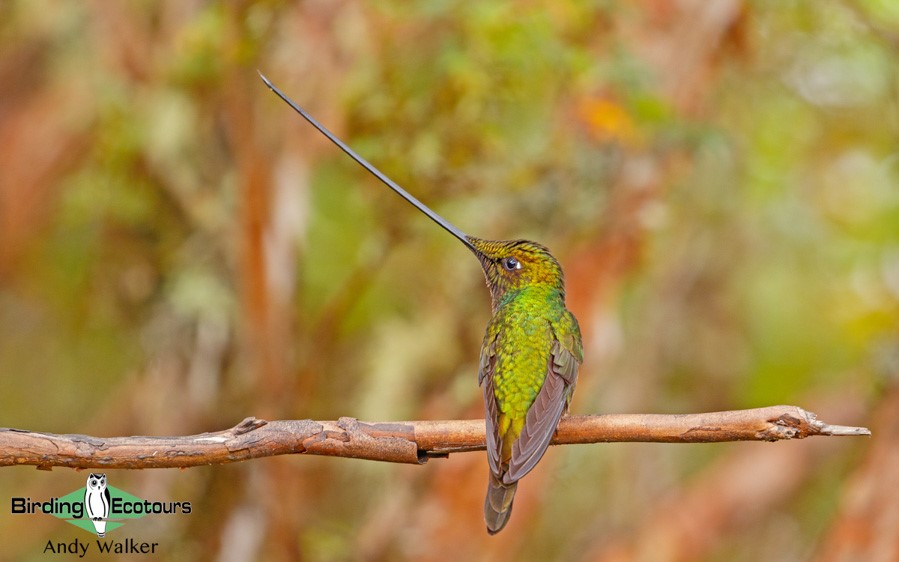
Day 2. Yanacocha Reserve , Old Nono-Mindo Road and Tandayapa Valley
Today we will start our adventure early to explore the Yanacocha Reserve on the north-western side of the Pichincha Volcano. We will visit our first hummingbird feeders with incredible species such as Sword-billed Hummingbird , Buff-winged Starfrontlet , Shining Sunbeam , Tyrian Metaltail , Sapphire-vented and Golden-breasted Pufflegs , Lesser Violetear , and Great Sapphirewing . If we are extremely lucky we might find the Critically Endangered (IUCN) and seldom-seen Black-breasted Puffleg . Other birds include Scarlet-bellied Mountain Tanager , Barred Fruiteater , Andean Guan , Rufous Wren , Tufted Tit-Tyrant , White-throated and White-banded Tyrannulets , Brown-backed Chat-Tyrant , Tawny Antpitta , Rufous Antpitta , Spectacled Whitestart , Great Thrush , Red-crested Cotinga , Blue-backed and Cinereous Conebills , and much more for our first introduction to Ecuador birds. After lunch we will continue birding along the Old Nono-Mindo Road, and with luck we will spot our first Plate-billed Mountain Toucan . Later in the afternoon, we will visit the Zuraloma Reserve where with luck, we can see Tawny , Chestnut-crowned and Chestnut-naped Antpitta feeding at a relatively new antpitta feeding station here.
Overnight: Sachatamia Lodge , Mindo
Day 3. Upper Tandayapa Valley and Bellavista Cloud Forest Reserve
After an early breakfast we will visit the upper portion of the Tandayapa Valley and the Bellavista Cloud Forest Reserve. Here we will look for Toucan Barbet , Green-and-black Fruiteater , Masked Trogon , Blue-and-black Tanager , Blue-winged Mountain Tanager , Strong-billed Woodcreeper , Crimson-mantled Woodpecker , Cinnamon Flycatcher , White-winged Brushfinch , Grey-breasted Wood Wren , Grass-green Tanager , Andean Guan , and White-throated Quail-Dove . We will put all our efforts into localizing the most wanted Ocellated Tapaculo and Tanager Finch .
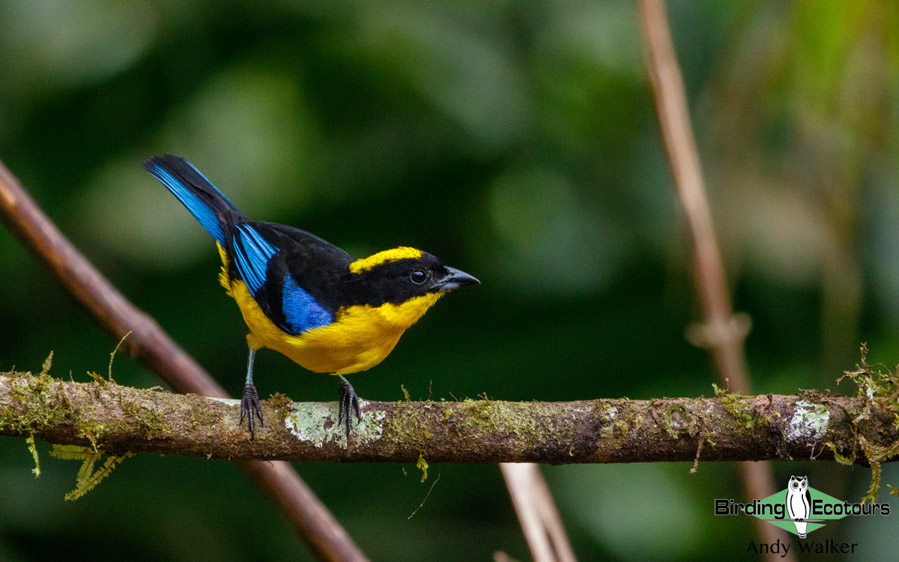
The Bellavista feeders include hummingbirds such as Speckled Hummingbird , Collared Inca , Buff-tailed Coronet , Fawn-breasted Brilliant , and Gorgeted Sunangel . We will find time to visit the San Tadeo feeders during our visit to Mindo to see the spectacular Plate-billed Mountain Toucan visiting feeders at eye level, providing amazing views of this highly desirable species. We will then return to Sachatamia Lodge and look for Lyre-tailed Nightjar , Black-and-white Owl , and hopefully Colombian Screech Owl .
Day 4. Amagusa Reserve, Mashpi area
Today we will head to the Mashpi area and visit the Amagusa Reserve. This private property protects over 130 hectares (320 acres) of recovering forest. The location of this forest, within an Important Bird Area (IBA), is particularly special as it is the last foothill forest directly connecting to the lower subtropical western forest of Ecuador. It is a unique location and the large numbers of Chocó endemics are a particular drawcard for visiting birders. During your visit we will enjoy bird feeders that may attract species such as Glistening-green Tanager , Black-chinned Mountain Tanager , Orange-fronted Barbet , Orange-breasted Fruiteater , Golden Tanager , Flame-faced Tanager , Rufous-throated Tanager , Orange-bellied Euphonia and Toucan Barbet . The area is also excellent for other sought after Chocó birds including Black Solitaire , Indigo Flowerpiercer , Moss-backed Tanager , Golden-collared Honeycreeper , Rose-faced Parrot , Choco Vireo and Choco Tyrannulet . We should enjoy the amazing feeders at Amagusa and explore the forest in search of more elusive species such as Dusky Pigeon , Pacific Tuftedcheek , Rufous-rumped Antwren , Slaty Spinetail , Narino Tapaculo , and if we are lucky the splendid Black-tipped Cotinga .
In the afternoon we will return to Sachatamia for dinner and a good night’s sleep.
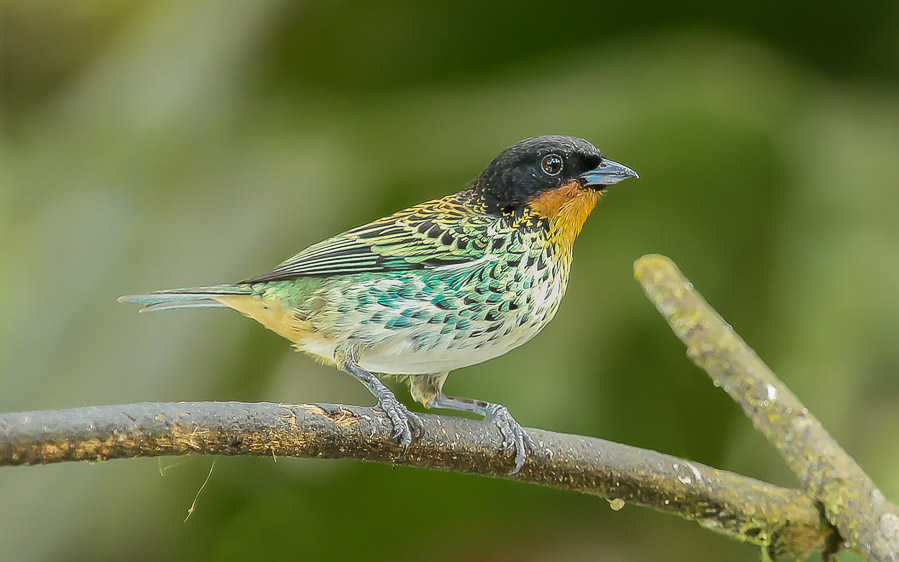
Day 5. Río Silanche Bird Sanctuary
Today we will again have an early start to bird the Río Silanche Bird Sanctuary , another private reserve of the Mindo Cloudforest Foundation. This hilly lowland reserve is great for Chocó specialists such as Purple-chested Hummingbird , Choco Trogon , Stub-tailed Antbird , Slate-throated Gnatcatcher , Orange-fronted Barbet , Dusky Pigeon , Collared Aracari , Bronze-winged Parrot , Black-cheeked Woodpecker , Guayaquil Woodpecker , Red-rumped Woodpecker , Great Antshrike , White-flanked Antwren , Slaty Antwren , Zeledon’s Antbird , Chestnut-backed Antbird , and Red-faced and Slaty Spinetails . In addition we hope to find Black-winged Saltator , Buff-rumped Warbler , Crested Guan , Lanceolated Monklet , Rose-faced Parrot , Double-toothed Kite , Barred Hawk , Sooty-headed and Choco Tyrannulets , Green Honeycreeper , and Purple Honeycreeper . If we are very lucky the striking Scarlet-breasted Dacnis might be found.
After a whole morning birding Silanche we will return to Sachatamia in the afternoon to enjoy the hummers at the feeders, which may include Brown Violetear , Brown Inca , Violet-tailed Sylph , Velvet-purple Coronet , Green-crowned Brilliant , Purple-bibbed Whitetip , White-booted Racket-tail , Purple-collared Woodstar , Crowned Woodnymph , Andean Emerald , Rufous-tailed Hummingbird , and Sparkling Violetear .
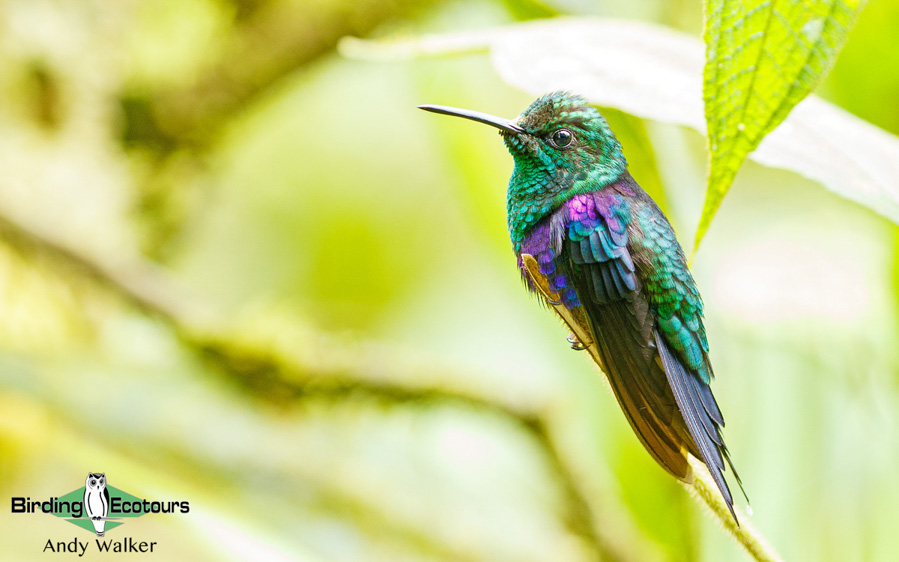
Day 6. Milpe Bird Sanctuary
The Milpe Bird Sanctuary is another obligatory birding stop near Mindo. We will spend the entire day here, looking for Chocó endemics that occur here: Glistening-green Tanager , Choco Trogon , Choco Toucan , Club-winged Manakin , Scaly-throated Foliage-gleaner , Ecuadorian Thrush , Spotted Woodcreeper , Ornate Flycatcher , Russet Antshrike , Bay-headed Tanager , Band-backed Wren , Crimson-rumped Toucanet , Green Thorntail , Maroon-tailed Parakeet , Bay Wren , Golden-headed Quetzal , Dusky-faced Tanager , Chestnut-capped Brushfinch , Ruddy Foliage-gleaner , and the gorgeous Moss-backed Tanager .
Day 7. Refugio Paz de las Aves and transfer to Quito
Refugio Paz de las Aves and Angel Paz are synonymous with respect to birds and antpittas, as the first person to attract and feed antpittas at worm feeder stations, Angel Paz, has turned his property from a ranch into a birders’ paradise. We will have an early start to watch the Andean Cock-of-the-rock lek. After their show we should be able to come across Giant Antpitta , Yellow-breasted Antpitta , Chestnut-crowned Antpitta , Moustached Antpitta , Ochre-breasted Antpitta , and Rufous-breasted Antthrush devouring a worm buffet.
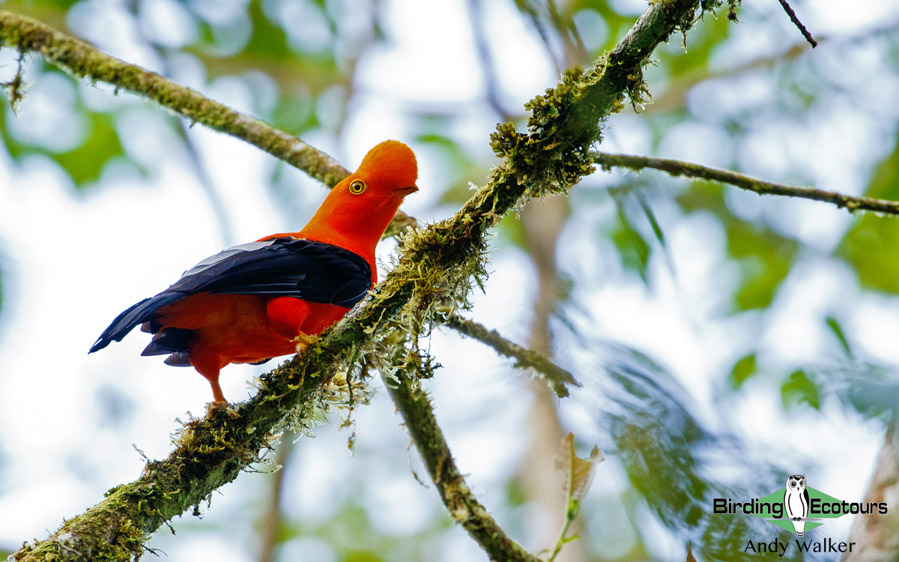
We will also be looking for Dark-backed Wood Quail , Plate-billed Mountain Toucan , Crimson-rumped Toucanet , Olivaceous Piha , Blue-winged Mountain Tanager , Montane Woodcreeper , Narino Tapaculo , Three-striped Warbler , Tricolored Brushfinch , Powerful Woodpecker , Strong-billed Woodcreeper , Slaty-capped Shrike-Vireo , Streaked Flycatcher , Orange-crowned Euphonia , Olive-striped Flycatcher , Lesser Greenlet , Marble-faced Bristle Tyrant , Pacific Antwren , Plumbeous Kite , and many more.
We will take some time to visit the Alambi Cloud Forest Reserve’s hummingbird feeders and fruit feeders, which are frequented by Red-headed Barbet , Crimson-rumped Toucanet , and Golden Tanager . Then we will return to Quito, looking for Giant Hummingbird on the way.
Day 8. Antisana Ecological Reserve and transfer to Termas de Papallacta
After a week on the western slope of the lower Andes we will climb up in elevation to the Antisana Ecological Reserve. The Antisana Volcano has a height of 5,704 meters (18,714 feet). The newly-formed Antisana Ecological Reserve was until recently a number of extensive ranches. Today it is a well-known nesting site for Andean Condor . We will enjoy a different birding day at high elevation, enjoying species such as Carunculated Caracara , Black-chested Buzzard-Eagle , Aplomado Falcon , Variable Hawk , Many-striped Canastero , Stout-billed Cinclodes , Chestnut-winged Cinclodes , Black-winged Ground Dove , Plumbeous Sierra Finch , Andean Lapwing , Silvery Grebe , Andean Coot , Andean Teal , Andean Gull , Andean Duck , Yellow-billed Pintail , Giant Hummingbird , and Ecuadorian Hillstar .
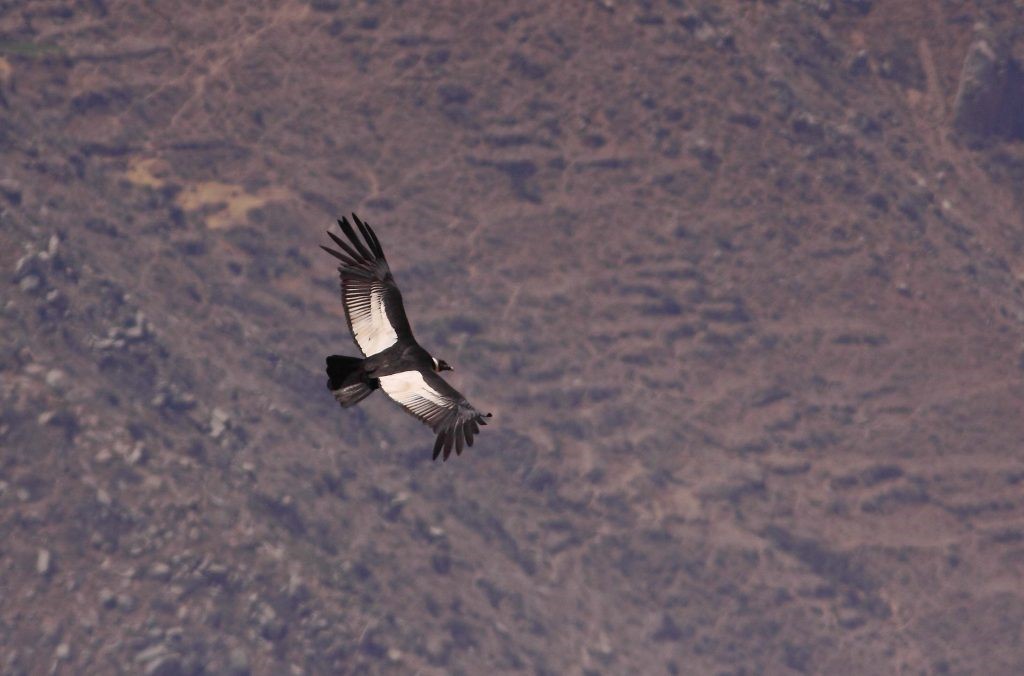
After a full morning birding the Laguna de la Mica in the reserve we will stop for lunch at Tambo Condor, another area of the reserve. In the afternoon we will drive to Termas de Papallacta.
Overnight: Termas de Papallacta , Papallacta
Day 9. Papallacta and transfer to Cabañas San Isidro
Before breakfast, depending on the weather, we will backtrack slightly to visit the highland paramo of Papallacta, looking for the most wanted Rufous-bellied Seedsnipe . Other birds here include Brown-backed Chat-Tyrant , Plumbeous Sierra Finch , Chestnut-winged Cinclodes , Many-striped Canastero , Streak-throated Bush Tyrant , Paramo Ground Tyrant , White-chinned Thistletail , Sedge Wren , Brown-bellied Swallow , Glossy Flowerpiercer , Black Flowerpiercer , and more. We will return for a late breakfast and depart around midday to make our way to our next accommodation, Cabañas San Isidro.
Overnight: Cabañas San Isidro, Cosango
Days 10 – 11. Two full days around San Isidro
The next two days we will spend birding around San Isidro. The lodge grounds include species such as Masked Trogon , Golden-headed and Crested Quetzals , Inca Jay , Great Thrush , Glossy-black Thrush , and Andean Motmot. Other possible species are Montane Woodcreeper , Rufous-crowned Tody-Flycatcher , Streaked Tuftedcheek , White-capped Parrot , Yellow-billed Cacique , Streak-headed Antbird , Black-eared Hemispingus , Spotted Barbtail , Olive-backed Woodcreeper , Golden-crowned Flycatcher , Black-crested Warbler , Barred Antthrush , White-bellied Antpitta , Ash-colored Tapaculo , Mountain Wren , Bluish Flowerpiercer , Beryl-spangled Tanager , Barred Becard , Golden-naped Tanager , Rufous Spinetail , and Grass-green Tanager .
We will also look for some interesting night birds, such as “ San Isidro Owl ” (undescribed), Andean Potoo , Rufous-bellied Nighthawk , and Oilbird . The hummingbird feeders at San Isidro include species like Fawn-breasted Brilliant , Speckled Hummingbird , Long-tailed Sylph , Bronzy Inca , Buff-tailed Coronet , Collared Inca , and Chestnut-breasted Coronet .
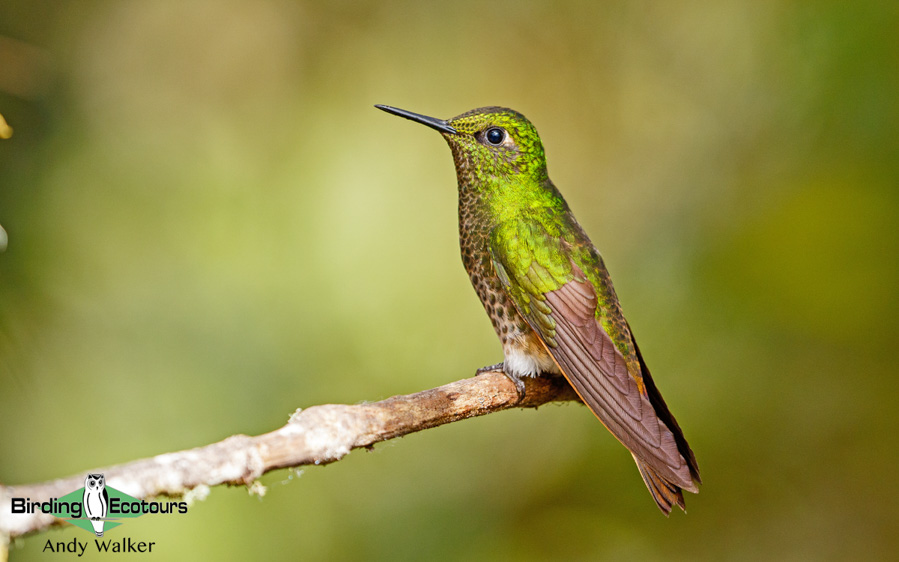
Day 12. Loreto Road and WildSumaco Lodge
After a late breakfast we will continue down the east slope of the Andes to the Loreto Road. We will look for Slaty-backed Chat-Tyrant , Black-chested Fruiteater , Golden-eyed Flowerpiercer , Yellow-throated Tanager , and Chestnut-bellied Thrush . Along the Loreto Road we have chances to see Green-backed Hillstar , Cliff Flycatcher , Lemon-browed Flycatcher , our first Paradise Tanager , Crested Oropendola , Yellow-browed Sparrow , Black-billed Thrush , Violaceous Jay , Blue-headed Parrot , Greyish Saltator , Swallow Tanager , Orange-eared Tanager , Rufous-naped Greenlet , and Montane Foliage-gleaner .
We will arrive at WildSumaco Lodge in the afternoon, and with luck we will have good birding activity along the road with species such as Plumbeous Pigeon , Speckled Chachalaca , Yellow-throated Toucan , Gilded Barbet , Lineated Woodpecker , Collared Trogon , Many-banded Aracari , Lemon-browed Flycatcher , Turquoise Tanager , Golden-eared Tanager , White-lored Euphonia , Bronze-green Euphonia , Foothill Elaenia , Saffron-crowned Tanager , Lettered Aracari , and Sickle-winged Guan . At night we will try for Band-bellied Owl around the lodge.
Overnight: WildSumaco Lodge, Sumaco
Days 13 – 14. WildSumaco
During the next two days we will be birding around WildSumaco Lodge, looking for Coppery-chested Jacamar , Yellow-throated Spadebill , Grey-tailed Piha , Military Macaw , Spot-winged Parrotlet , Plain-winged Antwren , White-streaked Antvireo , Crimson-bellied Woodpecker , Wing-banded Wren , Scarlet-breasted Fruiteater , Fiery-throated Fruiteater , Black-billed Treehunter , Lined Antshrike , and Dusky Spinetail . In addition we may find Squirrel Cuckoo , Marble-faced Bristle Tyrant , Slaty-capped Flycatcher , Dusky-capped Flycatcher , Ecuadorian Tyrannulet , Ornate Antwren , Large-headed Flatbill , Blackish Rail , Blue-naped Chlorophonia , Golden-collared Toucanet , White-eyed Parakeet , Olivaceous Woodcreeper , Long-tailed Tyrant , Black-streaked Puffbird , Black-and-white Tody-Flycatcher , and Channel-billed Toucan .
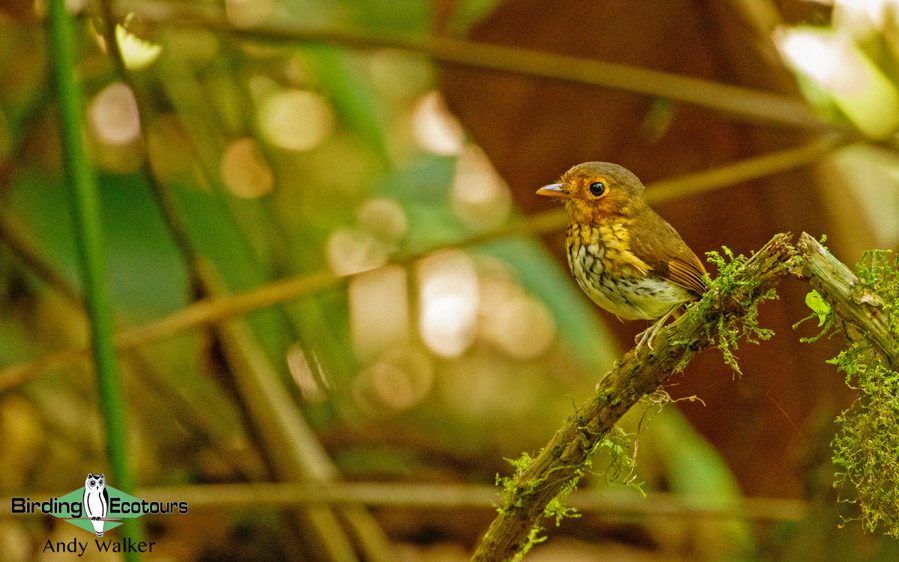
The WildSumaco antpitta feeding stations should provide Ochre-breasted Antpitta and sometimes Plain-backed Antpitta and Chestnut-crowned Gnateater .
The WildSumaco hummingbird feeders are among the best, and we can get species such as Napo Sabrewing , Wire-crested Thorntail , Gould’s Jewelfront , Black-throated Brilliant , Violet-fronted Brilliant , Many-spotted Hummingbird , Golden-tailed Sapphire , Ecuadorian Piedtail , Grey-chinned Hermit , Gorgeted Woodstar , and Wire-crested Thorntail .
At night we also can try for Tropical Screech Owl , Rufescent Screech Owl , and Foothill Screech Owl .
Day 15. Guango Lodge
After breakfast and the last birding morning at WildSumaco we will begin our return to Quito. Before crossing the Papallacta pass we will stop for the afternoon and a night at Guango Lodge . We will spend the afternoon around the lodge.
Overnight: Guango Lodge , Papallacta
Day 16. Papallacta Lodge, transfer to Quito and transfer to the airport
After a late breakfast we will go and visit the Papallacta area again in case we missed some of the species during our first visit. We will try for Rufous-bellied Seedsnipe and also for Agile Tit-Tyrant and Giant Conebill .
We will arrive at our hotel in Quito for a late lunch, and you can have a day-use of the hotel to take a shower, organize your luggage, and be transferred to the airport in case you have an evening or midnight flight. Participants who decide to spend the night in Quito and fly back home early in the morning can do that without extra charge.
Day 17. Transfer to the airport and departure
Participants who have an early flight after breakfast will be transferred to the airport.
Please note that the itinerary cannot be guaranteed as it is only a rough guide and can be changed (usually slightly) due to factors such as availability of accommodation, updated information on the state of accommodation, roads, or birding sites, the discretion of the guides and other factors. In addition, we sometimes have to use a different international guide from the one advertised due to tour scheduling.
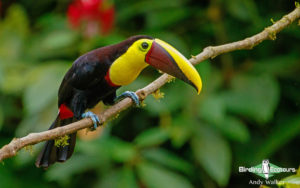
Yellow-throated Toucan
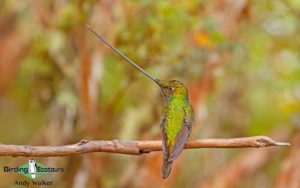
Sword-billed Hummingbird
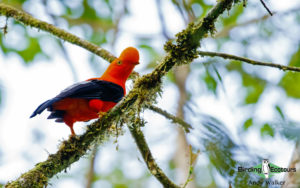
Andean Cock-of-the-rock
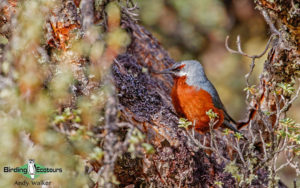
Giant Conebill
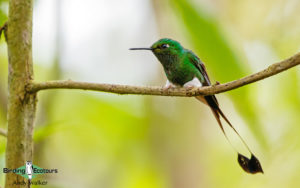
White-booted Racket-tail
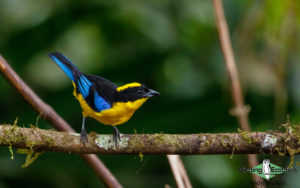
Blue-winged Mountain Tanager
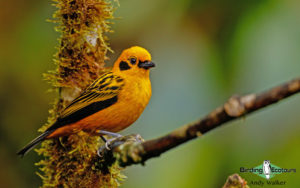
Golden Tanager
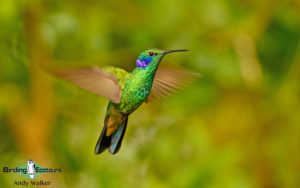
Lesser Violetear
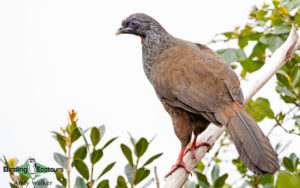
Andean Guan
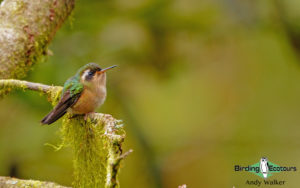
Speckled Hummingbird
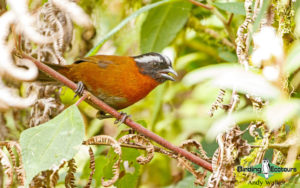
Tanager Finch
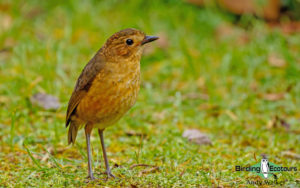
Tawny Antpitta
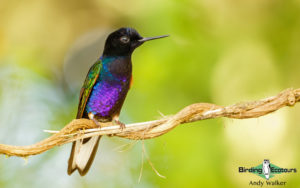
Velvet-purple Coronet
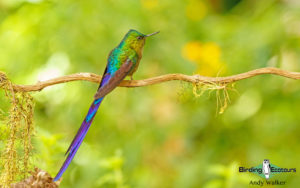
Violet-tailed Sylph
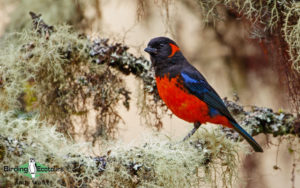
Scarlet-bellied Mountain Tanager
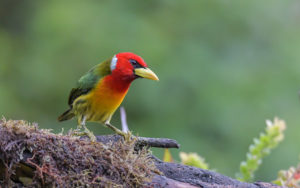
Red-headed Barbet
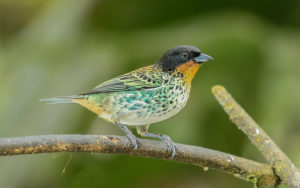
Rufous-throated Tanager
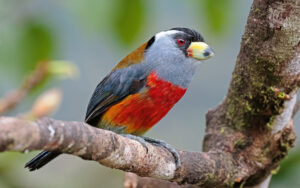
Toucan Barbet
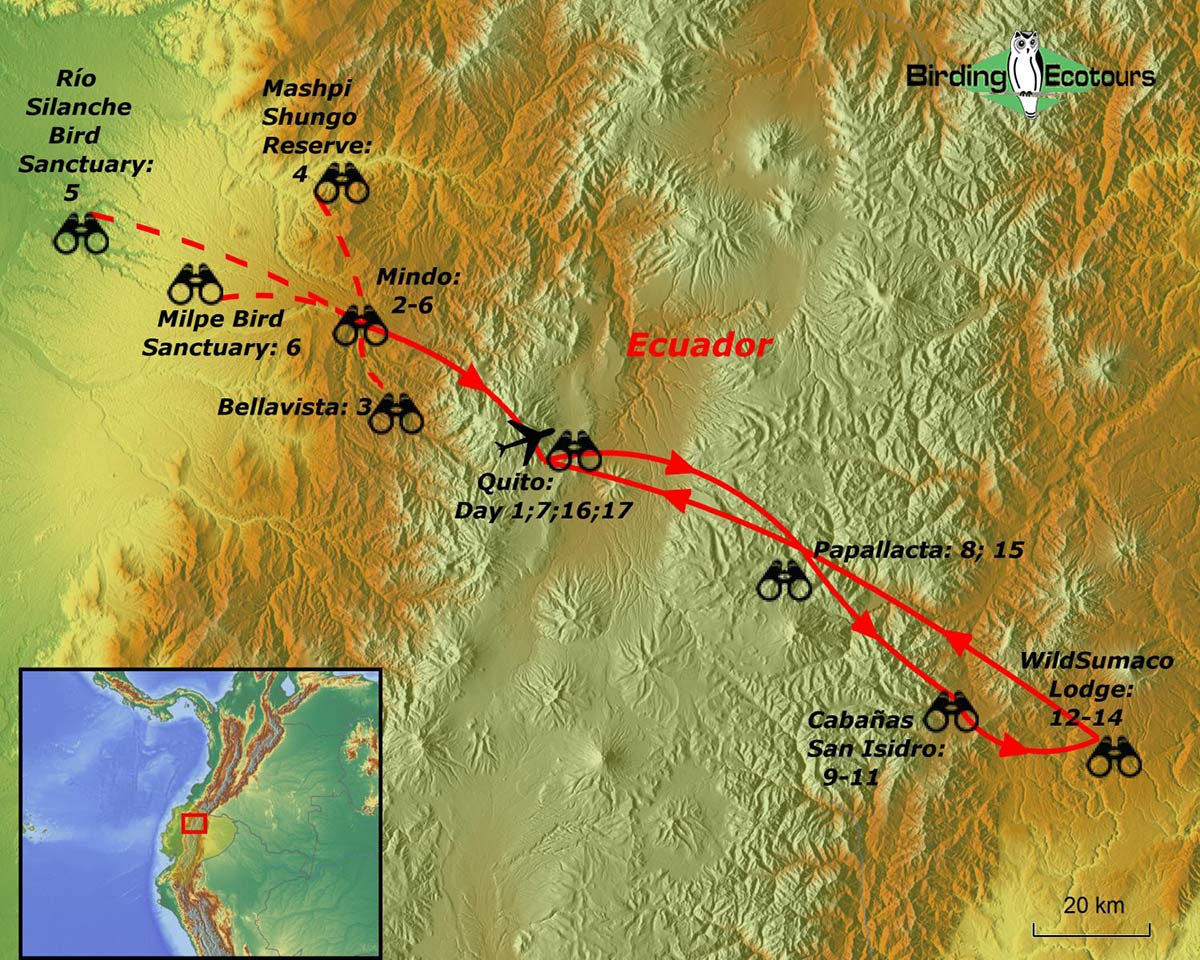
Northern Ecuador Birding Paradise – Antpitta and Hummingbird Extravaganza: Set Departure Trip Report
05-22 november 2021, by galo real.
DOWNLOAD TRIP REPORT
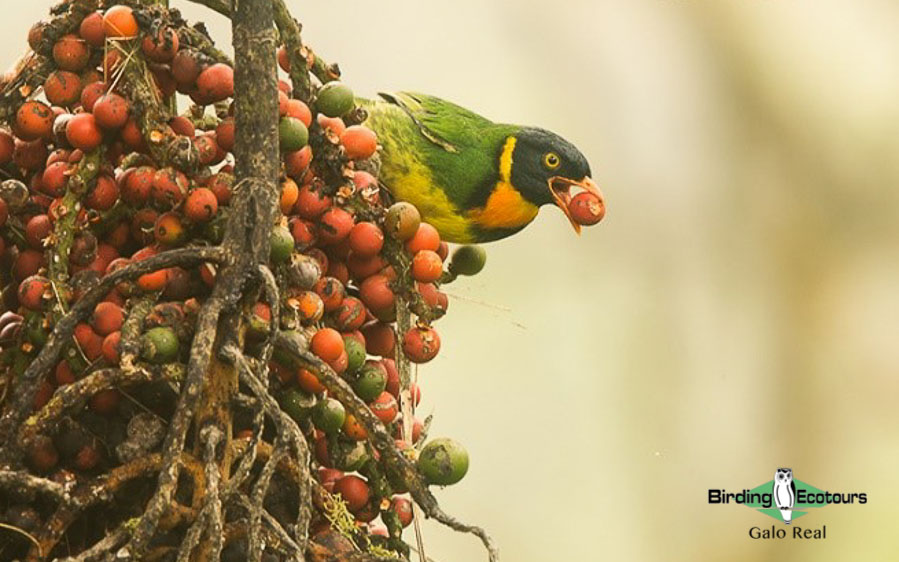
This 18-day northern Ecuador set departure tour began at 9,350 feet (2,850 meters) above sea level in Quito, the capital of Ecuador . From here we explored to the east, stopping at the Antisana Ecological Reserve for the iconic Andean Condor and many other highland specials. As we continued east up and over the Papallacta Pass, at 14,000 feet (4,200 meters), the scenery quickly changed from Inter-Andean valley grasslands to Polylepis Elfin forest and paramo. We then continued down the slope to the Guango River where we saw a variety of hummers including the ridiculous-looking Sword-billed Hummingbird and a multitude of mixed tanager flocks.
As we worked further east to the foothills of the Sumaco Volcano Biosphere Reserve , the habitat and climate changed suddenly to highland Amazon. At 4,900 feet (1,500 meters) we even saw Napo Saki monkeys and a Tayra , as well as various manakins, toucans, woodpeckers and hummingbirds. We then doubled back west to the cloud forests of San Isidro, a haven for birds. We were surprised one evening when we saw a Mountain Tapir , right next to the lodge. We then crossed through Quito and down the west slope to the area of Mindo, which was a treasure trove of new species. Eighteen days flew by and before we knew it, we were back in Quito heading to the airport for our flights home. Ecuador has around 18% of the world’s bird species and this northern itinerary, that includes both east and west slope and experiences several different ecosystems, always produces an impressive trip list which includes many Ecuadorian and neotropical specials.
Detailed Report
Day 1, 5 th november 2021. arrival in quito.
Today was an arrival day and as members of the group started to arrive, they were met at the airport and transferred to the hotel which was located only 15 minutes away.
Day 2, 6 th November 2021. Buffer day in Quito
Today was a buffer day to allow the rest of the group to arrive in Quito. The morning was spent birding the hotel grounds before breakfast. The area surrounding the hotel consists of typical inter-Andean dry forests and is normally very birdy. Our first sightings included the likes of Great Thrush , Eared Dove , Sparkling Violetear , Saffron Finch , and Vermilion Flycatcher .
After breakfast while the others enjoyed the gardens and took time to rest, the remainder of the group was fetched from the airport. In the afternoon we got back together and went over the schedule for the trip before enjoying our dinner.
Day 3, 7 th November 2021. Antisana National Park birding
After an early breakfast, we drove for one hour to Antisana National Park. This 120,000-hectare reserve conserves large tracts of paramo, wetlands and Andean forest and is always a great spot for birding and mammal-watching.
As soon as we arrived, we encountered Chestnut-winged Cinclodes , Great Thrush , and Sedge Wren , as well as a gorgeous female Ecuadorian Hillstar which was perched up on a chuquiragua flower. The weather was particularly kind to us which made the surrounding landscapes appear even more beautiful.
We continued to “Casa Vieja,” an abandoned home left over from when the land was owned privately. Here we saw another female Ecuadorian Hillstar and we were all able to get some nice shots and looks. Soon afterwards, we spotted a male Andean Condor and the whole group was dumbstruck as we watched him soar overhead. As the day progressed, we made our way to the pampas or wetland area. This is always a favorite place for Andean Ibis , Andean Gull , and Carunculated Caracara , which we saw well, along with a small group of White-tailed Deer . We even got a couple glimpses of the spectacular Antisana Volcano, before being quickly shrouded by the clouds again.
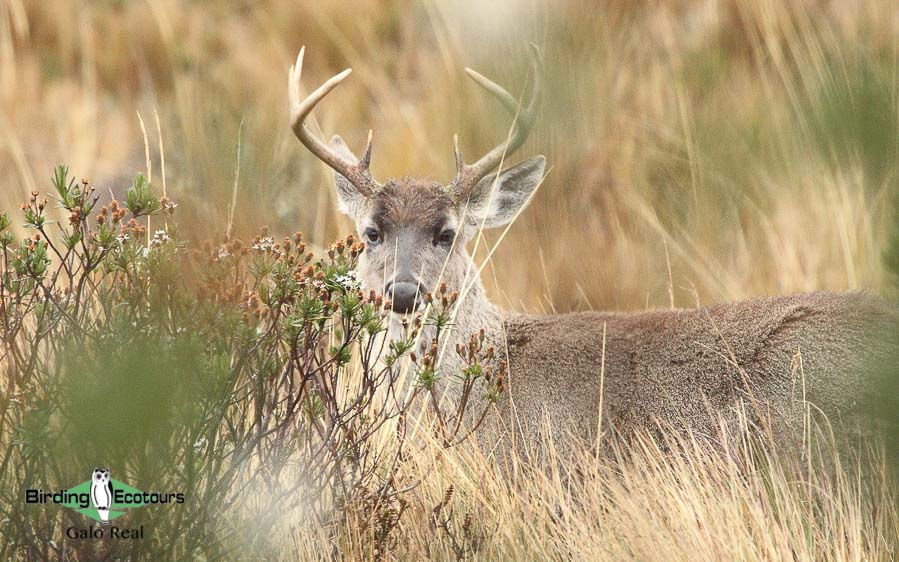
When we arrived at the ranger station, one of the park rangers kindly informed us where the Tawny Antpitta was singing. We all got really nice looks at the antpitta as it belted out its song. We then continued up to Mica Lake, where we saw Andean Teal , Yellow-billed Pintail , and Andean Duck , all out enjoying the lovely weather.
Around midday we made our way to Tambo-Condor Hotel for lunch. This is a nice spot with great food which is run by two condor monitors. As our food arrived, a Giant Hummingbird appeared at the feeders near the outdoor eating area, followed by Sparkling Violetear and Black-tailed Trainbearer , as well as a Black Flowerpiercer . What a great way to enjoy our lunch, especially after a wonderful morning’s birding.
After a nice warm meal, we slowly made our way back to the hotel to rest a bit and prepare for our next day’s adventure in the eastern Andes. Before dinner we all got together to go over the checklist from the day and discuss our schedule for the following morning.
Day 4, 8 th November 2021. Papallacta Pass and transfer to Las Termas
After an early breakfast we checked out and headed directly up the Papallacta Pass which sits at an impressive 13,100 feet (4,000 meters) above sea level. From here we entered the Cayambe Coca Reserve and went as far as the antennas. Initially there was not much activity, with just a couple of Variable Hawks and Great Thrushes being seen. Then a mixed flock fed right in front of us and we got really great looks at Scarlet-bellied Mountain Tanager , Yellow-breasted Brushfinch , and Paramo Tapaculo . Unfortunately, the weather turned really nasty and we decided to head on to our lodge.
In the parking lot and entrance to Las Termas de Papallacta Resort we saw Black and Masked Flowerpiercers , as well as the beautiful Shining Sunbeam . Black-crested Warblers and Mountain Wrens were particularly common around the resort grounds. We wandered the trails in the afternoon which provided some good photographic opportunities before it was time for the evening checklist session and dinner.
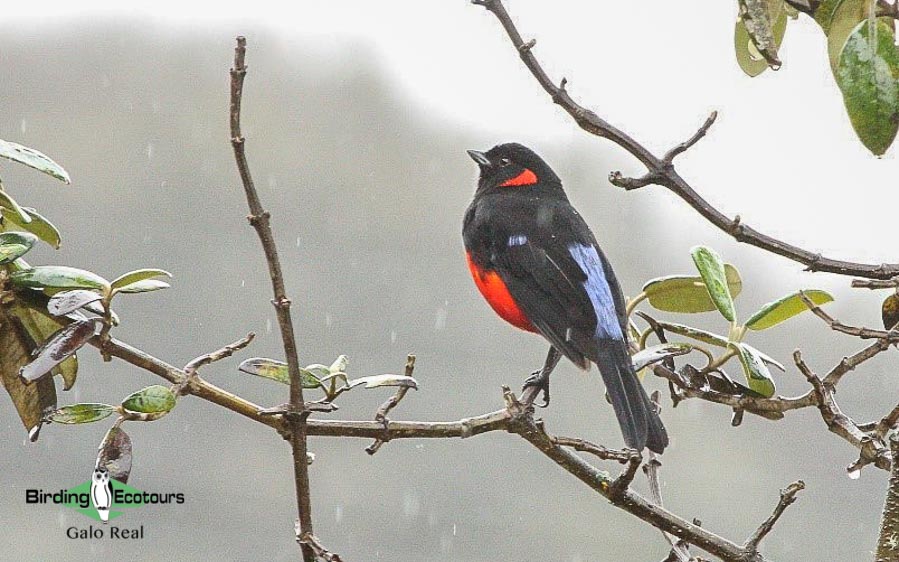
Day 5, 9 th November 2021. Guango Lodge and Papallacta River birding
After some early morning birding and breakfast, we headed east down the mountain to Guango Lodge. Everyone was excited to arrive at this well-known spot for hummingbirds. With almost no effort required, we sat and watched Tourmaline Sunangel , Long-tailed Sylph , Tyrian Metaltail , Buff-winged Starfrontlet , Collared Inca , Chestnut-breasted Coronet , White-bellied Woodstar , and even the magnificent Sword-billed Hummingbird as they visited the flowers and feeders right in front of us, while we were served a nice hot cup of tea or coffee .
We enjoyed the garden’s hummingbird feeders all morning before our lunch was served. After a wonderful hot meal, we walked down to the river. Along the trail a very active flock consisting of Pearled Treerunner , Grey-hooded Bush Tanager , Turquiose Jay , and Spectacled Whitestart was seen feeding in a tree right in front of us. We continued down to the Papallacta River where we saw a Torrent Tyrannulet and White capped Dipper .
After a wonderful day we returned back to Las Termas to get cleaned up before our checklist session and dinner.
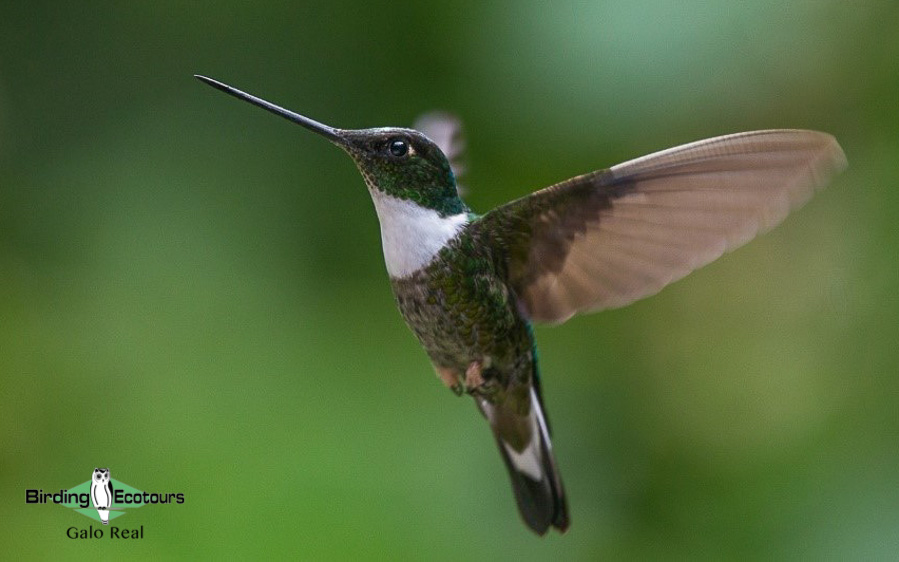
Day 6, 10 th November 2021. Papallacta Pass, Cosanga and WildSumaco Lodge
After breakfast we headed southeast to the Loreto Road where the incredible WildSumaco Lodge is located. The trip takes four hours, but has some nice birding stops along the way. The first stop was in the town of Cosanga, where both male and female Torrent Ducks were enjoying the river while Southern Lapwing and Torrent Tyrannulet were searching for food along the riverbanks. After another two hours of driving, and a couple stops we reached the foothills of the eastern Andes and arrived at WildSumaco Lodge.
Fernanda, the lodge manager, welcomed us and checked us into our accommodation. Before lunch was served, we enjoyed waiting outside and taking pictures and watching new hummingbird species such as Brown Violetear , Wire-crested Thorntail , Fork-tailed Woodnymph , Golden-tailed Sapphire , and Many-spotted Hummingbird .
In the afternoon, after we checked the feeders again, we decided to walk along the lodge entrance road and try for some toucans and woodpeckers. As soon as we started walking, we could hear a toucan calling, we immediately started searching and found a small flock consisting of Channel-billed Toucan , Chestnut-eared Aracari , Gilded Barbet , and Lineated Woodpecker . We could also hear Golden-collared Toucanet as it called in the distance. We birded a little longer until the group decided to head back to rest before dinner.
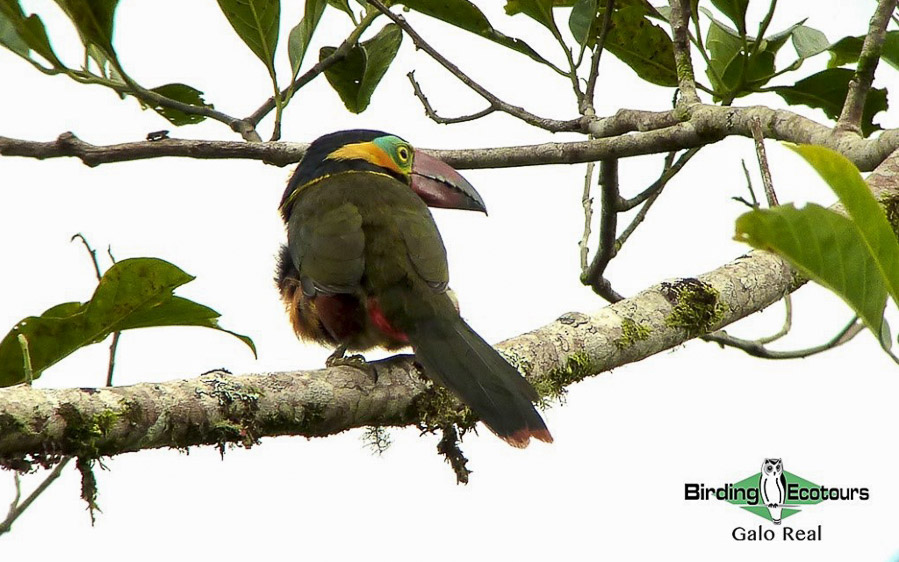
Day 7, 11 th November 2021. Full day birding at WildSumaco Lodge
After a hearty Amazonian-style breakfast, we headed to the trails to watch the antpitta feeding. First to come for the worms was a Plain-backed Antpitta, then Ochre-breasted Antpitta, and then a Slaty-backed Nightingale-Thrush appeared. After everyone was fed, we headed up the trail, on the way we heard a Blue-rumped Manakin and then a decent-sized flock appeared including Blue-crowned Trogon , Summer Tanager , Blue-necked Tanager , and Orange-bellied Euphonia .
We decided to return to the hotel to check the hummingbird feeders before lunch. While watching the feeders, a Tayra appeared in the tree in front of the dining area. Tayra are members of the weasel family and the only species in the genus Eira.
In the afternoon we went birding near the small town of Sumaco, very close to the hotel. There was a nice mixed feeding flock which included the likes of Yellow-tufted Woodpecker , Chestnut-bellied Seedeater , Palm Tanager , Magpie Tanager , Blue-grey Saltator , Black-billed Thrush , and Olivaceous Greenlet .
Later in the afternoon we made our way back to the lodge to get cleaned up before checking our day’s list and enjoying dinner.
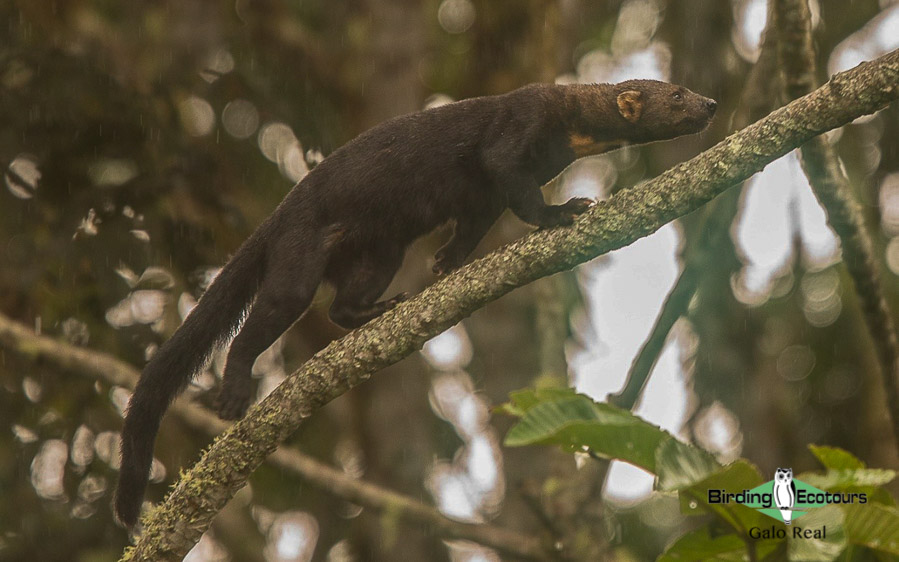
Day 8, 12 th November 2021. Full day birding at WildSumaco Lodge
This morning we awoke to a heavy downpour. When we thought the rain had lightened up, we visited the blind, but the rain soon started up again. We did however manage to see Western Fire-Eye , Black-faced Antpitta , and Swainson’s Thrush . The rest of the morning it rained very hard and so we stayed close to the main lodge. All of a sudden, the rain ceased and in the trees in front of us appeared a family of Napo Saki monkeys taking advantage of the good weather, at last.
After a nice lunch we decided to walk the trails around the lodge while we enjoyed the prolonged good weather. A feeding flock crossed our path which consisted of Magpie Tanager , Gilded Barbet , Green Jay , Golden-collared Toucanet , Lined Antshrike , and Yellow-throated Toucan . Other birds seen on the trail included Paradise Tanager , Bay-headed Tanager , Crested Oropendola , and a pair of Chestnut-fronted Macaws . Right before dinner we spotted a Wattled Guan in a nearby cecropia tree.
Day 9, 13 th November 2021. WildSumaco Lodge to San Isidro
Today was our last day at WildSumaco and we thankfully awoke to good weather, so we decided to visit the blind one more time. That proved to be a good idea as we got nice looks at Red-headed Barbet , Western Fire-Eye , Black-faced Antbird , Swainson’s Thrush , and Canada Warbler . After breakfast, we packed up and left for Cabañas San Isidro . Since it was still early and the weather was nice, we decided to make a few stops before hitting the main road. We wanted to try one more time for Coppery-chested Jacamar , but this time at a different location. We had a response right off the bat, from very near to where we stood. Excitement grew and finally the Coppery-chested Jacamar appeared and perched on a branch right in front of us. A truly great way to start the day. Other good birds here included calling Little Tinamou and Plumbeous Pigeon .
Along the way we wanted to try one more time for Cliff Flycatcher on the Loreto Road. We arrived at the stakeout (which has proved reliable in the past), and almost immediately, there it was, perched on a nearby wire. We also saw Green-backed Hillstar , Palm Tanager , and Swallow-tailed Kite . We arrived at San Isidro right around lunchtime. After our delicious meal we planned to meet on the deck of the lodge after we had settled into our cabins.
In the afternoon, we birded around the lodge where we saw Tawny-bellied Hermit , Long-tailed Sylph , Collared Inca , Montane Woodcreeper , Cinnamon Flycatcher , Pale-edged Flycatcher , Green Jay , and a nice surprise in the form of an Andean Solitaire . Before dinner we had a chance to freshen up and grab our headlamps, just in case. This proved to be a good idea because while we were eating our dinner a ‘San Isidro Owl’ (an unusual subspecies of Black-banded Owl ) showed up and watched us for a while.
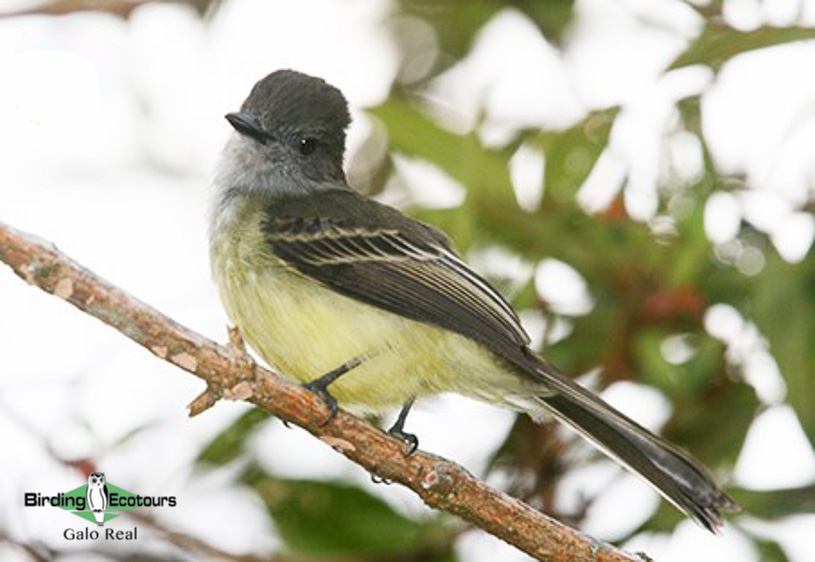
Day 10, 14 th November 2021. Full day birding at San Isidro
Before breakfast we met up on the main balcony of the lodge where we saw Bronzy Inca , Chestnut-breasted Coronet , Masked Trogon , Azara’s Spinetail , Black-billed Peppershrike , and Common Bush Tanager . We birded a little longer before it was time for breakfast. After enjoying our breakfast, we birded the road that passes by the lodge and saw Golden-headed Quetzal , Rufous-crowned Tody-Flycatcher , Bluish Flowerpiercer , and Blue-winged Mountain Tanager .
In the afternoon we visited the Cosanga Valley and Sierra Azul area to see what we could find. There was not a lot of activity, but we did see a small flock which consisted of Black Phoebe , Green Jay , Golden-rumped Euphonia , and Blackburnian Warble r, while a Roadside Hawk was seen nearby.
We made our way back to the lodge around dinner time with ‘San Isidro Owl’ ( Black-banded Owl ) and Mountain Tapir showing for us! What an amazing way to end the day.
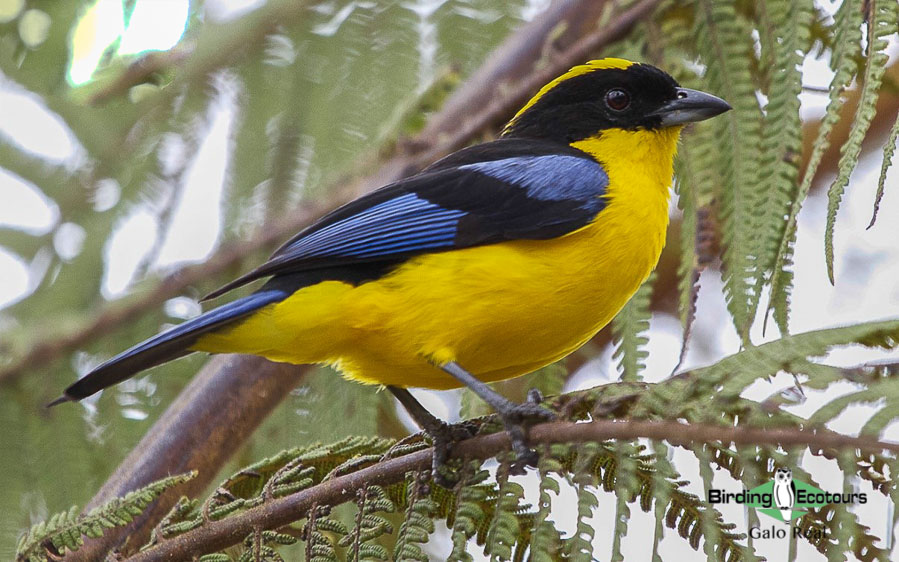
Day 11, 15 th November 2021. Full day birding at San Isidro
In the early morning before breakfast, we spotted Long- tailed Sylph , Tawny-bellied Antpitta , Collared Inca , Fawn-breasted Brillant , Masked Trogon , and Scarlet-rumped Cacique . At 7:30, we met our local guide to show us White-bellied Antpitta . After about 15 minutes of calling, we were almost about to give up when the antpitta showed and stuck around for quite a while, giving us prolonged views. After a delicious and nutritious breakfast, we decided to bird along the Bemejo Road. As we arrived, we immediately spotted Crested Quetzal , and then a couple of minutes later, we saw Emerald Toucanet , Plum-crowned Parrot , and Russet-crowned Warbler .
Around noon, we went back to the lodge for lunch. After our meal and a moment to regroup we met up to visit the Guacamayos Ridge. From the trailhead on the ridge we saw Turquoise Jay , Great Thrush , and Tropical Kingbird . Suddenly a thick fog formed and it was a unanimous decision to head back to the lodge and enjoy some birding in the lodge grounds until dinner.
Day 12, 16th November 2021. San Isidro, Santa Rosa Bird House, and Mindo
After an early breakfast we quickly checked the feeders, where we saw Collared Inca , Buff-tailed Coronet , Green Jay , and Pale-edged Flycatcher . Once all our luggage was loaded, we headed west over the Andes for a five-hour trip to Mindo.
For lunch we stopped at Santa Rosa Bird House, where we saw Gorgeted Sunangel , Violet-tailed Sylph , Velvet-purple Coronet , Empress Brillant , and Dusky Bush Tanager . However, after around four hours of searching, we realized that this time the Plate-billed Mountain Toucan, was not going to come out. After lunch we drove to Septimo Paraiso Lodge , which was our base for the next five nights.
After checking in, we visited the feeders and saw several new hummingbirds for our list, including White-necked Jacobin , White-whiskered Hermit , Brown Inca , White-booted Racket-tail , and Rufous-tailed Hummingbird . After dinner we were all ready for a good night’s sleep, as we had a big day of birding ahead of us tomorrow.
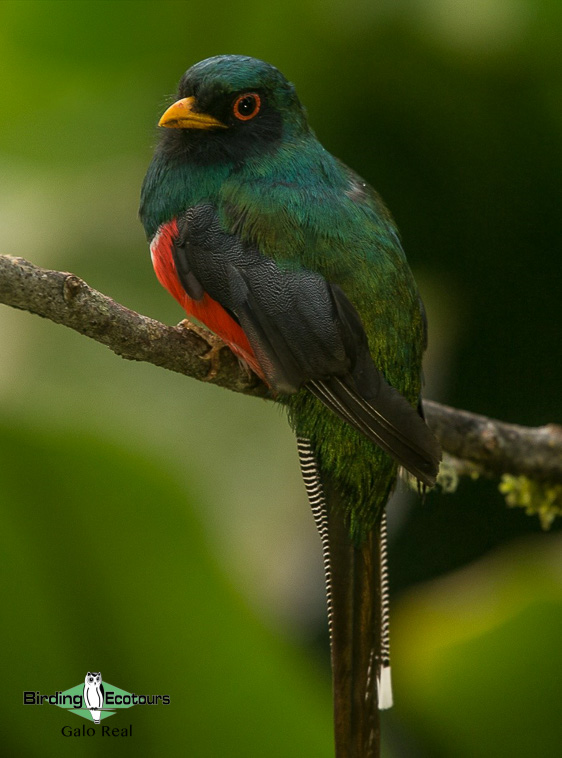
Day 13, 17th November 2021. Refugio Paz de las Aves to Paraiso and Mindo
The day finally arrived to visit the famous antpitta reserve, Refugio Paz de las Aves. In the early morning we met Ángel Paz, in person. Angel took us to see a lek of Andean Cock-of-the-Rocks , and also showed us a group of roosting Rufous-bellied Nighthawks . Along the way we saw Golden-winged Manakin and Golden-crowned Flycatcher . On the way back we saw a bird of prey fly over us and thankfully it perched nearby. With the help of the telescope, we identified the bird as a Collared Forest Falcon .
Next, Angel stopped to feed the Yellow-breasted Antpitta which showed really well and we all were able to get nice shots of this pretty bird. Later, Ochre-breasted Antpitta and Moustached Antpitta were seen as well as a roosting Common Potoo . After a nice morning we drove back to the lodge for lunch. We checked the feeders before lunch and saw White-whiskered Hermit , Andean Emerald , Purple-bibbed Whitetip , and Brown Inca .
In the afternoon we decided to bird the surrounding areas around Mindo. First stop was the Rio Mindo, where we saw Choco Toucan , Bronze-winged Parrot , Swallow Tanager , and Rusty-margined Flycatcher . As the weather was really good, we continued along the road to Nambillo River, where we watched Spotted Sandpiper , Ringed Kingfisher , Masked Water Tyrant , and White-capped Dipper . The afternoon flew by and before we knew it, it was time to go back to the lodge to get ready for dinner and some well-deserved rest.
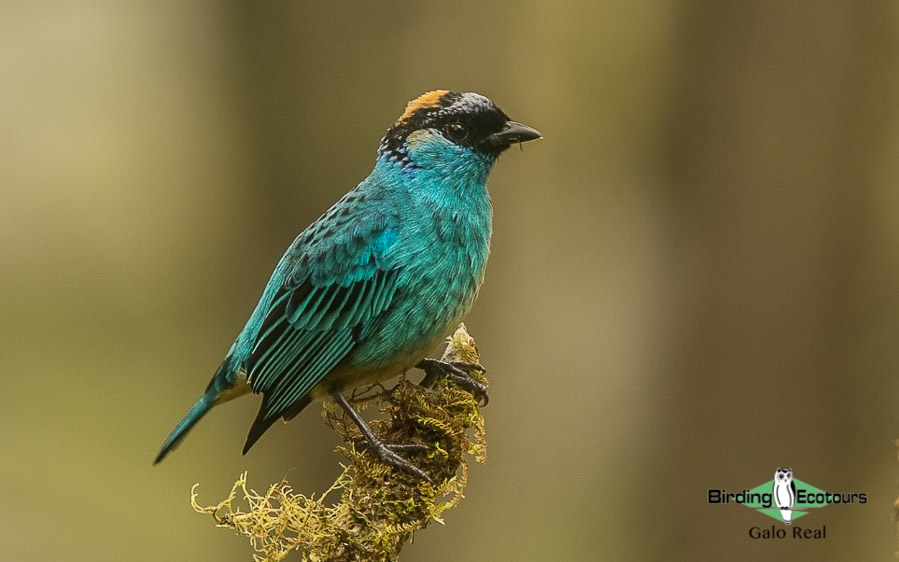
Day 14, 18 th November 2021. Milpe Reserve birding
This morning we had an early breakfast and left for Mindo Cloud Forest Foundation’s Milpe Reserve , which is located near the town of Los Bancos, about 45 minutes from our lodge. Here, we were able to spot Green Thorntail , Crowned Woodnymph , and Rufous-tailed Hummingbird as soon as we walked into the reserve. At the tanager feeders there was not much activity but we did see Red-headed Barbet , Yellow-throated Toucan , Buff-fronted Foliage-Gleaner , Chivi Vireo , and the locally scarce Dusky-faced Tanager and Flame-rumped Tanager .
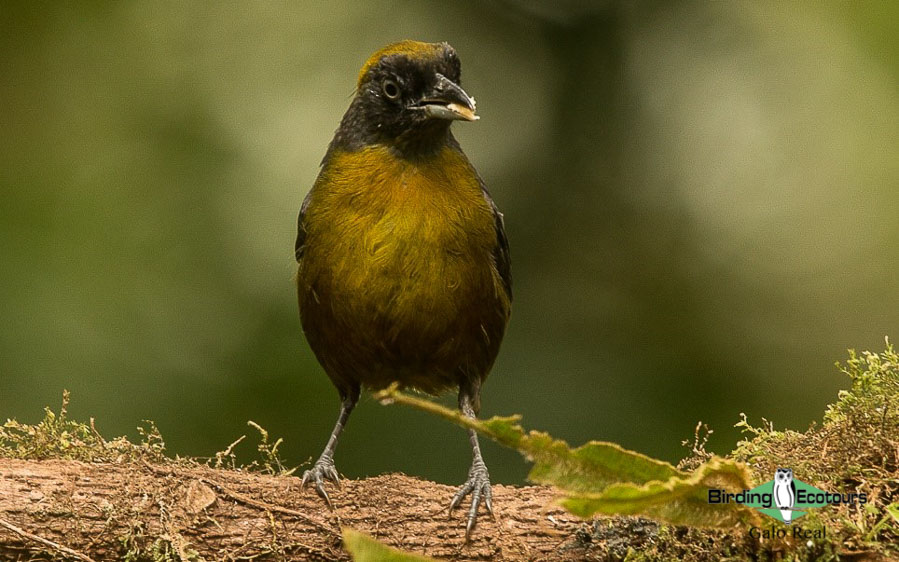
The weather was very pleasant so we walked around the reserve and saw a variety of birds, including the likes of Broad-billed Motmot , One-colored Becard , Ecuadorian Thrush , Fawn-breasted Tanager , Crested Guan , and Masked Water Tyrant . We had a nice lunch at the reserve while we watched Red-faced Spinetail , Rusty-margined Flycatcher , and Guira Tanager . After a good day’s birding we returned to our lodge to get ready for dinner.
Day 15, 19 th November 2021. Full day at Silanche Reserve
We left early this morning for Silanche Reserve, located two hours away. This 400-hectare Choco forest reserve is surrounded by farmland and as such it has become an oasis for many Choco Specials. As soon as we arrived at the observation tower, a small mixed flock greeted us with Ruddy Pigeon , Orange-fronted Barbet , Black-cheeked Woodpecker , Linetaed Woodpecker , Purple-throated Fruitcrow , Choco Tyrannulet , Golden-headed Tanager , Purple Honeycreeper all being new species for us. We decided to walk the main trail and right at the trailhead we saw Purple-chested Hummingbird , Dot-winged Antbird , White-necked Manakin , and Scale-crested Pygmy Tyrant .
The activity slowed down around noon when the sun was high overhead, which was right when lunch was being served. In the afternoon things started to cool off and we spotted a mixed flock which included Collared Aracari , Choco Toucan , Golden-olive Woodpecker , Sooty-headed Tyrannulet , White-browed Gnatcacher , and we also heard a Black-headed Antthrush , We arrived back at Septimo Paraiso Lodge tired and ready to get cleaned up for a nice dinner.
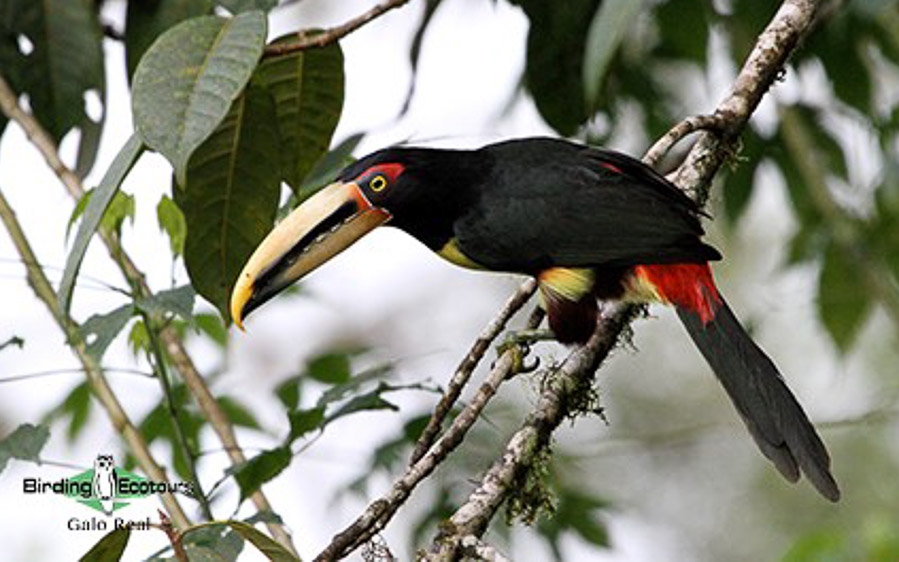
Day 16, 20 th November 2021. Reserva Amagusa birding
We were nearing the end of our tour and today we planned to visit a site that is a very important destination in this part of the Andean Choco. This particular reserve was Reserva Amagusa . Sergio, the owner, was waiting for us on our arrival and this was to be our base for the morning as we spent our time enjoying the many tanager species coming to the feeders. As soon as we arrived, we found our first targets, those being Moss-backed Tanager , Glistening-green Tanager , Rufous-throated Tanager , Flame-faced Tanager , Orange-breasted Fruiteater , Golden Tanager , and Indigo Flowerpiercer.
At the hummingbird feeders we found Green Thorntail , Empress Brillant , Green-crowned Brillant , and White-necked Jacobin . After lunch we returned to the hotel to take a break and pack our bags for the return to Quito.

Day 17, 21 st November 2021. Birding Zuroloma and Yanacocha Reserves and transfer to Quito
We checked out early this morning because we wanted to get to Zuroloma Reserve early to watch the antpittas being fed. As soon as we arrived at Zuroloma, Dario was waiting for us and we headed to the hummingbird and antpitta feeders where we saw Chestnut-naped Antpitta . This particular bird was very friendly and let us get several nice pictures. At that same moment an Andean Guan visited and at the hummingbird feeders nearby we saw Sword-billed Hummingbird , Buff-winged Starfrontlet , and Sapphire-vented Puffleg .
After enjoying the feeders, Dario took us back to the dining area for a delicious homemade breakfast. After our meal we were all fueled up to head back out and search for the recently split Equatorial Antpitta . We walked for 30 minutes and waited around for another 15 minutes, and it was well worth the wait, as we all got great looks and shots of this plump, short-tailed and long-legged creature. A very beautiful bird indeed!
We thanked Dario for the morning and then took a short drive to the Yanacocha Reserve managed by the Jocotoco Foundation. Upon arrival, we saw a flock consisting of Masked Flowerpiercer , Scarlet-bellied Mountain Tanager , and Black-chested Mountain Tanager . We then birded around the reserve for the remainder of the morning.
After a nice lunch we returned to Quito Airport for our Covid tests and then settled back in at our hotel. After getting checked in we went over our checklists and flight schedules for the evening and next morning. We all agreed that the trip had been a great success and that we should get together and bird southern Ecuador in the near future.
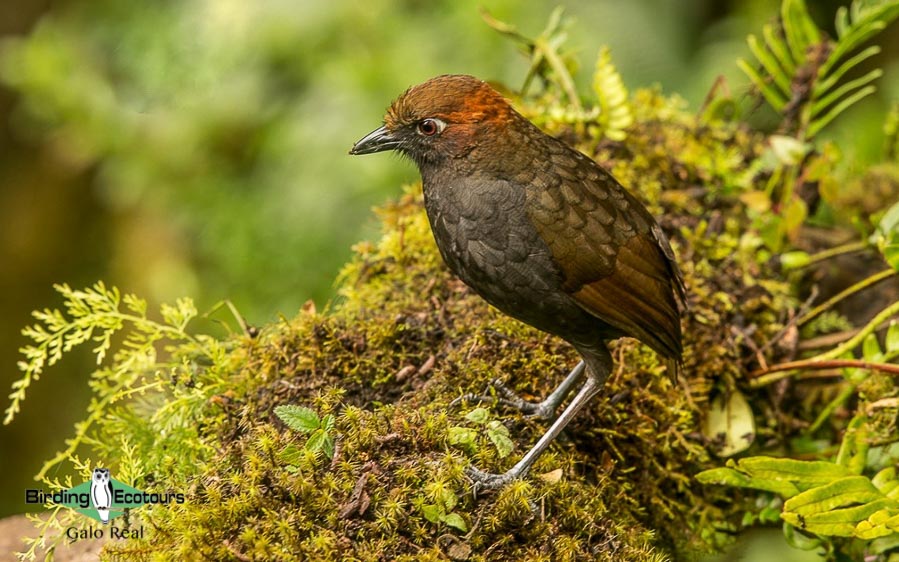
Day 18, 22 nd November 2021. Departure from Quito
After a fantastic 18 days of birding in northern Ecuador we all departed Quito for home without any complications.
Please see the downloadable PDF above with the full species lists included. This is a sample trip report. Please email us ( [email protected] ) for more trip reports from this destination.
NORTHERN ECUADOR – HUMMINGBIRD AND ANTPITTA EXTRAVAGANZA: TOUR-SPECIFIC INFORMATION
PLEASE CLICK HERE FOR GENERAL INFORMATION PERTAINING TO ALL OUR ECUADOR TOURS
This northern Ecuador trip is perhaps the finest birding trip in all of South America, both in terms of infrastructure, birding facilities and the amazing quality of birds on offer. There is no other area in Ecuador where you will be able to enjoy hummingbird feeders that will provide you stunning views of jewels such as Sword-billed Hummingbird , Giant Hummingbird , White-booted Racket-tail , Ecuadorian Piedtail and Velvet-purple Coronet , to name a few. You will also be able to visit antpitta feeding stations where it is possible to see Giant Antpitta , Moustached Antpitta , Ochre-breasted Antpitta , Rufous Antpitta , Chestnut-crowned Antpitta , Tawny Antpitta , Plain-backed Antpitta , Yellow-breasted Antpitta and White-bellied Antpitta . We shall enjoy colorful species such as Plate-billed Mountain Toucan , Moss-backed Tanager , Glistening-green Tanager , Toucan Barbet , Crimson-rumped Toucanet , Yellow-throated Toucan , and classic Andean species such as Andean Condor , Rufous-bellied Seedsnipe and Torrent Duck . We will also be targeting a number of secretive specials such as Ocellated Tapaculo and even Banded Ground Cuckoo .
ARRIVAL INFORMATION
Our tour will start and end in the city of Quito, Ecuador’s capital city. You can reach Quito’s Mariscal Sucre International Airport (UIO) with direct flights from the USA, Spain, the Netherlands and Panama. Please e-mail us before you book any flights, as the information shown here is just an initial guide. You might wish to consult your travel agent to book your most convenient flight, and please feel free to contact us if you need any further guidance. Your tour leader will meet you at Quito Airport (waiting for you with the Birding Ecotours logo clearly displayed) and will then transfer you to your comfortable hotel. Please remember to keep your luggage tags, as they are normally required to exit the terminal building at Quito Airport. Please be aware that most international flights arrive in Quito in the afternoon or evening, and as such, we do not have any birding activities planned for the first day. If you arrive on an early flight, you will be transferred to the hotel but may have to wait until check-in is available (usually in the early afternoon). For an early check-in, you might be charged extra directly by the hotel; this cost is not included in the Birding Ecotours tour price.
When filling out the customs declaration form, please use the below address for the hotel:
Hotel José de Puembo, Manuel Burbano S7-150 y San Fernando Puembo, Quito, Ecuador
DEPARTURE INFORMATION
Our tour will end in Quito after a wonderful 17 days and 16 nights in northern Ecuador. On the last morning your tour leader, or one of our tour representatives, will arrange your transfer to Quito Airport from where you can to catch your flight home.
PHYSICAL REQUIREMENTS AND PACE
We qualify this trip as moderate, with most of the birding consisting of walking along roadsides, although some of these walks may lead up and down hills. We shall, however, also face some steep trails on the eastern and western slope of the Andes and some of these trails can get muddy at times. Some people have described the up and down walking as being difficult. We do think this trip might be difficult for people with back, walking, and balance problems or for those who are not used to a birding trip with early morning starts. However, we will spend quality time sitting and enjoying hummingbird and antpitta feeders and looking for birds around our lodges.
Keep in mind that (as is usual on most birding trips) we need to be awake very early in the mornings, and pre-dawn starts are in order each day. We normally spend the whole morning birding in the field, return to the lodge for lunch, and then provide a little rest before continuing our birding in the afternoon. Your guide will sometimes invite you to look for owls at night, but this is an optional activity that you can skip if you feel tired. Some people prefer to rest, skipping birding in the afternoon; this can be done at those lodges when we are staying more than one night. When we do birding stops while traveling from location to location, people who feel tired do not have to follow the group and can remain in the vehicle. This trip does not have any particularly long drives nor does it require taking any domestic flights.
Roads can be very bumpy and rocky which can pose problems especially for people with back problems.
ATM MACHINES & PAYMENT METHODS
ATMs will be very limited on this tour. The most convenient place to draw money (Ecuador’s official currency is US dollars) would be at Quito Airport, before the start of the tour. There is an ATM in Bancos near Mindo, which can be visited in case of emergency, however not all international cards are accepted here. Please read the section regarding money and currency exchange in our general information for all Ecuador tours .
Sachatamia Lodge , Hotel José de Puembo and Termas de Papallacta accept credit card payment for extra services. Guango , Cabañas San Isidro and WildSumaco Lodges do not accept credit cards.
We will reach our highest elevations on this tour at Papallacta Pass at 14,700 feet (4,500 meters) above sea level. Please consult with your doctor if you have any medical conditions that may be aggravated by spending time at high elevations. Spending a few hours at high elevation is not normally a problem, but some minor symptoms might appear, like a slight headache and mild dizziness. A regular Paracetamol (400 mg), taken two hours before we reach this elevation, should prevent any headache trouble. We suggest you avoid eating a large dinner on the previous evening before reaching altitude, as this will help with digestion. Quito city is located at 9,350 feet (2,850 meters) above sea level.
We ask you to be ready for all kinds of weather on this trip. The Chocó forests, below Mindo, are humid and warm, reaching a maximum of 82°F (28°C) and a minimum of 59°F (15°C) at night. Chocó forests are probably one of the most humid natural areas in the world, and during our stay here, we will likely experience some rainy days, which should, however, not impact our birding. Quito has a minimum temperature of 57°F (14°C). The eastern slope of the Andes, with the exception of WildSumaco, has areas that are cold at night. The coldest area of our trip is likely to be the Papallacta Pass where the temperature descends to 41°F (5°C).
Laundry services are available at all lodges on this northern Ecuador trip however please note that laundry fees are not included in the tour price.
Wi-Fi is available in Quito, Mindo and Termas de Papallacta, while internet is very limited or non-existent at Guango, Cabañas San Isidro and WildSumaco. You might consider purchasing a SIM card at Quito airport on the day of your arrival.
PHOTOGRAPHY
When photographing at hummingbird or antpitta feeders, we are not allowed to alter the environment in any way – even though you may want to create a more natural environment for photography.
Most of the meals will be fixed menus at the lodges and hotels where you will always have a vegetarian option. Please let us know about any dietary preferences in advance.
We will have a private van for the whole tour with plenty of room for everybody.
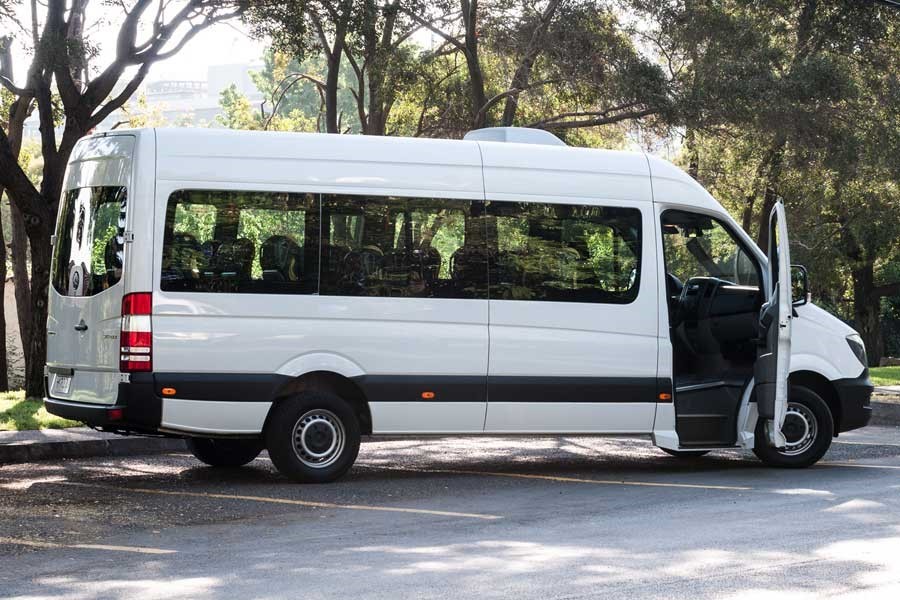
Ecuador General Information
Download Northern Ecuador Tour Information
‘Galo and his driver Nestor were a dream team. They were very experienced and we saw ten times more birds and other wildlife than if we had tried to guide ourselves. We saw over 200 new birds including 49 different hummingbirds. The bird of the trip was the Cock-of-the-Rock (both east and west versions) while the Tayra (east and west versions) and Mountain Tapir showings were amazing. We would highly recommend this trip…and guide team.’
Tim and Kay
‘We birded with Galo Real for eight days in Ecuador as an extension from a family trip to the Amazon Basin and the Galapagos. He is a good birder with a great ear for the bird calls and knowledge of all sites. He is very agreeable and was patient and considerate of our needs and capabilities. We look forward to birding with him again.’
Jim and Barbara
All Rights Reserved, Birding Ecotours
Join our newsletter for exclusive discounts and great birding information!
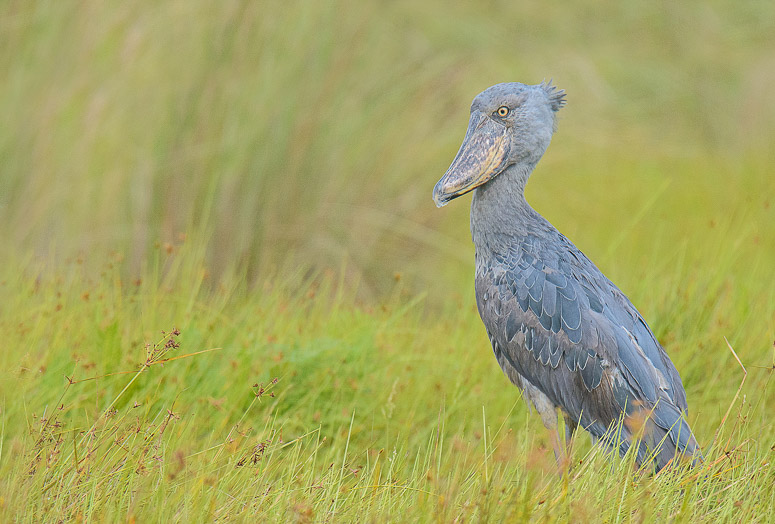
A Guide to Ecuador's Different Hummingbirds

Founder, Not Your Average American
Ecuador is home to 152 species of hummingbirds and while it seems near impossible to see them all, how about trying to spot one from each family. Here are short descriptions of some iconic species that should be easy to find.
The hermits.
Hermit hummingbirds are fast, shy and have long curved beaks. While they are not brilliantly colored, they do have the most beautifully fanned tails when they stop mid-flight to check out a feeder or a hiker on the trail. The White-whiskered Hermit is almost guaranteed to visit feeders in Mindo and Milpe.

The Violetears

The Sunangels
Sunangel hummingbirds tend to live in isolated pockets and can be harder to find. The Gorgeted Sunagel is found low on the West Slope and might be seen at some of the lodges in Milpe. The Amethyst-throated is found deep in the south, the nearby borders of Peru lodges in Zamora being its most likely location.

Become a Culture Tripper!
Sign up to our newsletter to save up to 500$ on our unique trips..
See privacy policy .

The Thorntails
These tiny birds stand out for their impressive little tails. All Thorntails are green with a white band on their backsides. Different species live on either side of the Andes. The Green Thorntail can be seen in Milpe and the Wire-crested in Wild Sumaco.

The two species of Sylphs look almost identical with their neon blue and incredibly long tails but they live on opposite sides of the Andes. The West Slope version is the Violet-tailed Sylph and can be seen at feeders in the Tandayapa Valley. It is a notoriously difficult bird to photograph for its speed and shyness at the feeders. The Long-tailed Sylph can be seen on the East Slope from Guango Lodge down to Cosanga.

The Thornbills
Not all hummingbirds have long beaks. The Thornbills and their close cousins the Metaltails have very short, thin beaks, perfect for high altitude flowers. The Purple-backed Thornbill can be seen at the Yanacocha Reserve near the rocky mountain faces where it nests and the Blue-mantled Thornbill can be found on the hiking trails near the Papallacta Pass.

The Pufflegs
The Puffleg hummingbirds are just plain adorable with their cotton ball ankle coverings. The Yanacocha Reserve is home to the Sapphire-vented Puffleg, the Golden-breasted Puffleg and the rare Black-breasted Puffleg. The Booted-rackettail could also be called a Puffleg and it can be seen on the West Slope in Tandayapa and Mindo and on the East Slope in Cosanga, where it has tan colored cotton balls instead of white.

The Coronets
These funny hummingbirds are the clowns of any hummingbird garden. Coronets love to fight each other, they always land with wings up, hold them in place a brief second, then perch comfortably. If you’re after dynamic shots of active birds, then head to see the Chesnut-breasted Coronet in Tandayapa Valley, Mindo, and San Jose de Milpe, the Velvet-breasted at the Angel Paz Lodge, or the Chesnut-breasted at Guango Lodge, Cosanga, or Wildsumaco.

The Brilliants
The Brilliants have long, thick beaks, strong bodies and usually some kind of bright feathers at the base of their throats. The Empress Green and the Green Crowned are West Slope birds, the Violet-fronted and Black-throated live east of the Andes, while the Fawn-breasted can be found on both slopes.

The Woodstars
The Woodstar hummingbirds are some of the smallest in Ecuador. When Woodstars approach a feeder, they sound like giant bumblebees, buzzing their way to nectar. The females are rather plain but the males have brilliant hot pink or purple throats that shine even in the dim cloud forest light. Look for a variety of Woodstar at just about any hummingbird garden in Ecuador.

The Sapphires
The Sapphires all share a version of bright green, deep blue and copper brown coloring, just in slightly different variations. But the most colorful is the Golden-tailed Sapphire, found in the Amazon Basin and at the Wildsumaco Lodge.

The Woodnymphs
These small, round hummingbirds are super colorful, with brilliant green and blue iridescent feathers. The Crowned Woodnymph can be seen in the Milpe region west of the Andes and the Fork-tailed is found in the Amazon Basin east of the Andes.

KEEN TO EXPLORE THE WORLD?
Connect with like-minded people on our premium trips curated by local insiders and with care for the world
Since you are here, we would like to share our vision for the future of travel - and the direction Culture Trip is moving in.
Culture Trip launched in 2011 with a simple yet passionate mission: to inspire people to go beyond their boundaries and experience what makes a place, its people and its culture special and meaningful — and this is still in our DNA today. We are proud that, for more than a decade, millions like you have trusted our award-winning recommendations by people who deeply understand what makes certain places and communities so special.
Increasingly we believe the world needs more meaningful, real-life connections between curious travellers keen to explore the world in a more responsible way. That is why we have intensively curated a collection of premium small-group trips as an invitation to meet and connect with new, like-minded people for once-in-a-lifetime experiences in three categories: Culture Trips, Rail Trips and Private Trips. Our Trips are suitable for both solo travelers, couples and friends who want to explore the world together.
Culture Trips are deeply immersive 5 to 16 days itineraries, that combine authentic local experiences, exciting activities and 4-5* accommodation to look forward to at the end of each day. Our Rail Trips are our most planet-friendly itineraries that invite you to take the scenic route, relax whilst getting under the skin of a destination. Our Private Trips are fully tailored itineraries, curated by our Travel Experts specifically for you, your friends or your family.
We know that many of you worry about the environmental impact of travel and are looking for ways of expanding horizons in ways that do minimal harm - and may even bring benefits. We are committed to go as far as possible in curating our trips with care for the planet. That is why all of our trips are flightless in destination, fully carbon offset - and we have ambitious plans to be net zero in the very near future.

Guides & Tips
2024's ultimate adventure bucket list: thrills and spills await.

The Best Private Trips to Book With Your Sports Club

Food & Drink
Where to find the finest chocolate in the world.

Places to Stay
The coolest hotels in the world you can stay at with culture trip.

Local Insider - Highlights from Culture Trip's Adventure in Ecuador

Top Single Travel Adventures to Take with Culture Trip
See & do, the solo traveler’s guide to ecuador.

How to Visit the Most Active Volcanoes in Ecuador

The Best Places to Visit in Ecuador

The Best Waterfalls in Ecuador You Can Visit

Journey to the Middle of the World: How to Reach Ecuador’s Equator Line

The Best Hotels in Ecuador for Every Traveler
Winter sale offers on our trips, incredible savings.

- Post ID: 1434068
- Sponsored? No
- View Payload
- Birding Tours
- Galapagos Island
- Student Groups
MAGIC BIRDING CIRCUIT OF ECUADOR
- Birdwatching Tours & Itineraries
- Scheduled Tour Dates
- Birding List
- Request Pricing Information
- Birds at The Magic Birding Circuit Photos by George Cruz
Magic Photography Circuit
- Bird & Wildlife Photo Tours
- Canopy Islands Wild Photo Center
Magic nature Eco-Tours
- Eco-Tours for Nature Lovers
The Galapagos Islands
- Galapagos Island Cruise
Reading Interest
- San Jorge Reserve Maps
- Commentaries from Recent Guests
- Old Colonial Quito City Tours
- Quito Clothes Drive
- San Jorge Books
Reservations

THE MAGIC BIRDING CIRCUIT HUMMINGBIRDS OF ECUADOR
Ecuador is an ecological miracle. It is no larger than the state of Colorado and ranks among the top ten most ecologically diverse countries in the world. Ecuador is also a wonderful place to watch hummingbirds. Hummingbirds are an important part of Quito’s cultural ancestry, as well as that of all America: A “Land of Hummingbirds ". Many of Ecuador's hummingbirds are brightly-colored and some are so distinctive than even the most inexperienced bird-watcher can easily identify them.
I am very sure that if Charles Darwin had not arrived in the Galapagos Islands, but instead had arrived in Continental Ecuador, he would have used hummingbirds as the best evidence for his theory of evolution. There is no other bird with such morphological adaption to their habitat and food. Darwin could have selected for his scientific exploration the Sword-billed Hummingbird, the Tawny Bellied Hermit and the Purple Backed Thornbill. This last one is located at Hosterìa San Jorge/Quito, in the eastern foothills of the Pichincha mountain range. For sure, Darwin would be curious seeing this hummingbird flying in the cold and very high habitat of the Ecuadorian highlands.
The Sword Billed Hummingbird lives in the temperate zones between 2500 to 3500 meters o.s.l. in the Andean range. The curious thing about this big hummer, compared with the size of his cousins, is that it has an enormous bill which is not in harmony with his body. The bird looks like his favorite flower, the long and colored Guanto Rojo (Guantus guantus). This species develop a tremendous bill to permit it to absorb the valuable nectar which is the basis for its subsistence. The bill also distributes pollen in nature. This hummingbird can be seen in Hosteria San Jorge/Quito.
The Tawny Bellied Hermit is a hummingbird that lives in cloud forests and in subtropical areas. His habitat ranges from 1300 to 2200 meters o.s.l. in both Ecuadorian Andes ranges (east and west). The bird is considered middle sized-it is not the biggest or smallest of the hummingbirds. The bill is curved and long almost like the White Tipped Sickelbill. This bird is structured so his bill can absorb properly the nectar of his specialized flower the heliconias. This popular “bird of the paradise” plant requires birds to have a curved and long beak in order to reach the nectar. This also guarantees the future existence of the bird of the paradise as the bird acts as a polinizer. It is easy to find this bird flying freely in the surroundings of San Jorge de Tandayapa Hummingbird Reserve in the Cloud Forest.
Other great example of adaptation according to necessity is the Purple Backed Thornbill. It is localized in two Andes ranges and always in temperate forests between 2500 and 3400 meters o.s.l. The bird is scarce but sometimes you can find them in small groups. This hummer has the smallest bill of all hummingbirds in Ecuador! He does not need a long bill since they love to absorb the nectar of the Sacha Capulì (Valea stipularis). This bush produces a small pink flower. Other wonderful example of adaptation!
If Darwin climbed the Pichincha mountain and a how small hummer actively flies between the Chuquirahuas bushes (Chuquiraga jussieui), surrounded by a cold and windy glacier environment at high altitude, he probley would have immediately started to look for scientific explanation! We are now referring to the hummingbird Ecuadorian Hillstar. This is a subspecies that lives only in the Chimborazo mountain which has the highest altitude for all around of Ecuador: from 3600 to 460 meters o.s.l.!!! This bird has adapted his body to extreme climate situations such as extremely cold temperatures, glacial winds, short food variety, etc. None of these elements affect him! Very interesting, right?
Join in on one of our Magic Birding Circuit tours next time you are in Quito. Our four private birding reserves offer up to 60 possible hummingbirds species on our trails, with feeders for viewing at all three birding lodges. We welcome your visit soon!
View Hummingbird Itinerary
The lodges and surrounding gardens/grounds are immaculately maintained and set in the most beautiful scenic surrounds. The staff are extremely friendly and it feels like they can't do enough for you. The food was absolutely delicious authentic Ecuadorian food and there was so much of it! The birdlife is staggering. An array of hummingbirds buzz around your breakfast table or bedroom window dashing from flower/feeder to flower/feeder. We saw emerald toucanettes, toucans, cock of the rock, quetzals, all sorts of tanangers...the list is endless! It seemed every which way we turned another brightly coloured bird was there to amaze us. Our guides were wonderful, spotting birds we never would of seen or found by ourselves. They were so enthusiastic and passionate and had excellent English speaking skills. Dana ~ Brisbane, Australia
The three Lodges I visited, San Jorge Eco-Lodge, Tandayapa and Milpe are fantastic locations for seeing and photographing Humming Birds without having to walk any great distances. The staff are incredibly efficient, attentive and accommodating. They will give you space if you need it and literally "jump" whenever you ask for any assistance, not that one expected the "jump". I was amazed at how flexible they were when it came to arranging meal-times etc and how helpful they were when it came to sharing their knowledge of birds. Tandayapa, for example is one of the most beautiful places I have visited due to the fact that the clouds constantly change the mood of the place. It warrants a day or two just sitting in the rooms which have beautiful/majestic views of the Cloud Forests and a few days more enjoying the birds. The whole visit from booking to departure ran like clockwork and my only disappointment was that I did not add a few extra days at Tandayapa. The birds kept me glued to the feeder area and I only enjoyed glimpses of the lovely forest when waking and just before nightfall. Tony – Cape Town, South Africa
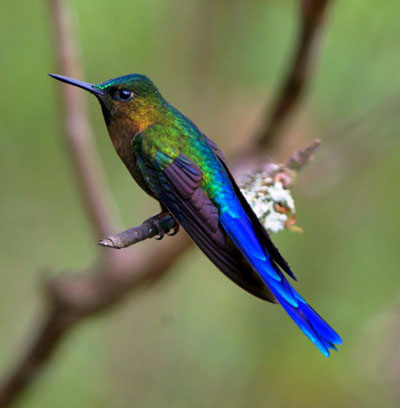
Cheryl Korowotny International Director The Magic Birding & Photography Circuit SAN JORGE ECO-LODGES & BOTANICAL RESERVES Quito – Tandayapa – Milpe - Cosanga - Estero Hondo-Sumaco Bajo-Guacamayos Ecuador – South America Email: [email protected] (877) 565-2596 Toll Free USA & Canada.
Magic Birding & Photography Circuit Map
San Jorge has been awarded the Trip Advisor Certificate of Excellence for the past 11 consecutive years!
CONTACT US (593) 99 796-6818

eCUADOR TOURS
Ecuador is an extraordinary biodiverse country that covers a wide variety of habitats. Its geographical location in the Tropics right on the equator, the influence of the ocean’s currents and the fact that it’s crossed by the largest mountain range on the planet -the mighty Andes- allows for the presence of multiple microclimates in 4 well- defined natural geographical zones: Andes, Amazon, Coast and Galapagos Islands. During our trips you’ll be amazed with the richness of this small charming place. Nowhere else is it as easy to experience such a range of habitats, so close to each other and yet so different.
DAY TRIPS CLOSE TO QUITO
Quito has multiple fascinating biodiverse destinations close enough to the city for perfect for a day scape, which will allow you to experience and admire the lush evergreen slopes of the tropical Andes to majestic Volcanoes surrounded by paramo. Join us if you have free days and wanted to have a break from the big city to get acquainted of the magnificent diversity so close to the equator.
HUMMINGBIRD ROUTE & WESTERN SLOPES
Explore the most diverse corners the western Andean slopes. Once you get in this unique tropical Andean ecosystem, hummingbirds will take your full attention. The cloud forest concentrates the highest diversity of these winged jewels. Ecuador host over 130 species of hummingbirds!. This tour will allow you to photograph them and enjoy their unmatched beauty.
AMAZON RAINFOREST & EASTERN SLOPES
Ecuador is an outstanding country with the highest concentration of bird species per square km in the world. The Yasuni National Park is a uniquely diverse area that covers over 9,800 square kilometers (2 million acres) of pristine amazon rainforest. The Park was declared a Biosphere Reserve in 1989 by UNESCO; it is a true hot spot of biodiversity where amphibian, bird, mammal, and vascular plant diversity reach their maximum levels within the Western Hemisphere.
SOUTHERN ECUADOR
Our Southern Ecuador tour is the most comprehensive tour of the Tumbesian Region, a diverse region, with a rich habitat diversity that host as many as 40 endemic birds species shared only with adjacent parts of northern Peru. This tour cover the coastal region, wetlands, arid scrub, deciduous forests, tropical rainforest, montane subtropical forests, high altitude elfin forests, and páramo
HARPY EAGLE PHOTO TOUR & LIMONCOCHA
A new Harpy Eagle nest was discovered in late 2020 within a high priority area for conservation at the Limoncocha Biological Reserve in the amazonian rainforest of Ecuador. This breeding pair is already caring for and guarding a chick. This couple is nesting in a very accessible zone- only a 20 minute boat ride from Limoncocha and a short 20 minute walk along a beautiful flat easy trail from the Napo River. We have developed a comprehensive tour together with community guides and members of the indigenous village of Limoncocha. This successful nest is currently protected and will serve as a powerful tool to promote the conservation of the area through the development of sustainable activities with the direct participation of the community members in activities related to tourism, research, education and conservation.
BIRDS AND MAMMALS OF THE ANDES
The surroundings of Quito provide different opportunities to find wild bears and other emblematic fauna with good chances of close encounters. Spectacled Bears can be found in the cloud forests and paramos (highlands) around the District of Quito. However, because of the dense vegetation in cloud forests, the encounters are difficult and depend on the availability of a special fruit in a private reserve and the surroundings (two months every year, no season pattern); or hiking to areas where researchers have deployed camera traps for monitoring the bear populations: exciting, but time- and physically demanding. It is in the paramo, north east of Quito where, in few days, you can increase your probabilities of a great encounter with bears and other Andean wildlife, sometimes close enough to have wonderful views and photographs.
YASUNI NATIONAL PARK AT NWC
Ecuador is an outstanding country with the highest concentration of bird species per square km in the world. The Yasuni National Park is a uniquely diverse area that covers over 9,800 square kilometers (2 million acres) of pristine amazon rainforest. The Park was declared a Biosphere Reserve in 1989 by UNESCO; it is a true hot spot of biodiversity where amphibian, bird, mammal, and vascular plant diversity reach their maximum levels within the Western Hemisphere
GALAPAGOS iSLANDS
Located in the Pacific Ocean some 600 miles off the coast of Ecuador , this archipelago and the surrounding marine reserve have been called a unique “living museum” and showcase of evolution. This “living laboratory” of evolution inspired Charles Darwin’s theory of natural selection, and continues to offer a unique opportunity to explore a pristine natural ecosystem.
TIPUTINI BIODIVERSITY STATION
The Tiputini Biodiversity Station (TBS) is a biological field station established in Amazonian Ecuador in 1994 by the Universidad San Francisco de Quito in collaboration with Boston University. We serve as steward of 638 hectares (about 1500 acres) of primary lowland rainforest approximately 300km (200 mi) East of Quito. TBS is situated on the north bank of the Tiputini River, a southern tributary of the Napo River within the Yasuní Biosphere Reserve.
CUYABENO WILDLIFE RESERVE
This protected area stablished in 1979 protects 590112 hectares and is named after the Cuyabeno River, which overflows in its midpoint creating a 14 lagoon complex and also the most extensive wetlands of the Ecuadorian Amazon. These flooded forests are the territory of dolphins, manatees, alligators, hundreds of birds, anacondas, unique plant species like the guarango tree (Macrolobium), creating a magic and mysterious environment.
PLEASE ASK FOR FURTHER INFORMATION ON ADDITIONAL ACTIVITIES AND DESTINATIONS TO EXTEND YOUR TRIP.
subscribe and receive all our promotions and news in your email
WhatsApp & Cell phone (+593) 997966818 / (+593) 99 2525251
E-mail [email protected].
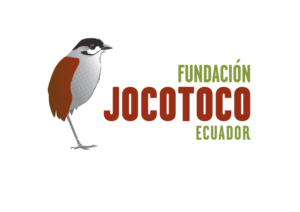
- Carbon Offset
- Book a Tour
- Privacy Policy
- Booking Policies
Copyright © 2024 Neotropical Nature and Birding Trips – Powered by Bitakora Innodesign

IMAGES
COMMENTS
Our Ecuador Birding Tour is dedicated to the enjoyment and appreciation of Hummingbirds, Jewels of the Andes. 1-888-990-5552 [email protected]. Log in / Register. Tours . Browse by destination. ... Our dedicated hummingbird tour seeks to enjoy a vast number of these jewels, most to be comfortably found at the numerous feeders that dot the ...
Hummingbirds of Ecuador's Andean Cloud Forest. Of the over 1,600 species of birds found in Ecuador, at least 130 are hummingbirds. Given the variety of sizes, shapes and colors, it is easy to see why hummingbirds are known as "flying jewels" and "living rainbows.". For many wildlife photographers, they are among the most challenging and ...
Possible 70 Bird Species. Visit Alambi Hummingbird Paradise in the Cloud Forest. This tour is perfect for an Intro Birding Full Day near Quito as you will observe a mix of species like Woodpeckers, Tanagers, Seedeaters, Hawks, Hummingbirds, Antpittas, Spinetails, Barbets, Quetzals, and others. Pick up from your hotel in Quito and arrival to ...
Dates: May 10 - May 16, 2025. (SPACE AVAILABLE) Register for the Workshop. Locations: Best Hummingbird lodges in Ecuador and Quito, Ecuador. Fee: $4,995 USD PP. Single Supplement of $500. Deposit: $1,000. Limit: 4 photographers. 2 photographers per light setup. Duration: 7 days/6 nights.
In short, hummingbirds are extremely accessible in Ecuador and getting a long list of hummingbirds on a single visit is very easy and illustrated well on this hummingbird-focused tour. The highest diversity of hummingbirds on Earth is found in the Andes so that is where we will spend the entirety of the tour, on all three parts.
DAY 2 : ZUROLOMA-OLD NONO MINDO ROAD-ALAMBI- SACHATAMIA. Experience the beauty and biodiversity of Ecuador's Andean cloud forests. Your journey begins with an early pick-up as you head northwest to Zuroloma Reserve, located on the slopes of the Pichincha Volcano. Along the way, you'll travel along the famous Hummingbird Route, passing through ...
We will continue birding in Yanacocha Reserve for about 1 hour observing hummingbirds and possible the critical endangered Black-breasted Puffleg. Lunch at the Reserve overviewing the Canopy of the Upper Mountain Forest and Cloud Forest. Continue to the main Puffleg feeders and afternoon return to Quito. Target Bird Species: Sapphire-vented ...
Hummingbirds (family Trochilidae, order Apodiformes) which has 132 bird species. All the most diverse families therefore belong to the order Passeriformes: Tyrannidae (201 species), Thraupidae (174 species), Furnariidae (106 species) and Thamnophilidae (95 species). Ecuador photo tours, excellent photographic opportunities.
HUMMINGBIRD EXPEDITION + ANDEAN COCK-OF-THE-ROCK LEK. Start your day with some of the most fabulous views over the western Andean slopes. You'll be pick-up from your hotel at 7:00 am. Once you get in this unique tropical Andean ecosystem, hummingbirds will take your full attention. The cloud forest concentrates the highest diversity of these ...
Itinerary. -Pick up at your hotel at 7:30 am. -Head out towards Alambi cloud forest reserve (1 hour drive) - 8:30 Alambi Reserve Hummingbird Garden. Bird feeders will bring otherwise elusive species to very close distances, allowing you to photograph them and enjoy their unmatched beauty. -Drive towards Mindo-Nambillo Reserve.
Neblina Forest Tours offers unforgettable birdwatching tours in Ecuador, providing the unique opportunity to witness the country's spectacular hummingbird species up close. Led by expert guides, these tours emphasize responsible and sustainable tourism practices while showcasing the stunning avian diversity of Ecuador.
Our Southern Ecuador tour sees around 68 different species including the newly discovered (2017) Blue-throated Hillstar! ... Ecuador is so good for hummingbirds that we have even added a special 2-week hummingbird tour to our new Relaxed tour range. This tour offers up no less than 66 different hummingbird species and promises to offer many ...
Ecuador is the Mecca for hummingbird watchers and photographers. With more than 130 of the world's 340 species, it's no surprise Ecuador is known as the "Land of Hummingbirds" and the hummingbird capital of the world. ... Ecuador's birds, plants, insects, vegetation, and pack in some other sightseeing activities like chocolate and coffee tours ...
DIFFICULTY LEVEL & PACE. Our Bird Photo Tours are relaxed with an easy level of difficulty. Small amount of daily walking to the hummingbird feeders, bird feeding stations, and, special hides, where subjects will mostly be between 6 and 12 feet away. Optional moderate trail photography. Bird photography tours and workshops in Ecuador.
Visit 9 different eco-systems with new birds every few days! Pre-scheduled tour dates for 2024. Pre-scheduled tour dates for 2025. DAY ONE - Airport transfer to San Jorge Eco-Lodge & Botanical Reserve/Quito, day to relax and acclimated. Feeders - possible Sword-billed Hummingbird.
Hummingbird photography circuit of Ecuador tours. Come on tour with us in search of some of the 135 species of hummingbirds that can be found in Ecuador. These amazing little dynamos are among the 350 known species of hummingbirds in the world, all of them in the Americas. The hummingbirds of Ecuador are especially dazzling and accessible.
Incredible hummingbirds + Ecuador line | Ecuador, the country that owes its name to the Equatorial line, latitude 0° 0'0', in the Middle of the World you can put one foot in the northern hemisphere and the other in the southern hemisphere at the same time. Learn about characteristics of the first settlers of this area, Quito. ). Don't forget to br
We are resuming our international tours with a trip to our favorite place, Ecuador. This will be a hummingbird-focused tour to the high Andes (the true "hummingbird capital of the world"), similar to our 2019 trip when we saw 60 species of hummingbirds while enjoying world-class accommodations and birding.
Northern Ecuador Birding Paradise - Hummingbird and Antpitta Extravaganza November 2024/2025. Ecuador has the highest bird species diversity per square kilometer on the planet and offers some of the best birding in South America. Due to the short distances to drive, good tourist infrastructure, and wonderful lodges and other facilities for ...
The Woodstars. The Woodstar hummingbirds are some of the smallest in Ecuador. When Woodstars approach a feeder, they sound like giant bumblebees, buzzing their way to nectar. The females are rather plain but the males have brilliant hot pink or purple throats that shine even in the dim cloud forest light.
Hummingbird Tours Ecuador. THE MAGIC BIRDING CIRCUIT HUMMINGBIRDS OF ECUADOR. Ecuador is an ecological miracle. It is no larger than the state of Colorado and ranks among the top ten most ecologically diverse countries in the world. Ecuador is also a wonderful place to watch hummingbirds. Hummingbirds are an important part of Quito's cultural ...
The Choco-Andes region is said to have the highest concentration of hummingbird species in Ecuador. If you're planning a bird-watching trip to Ecuador this should be on your list. The lowlands of the Choco region have the worlds greatest concentration of restricted-range endemic species. The Mindo Valley is in this region, it's one of the ...
Once you get in this unique tropical Andean ecosystem, hummingbirds will take your full attention. The cloud forest concentrates the highest diversity of these winged jewels. Ecuador host over 130 species of hummingbirds!. This tour will allow you to photograph them and enjoy their unmatched beauty.